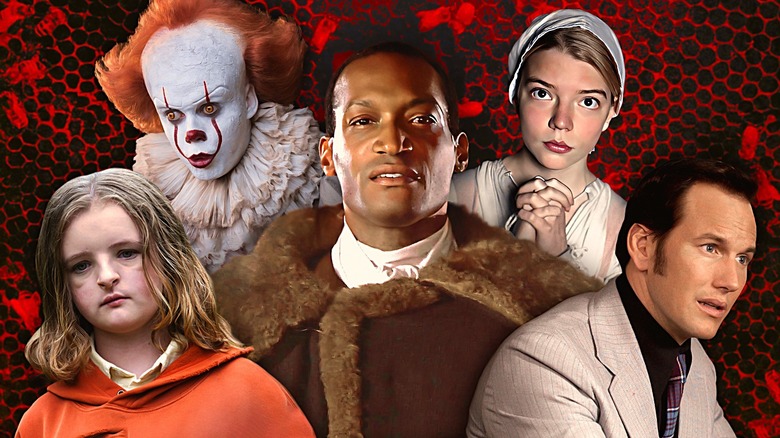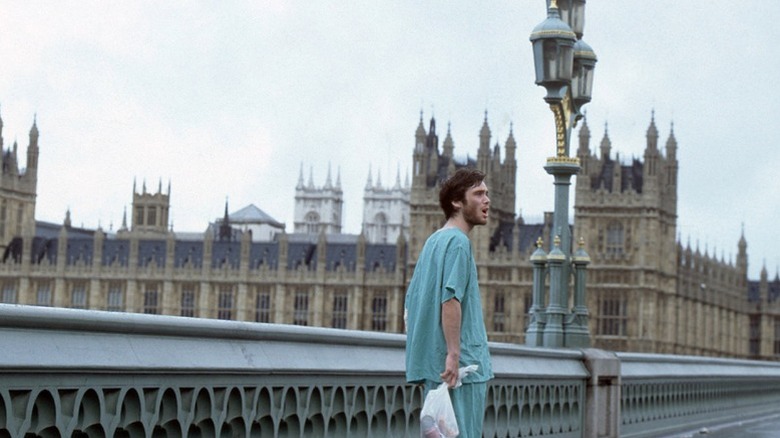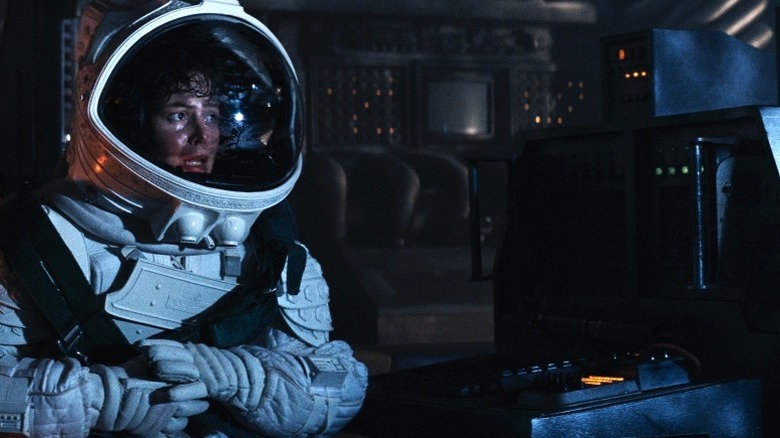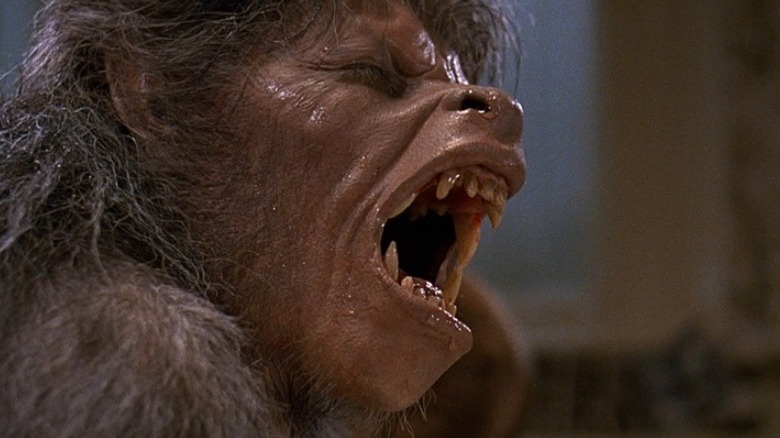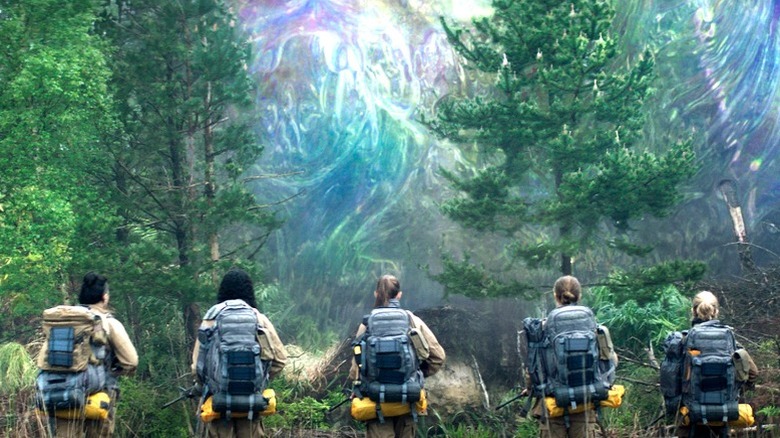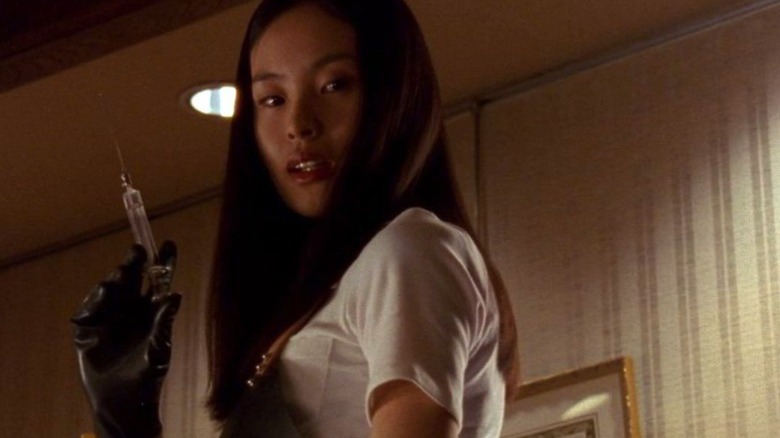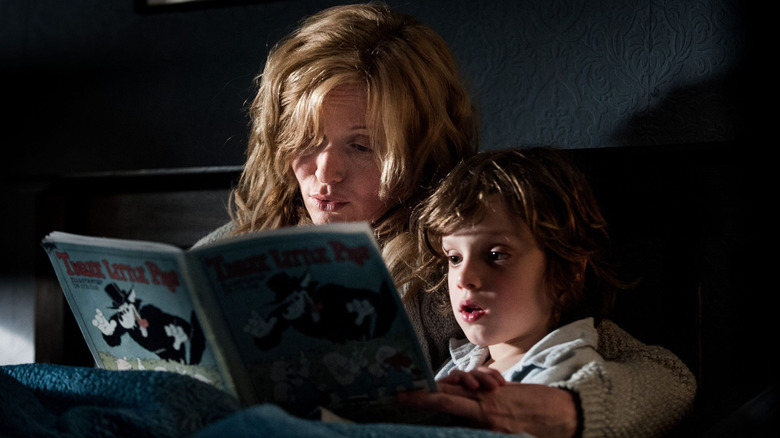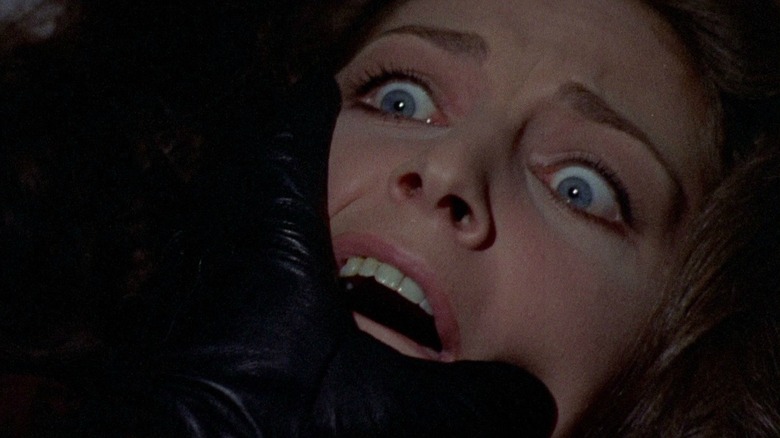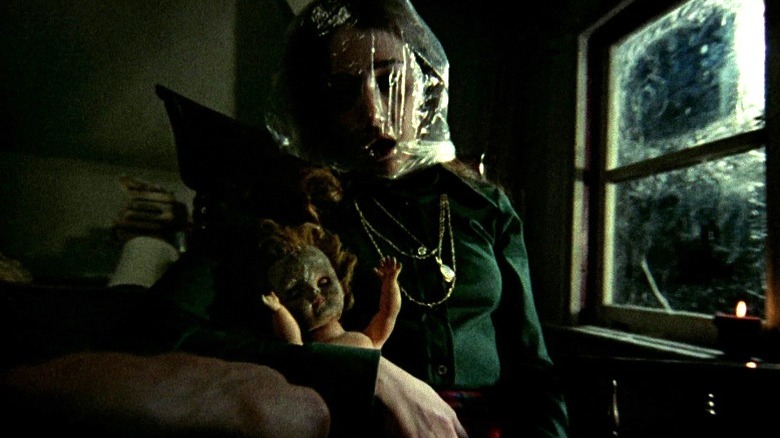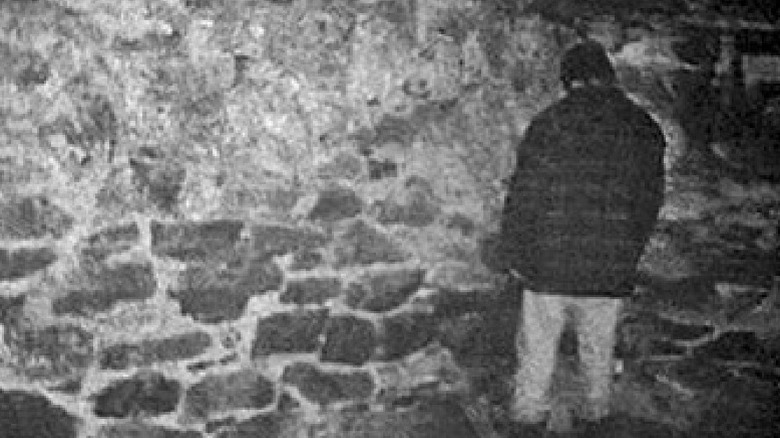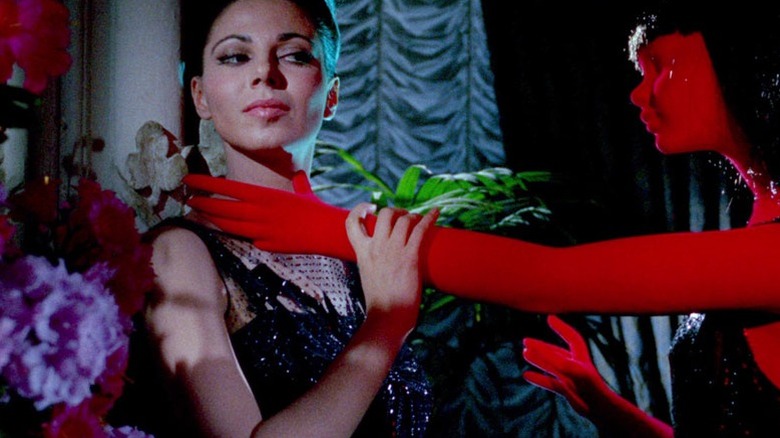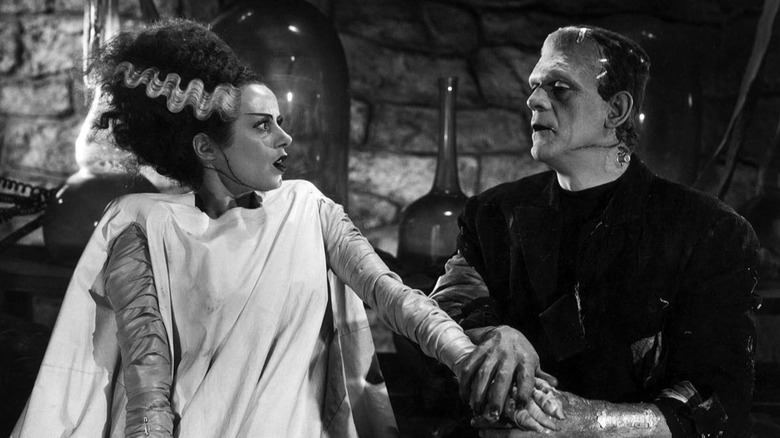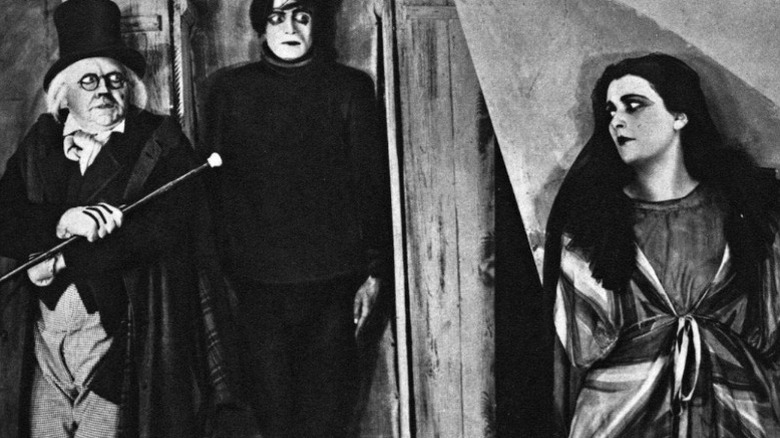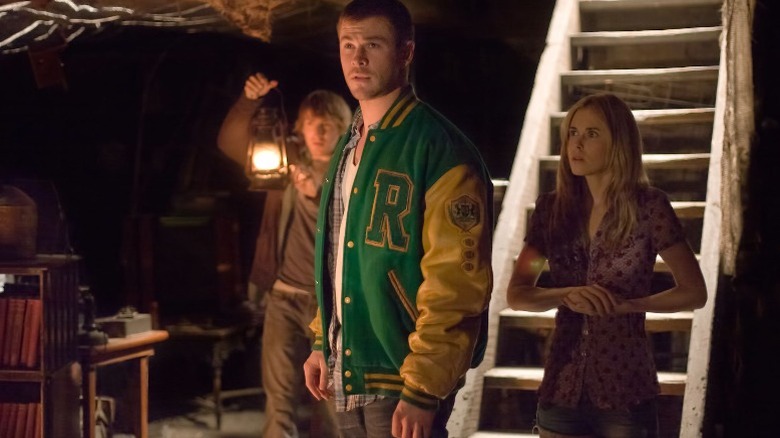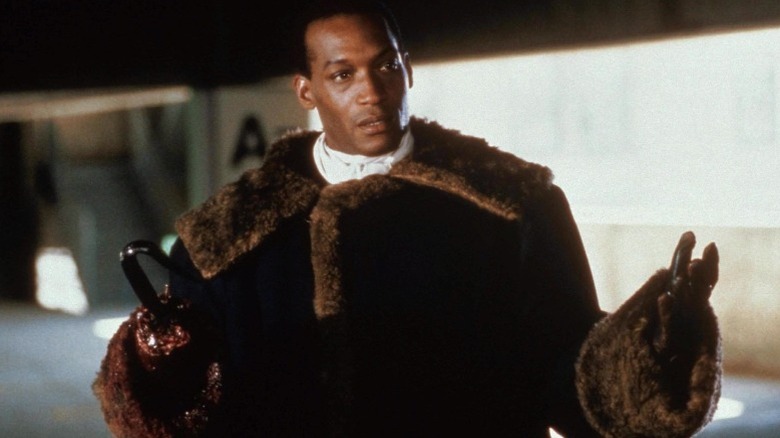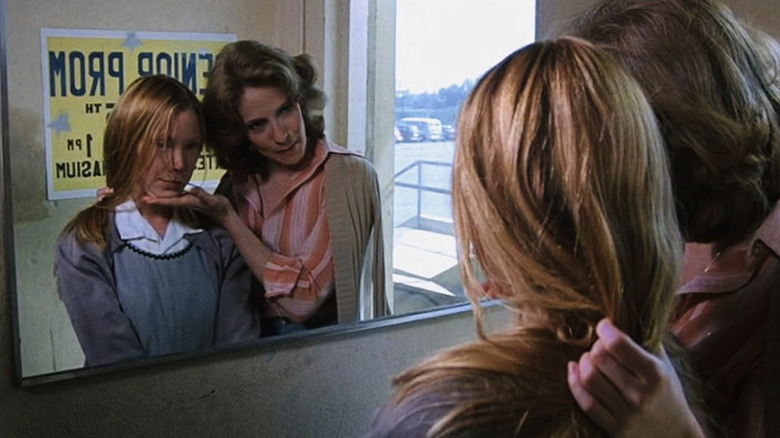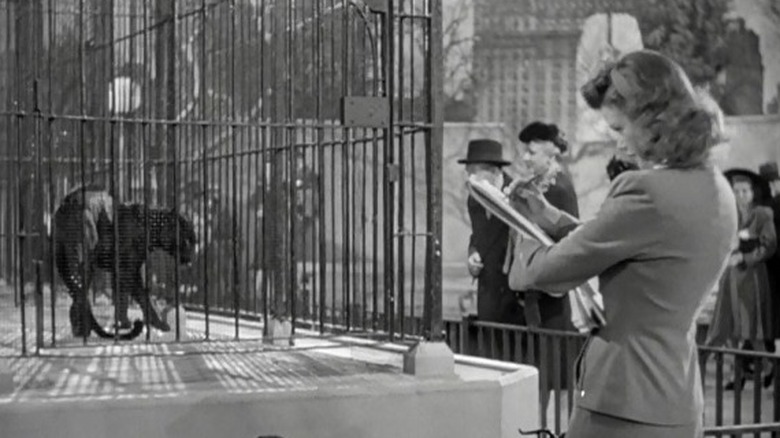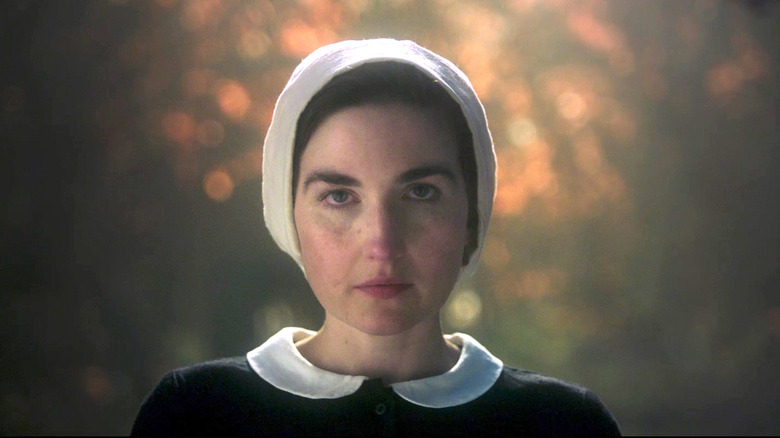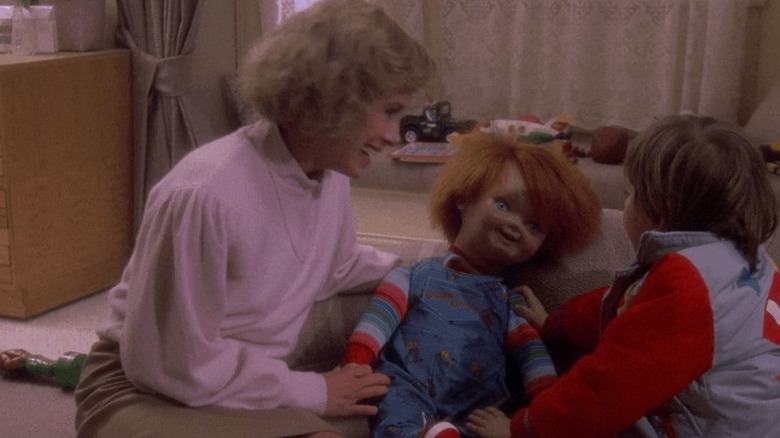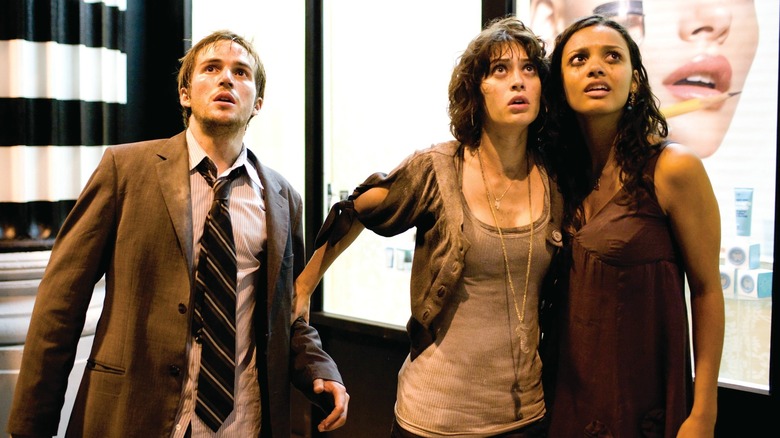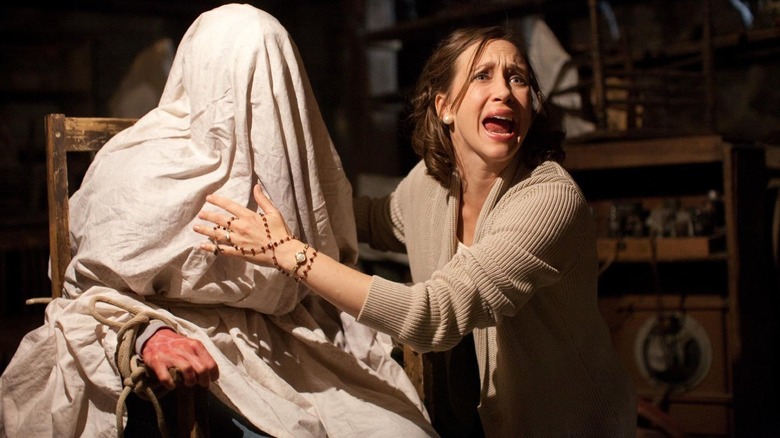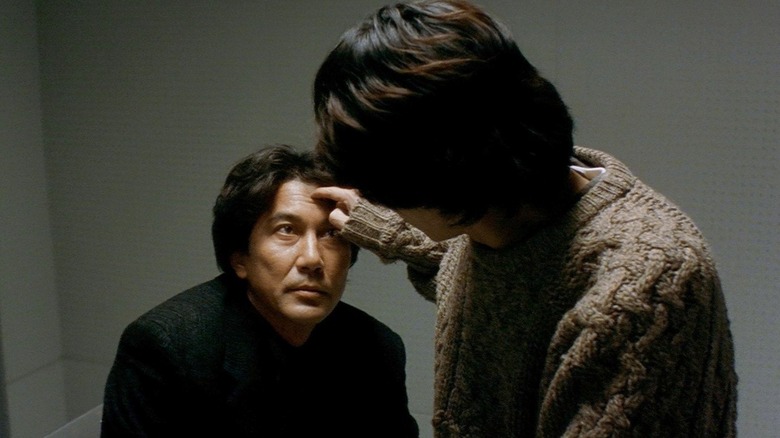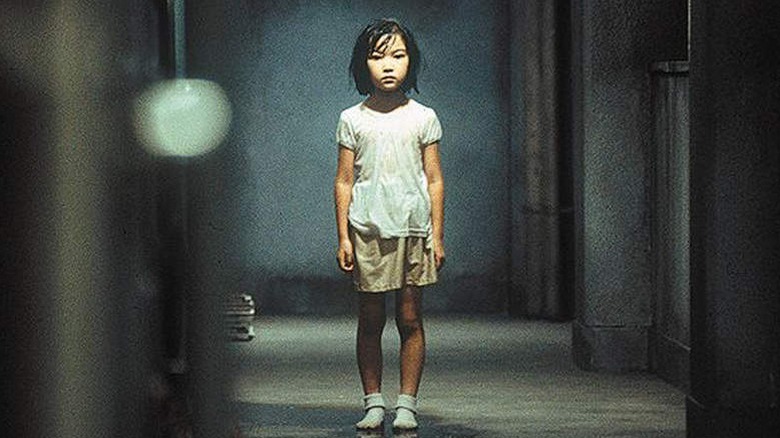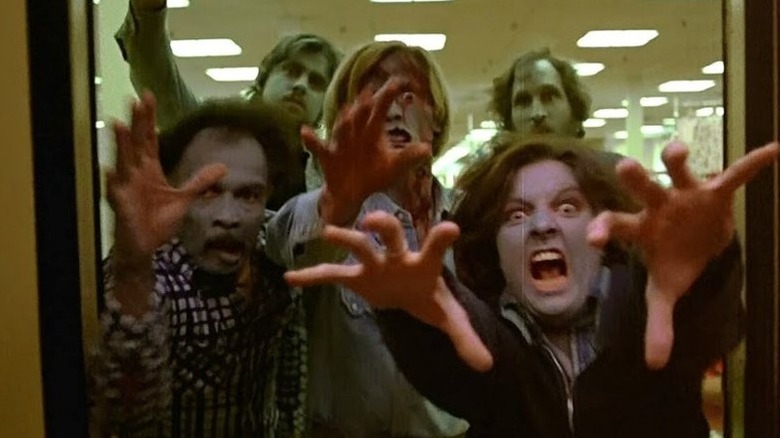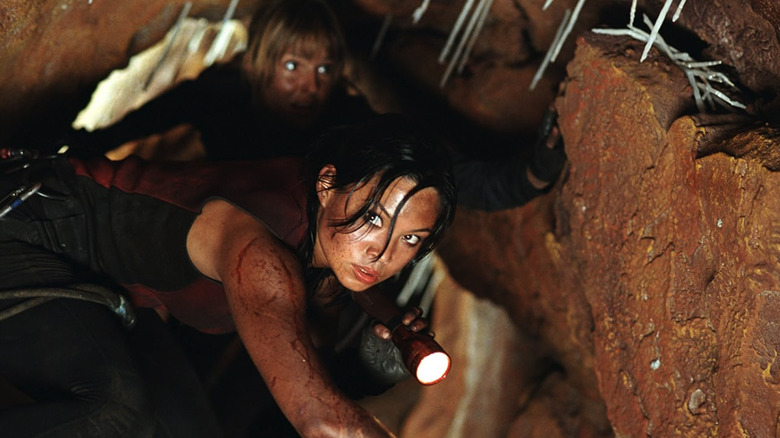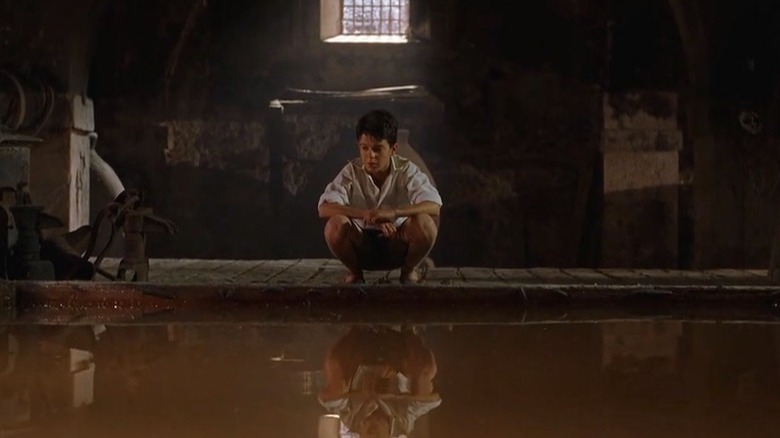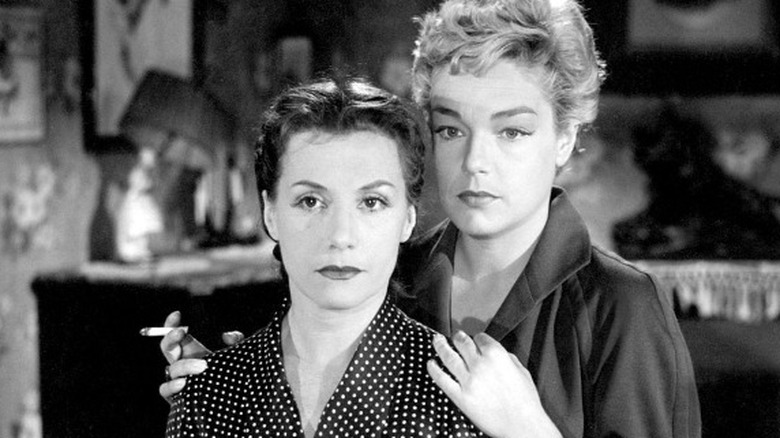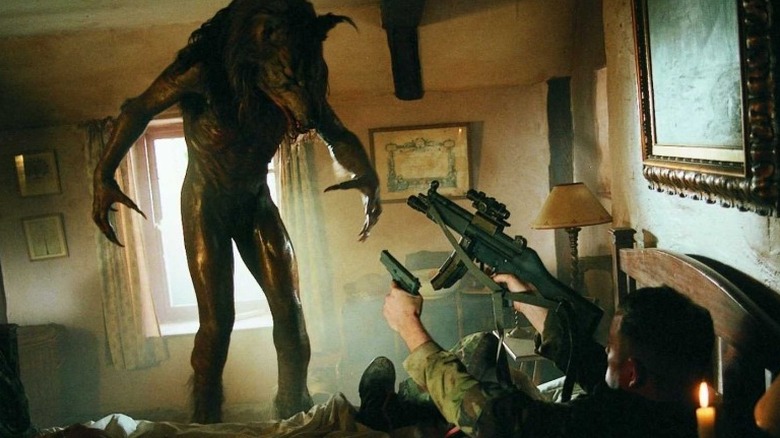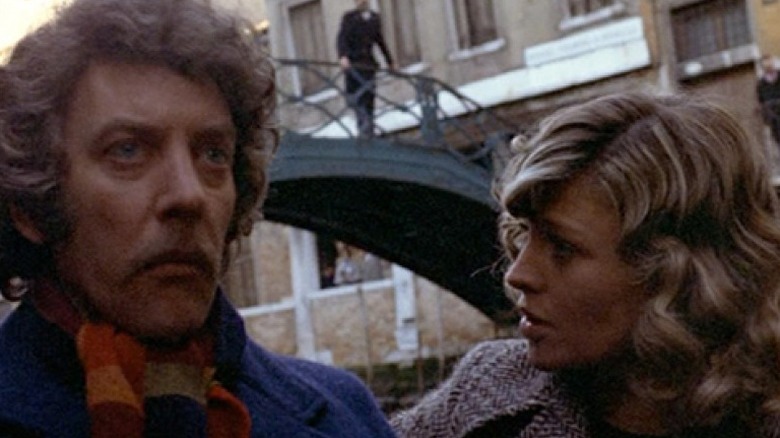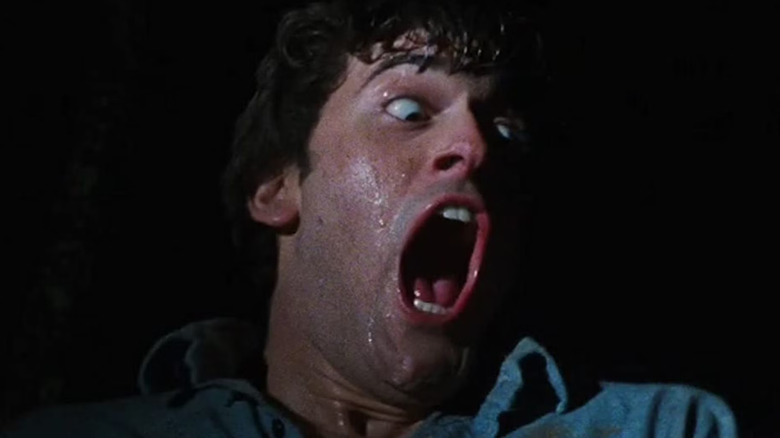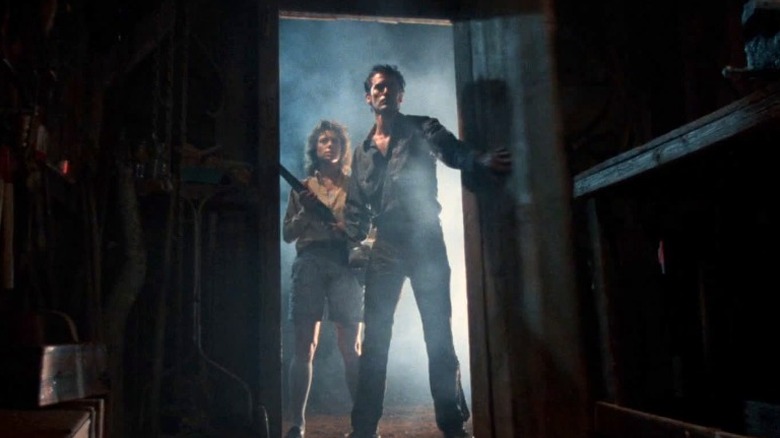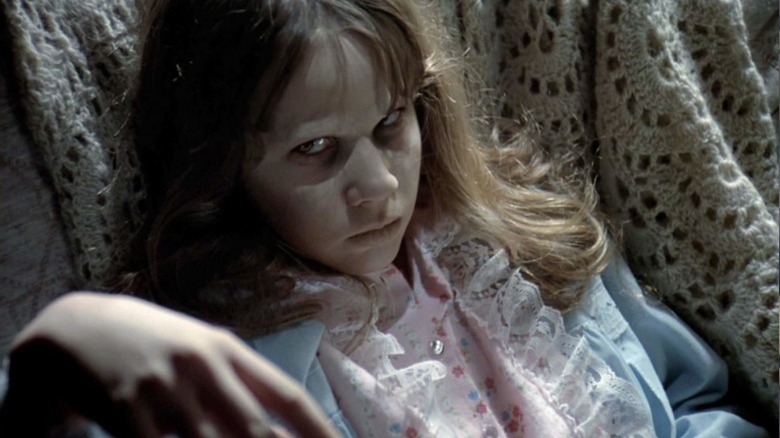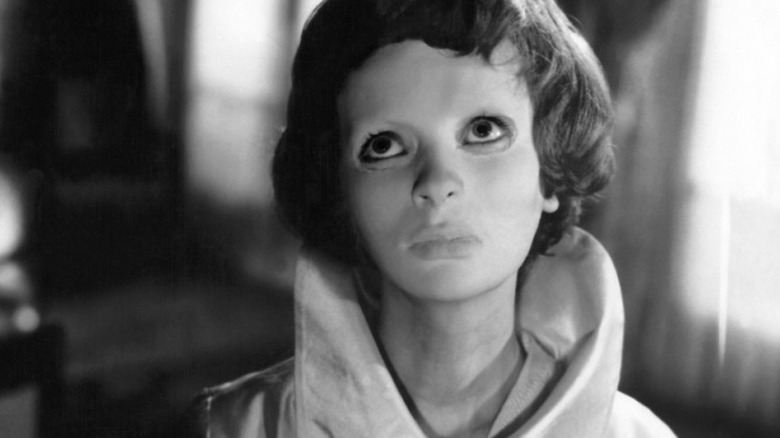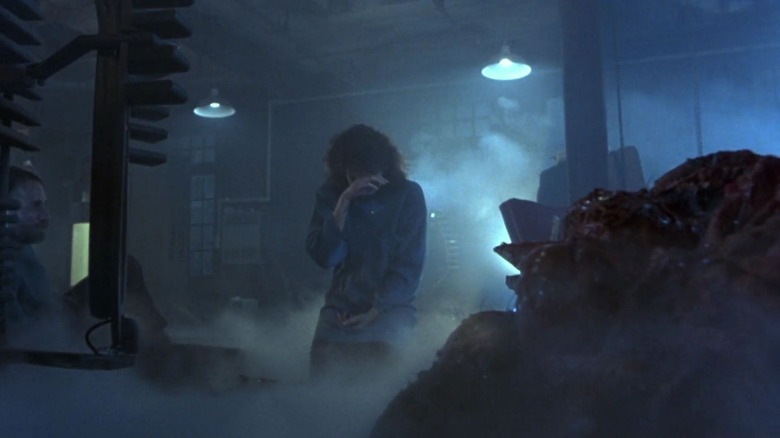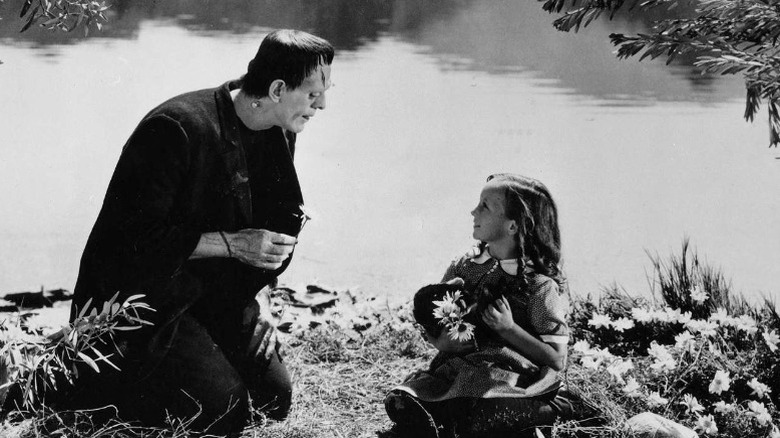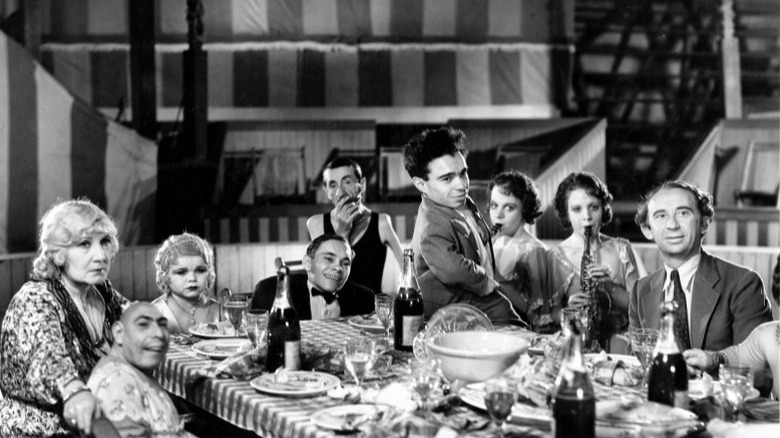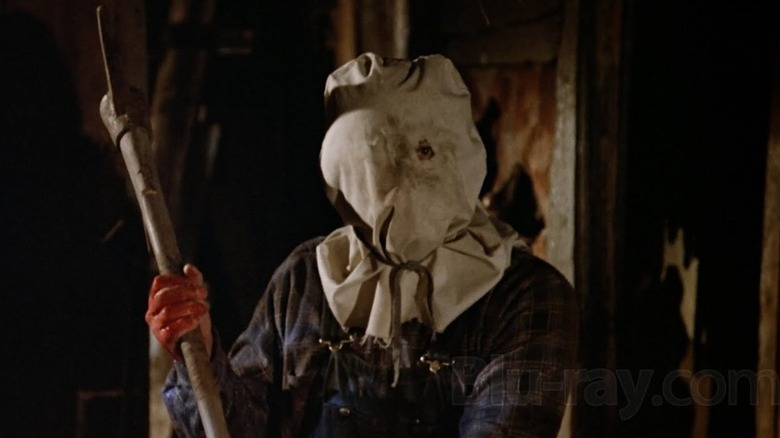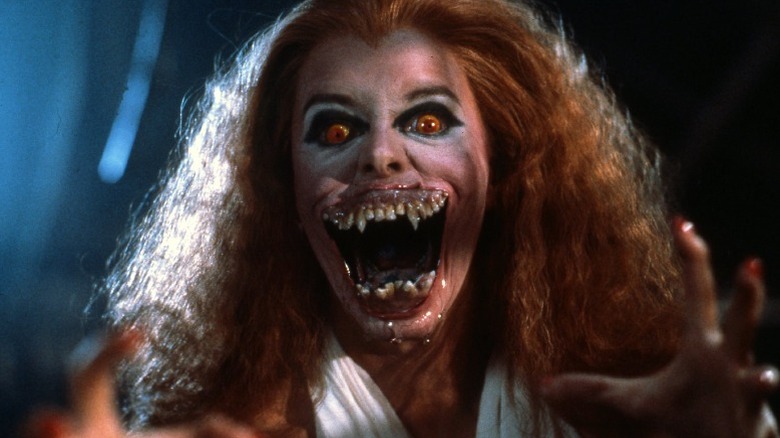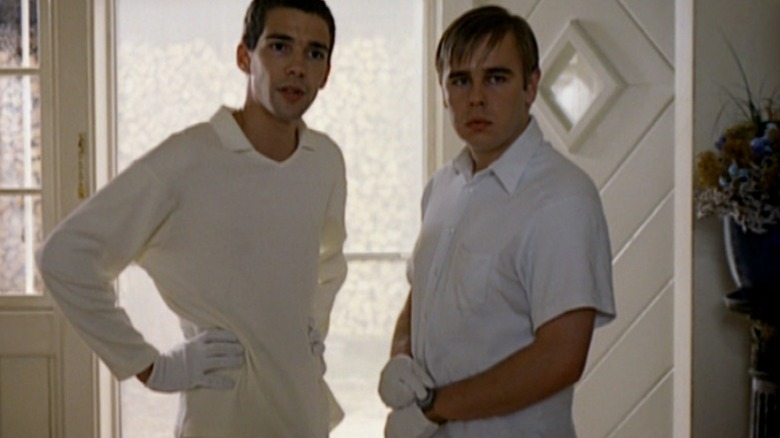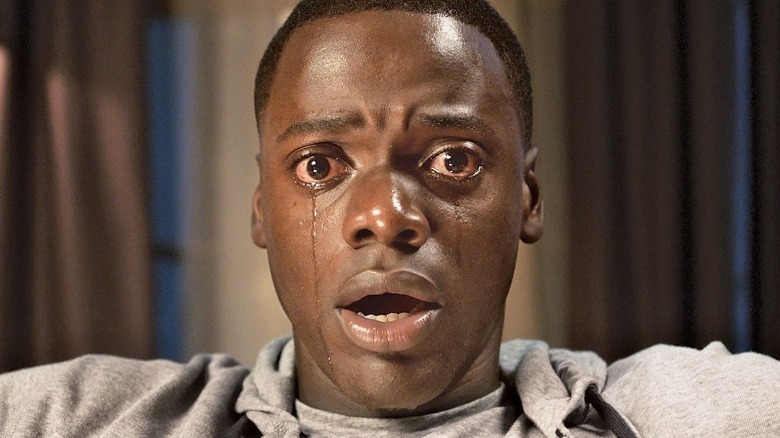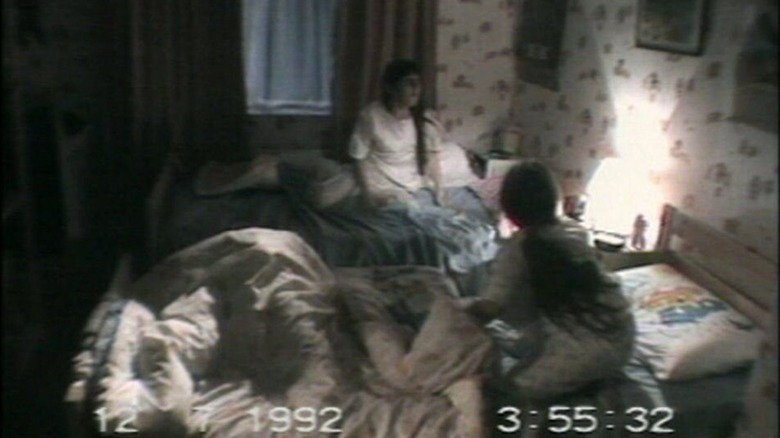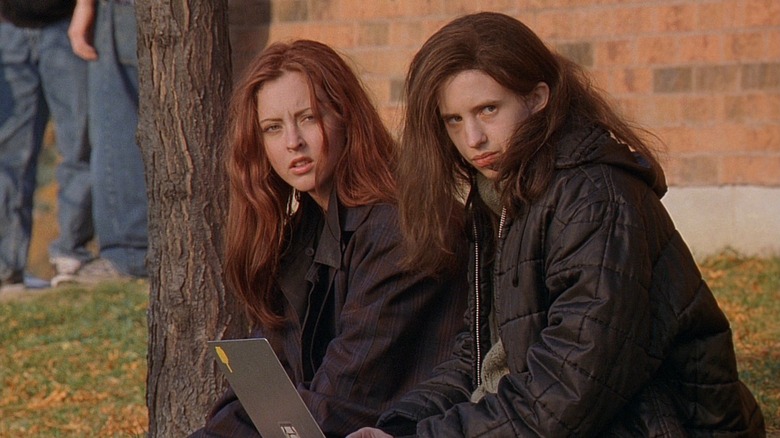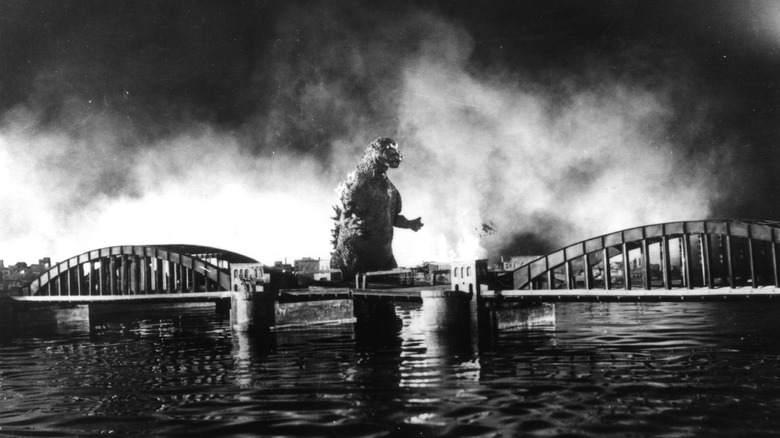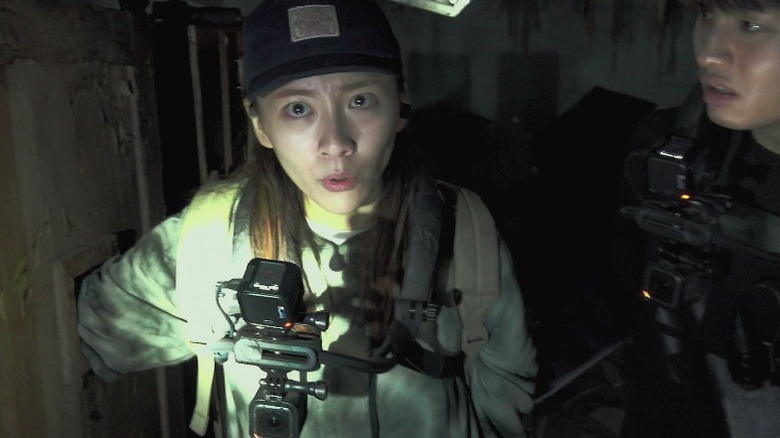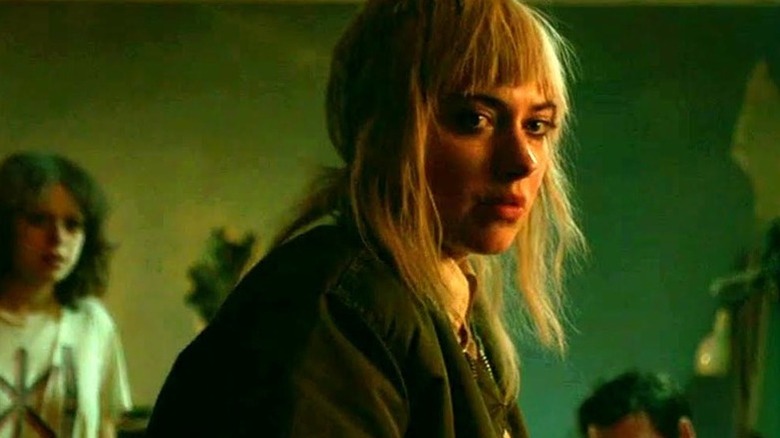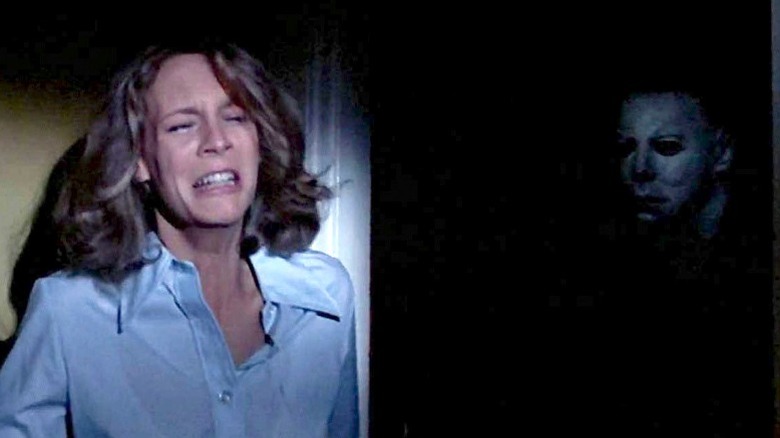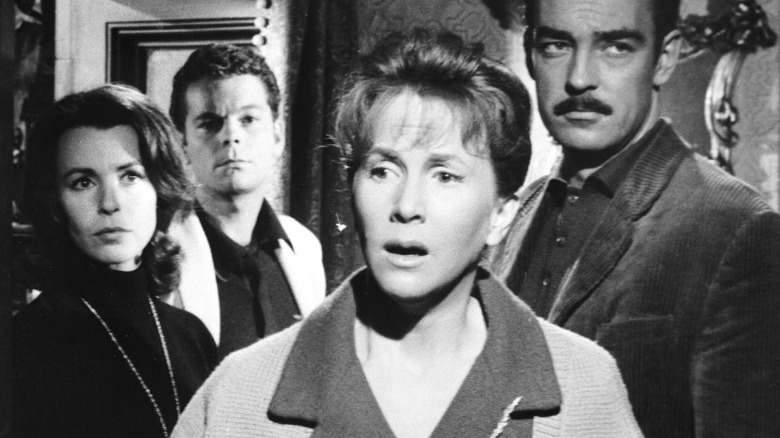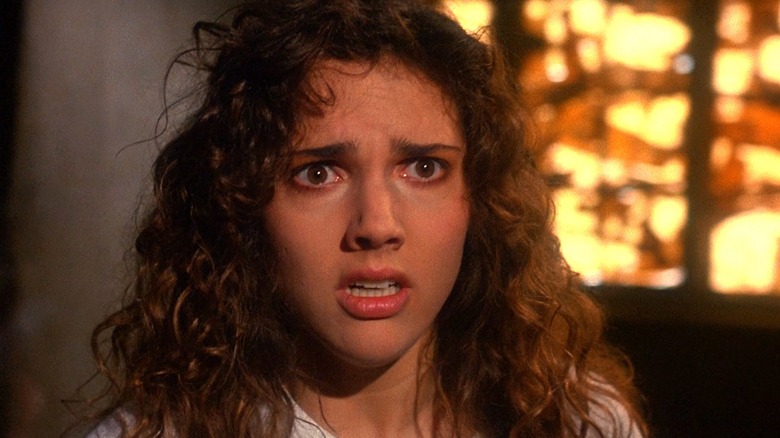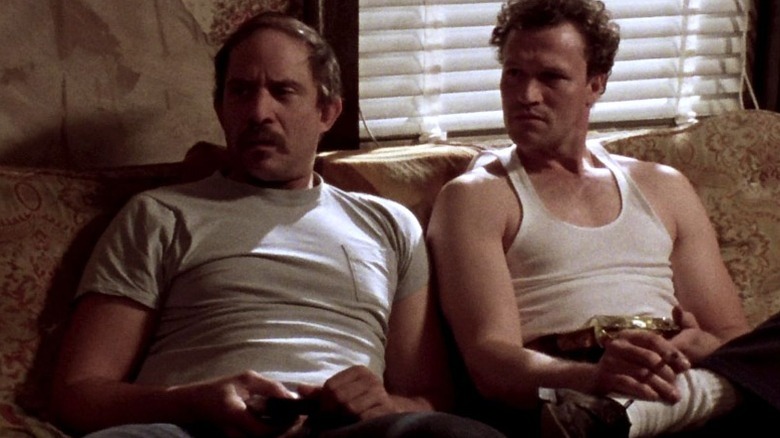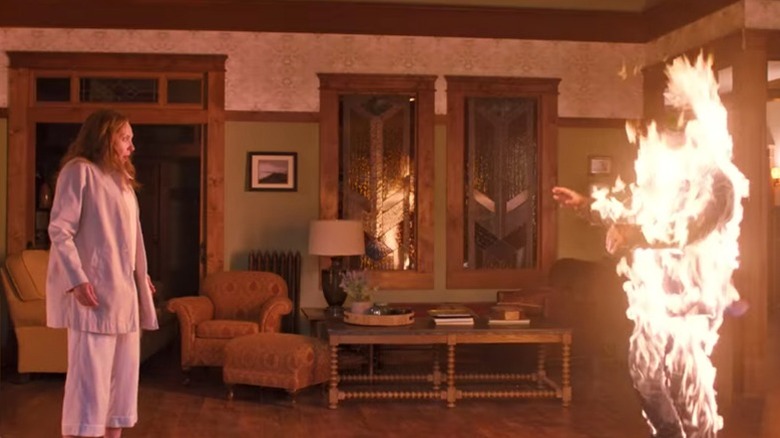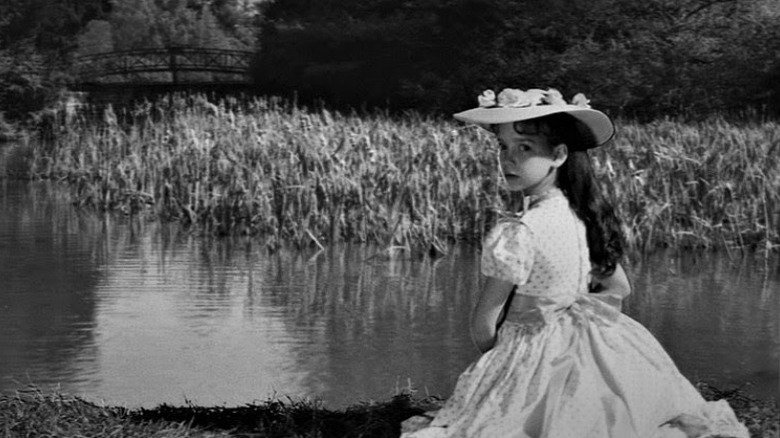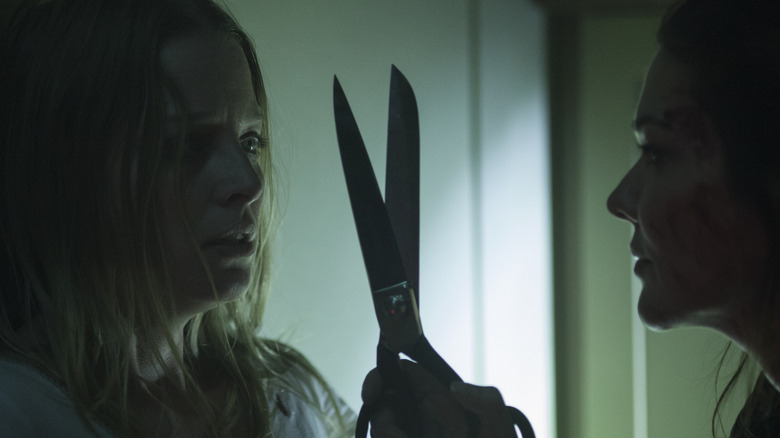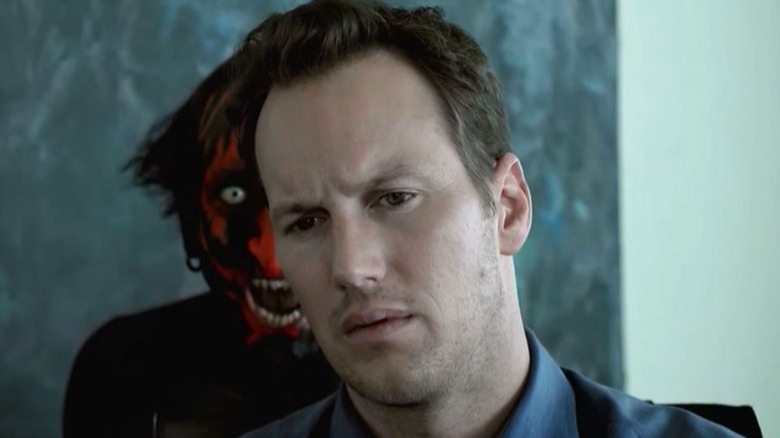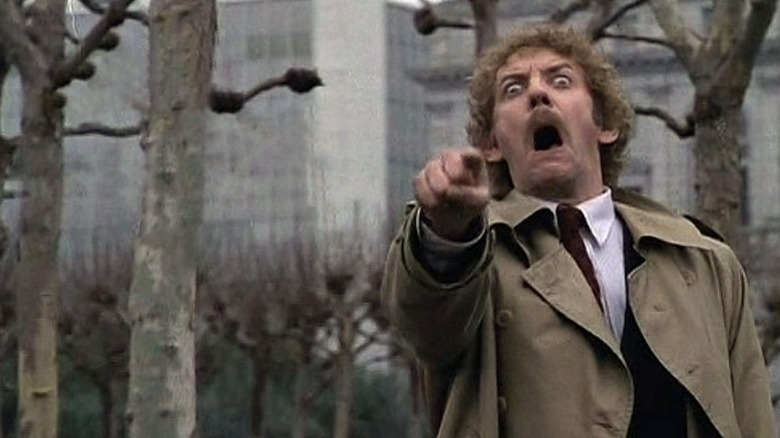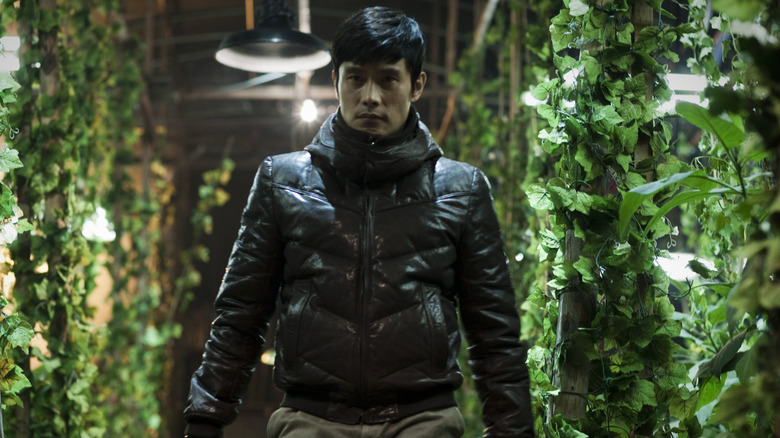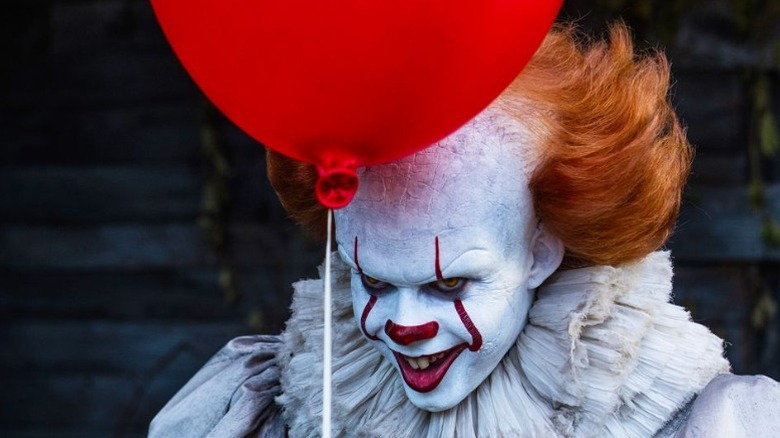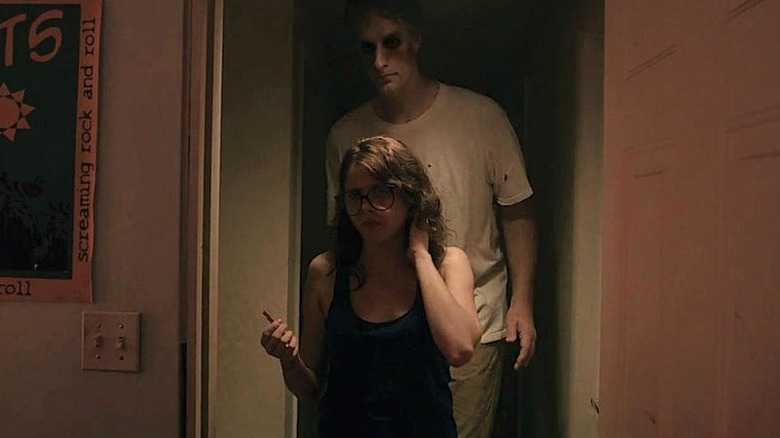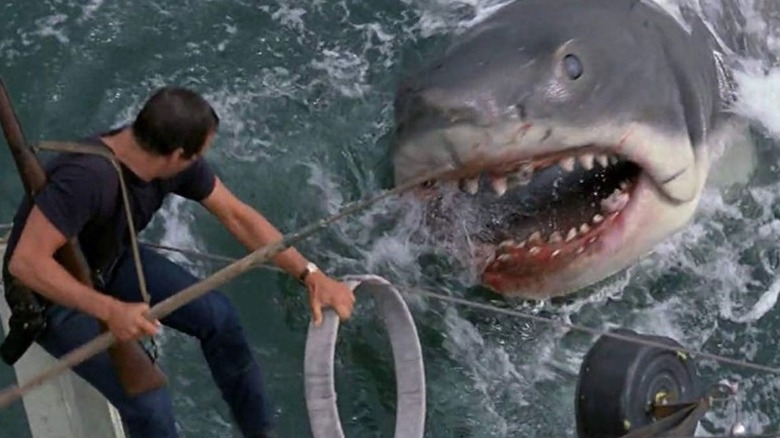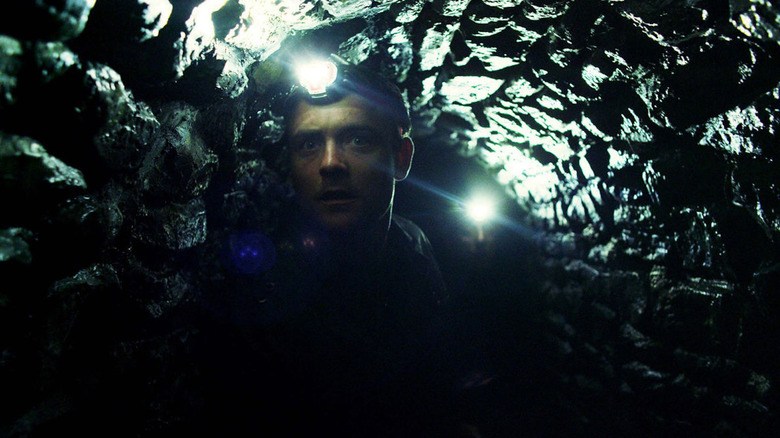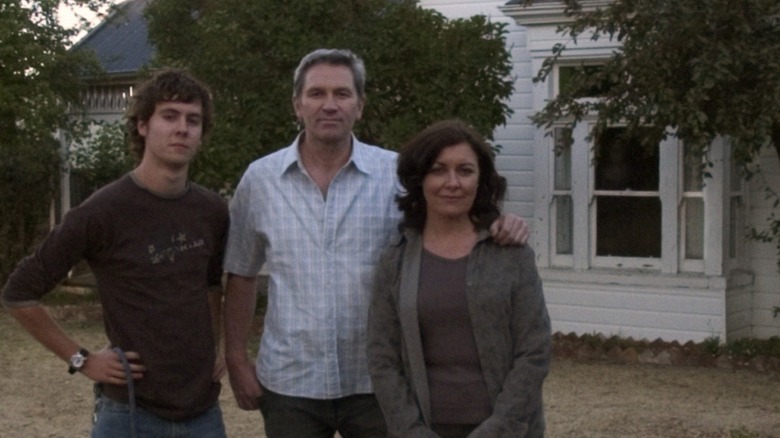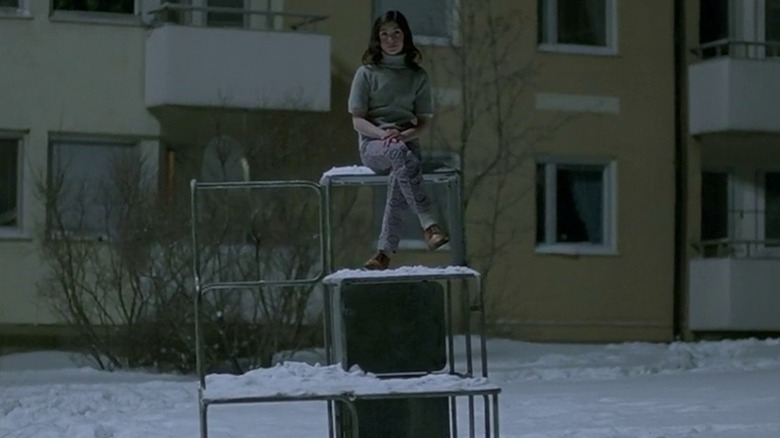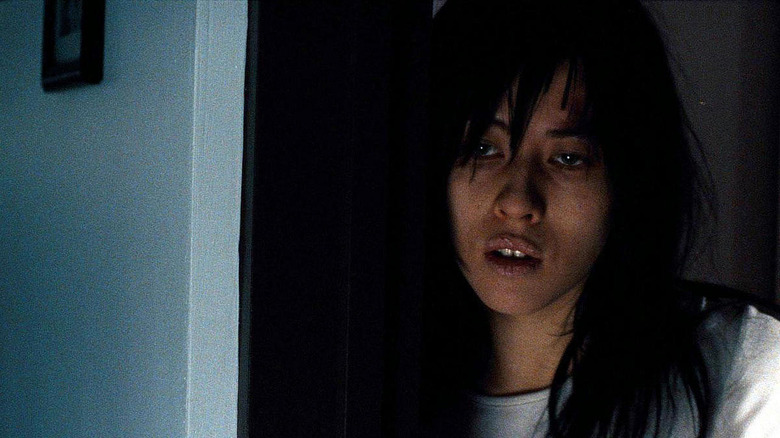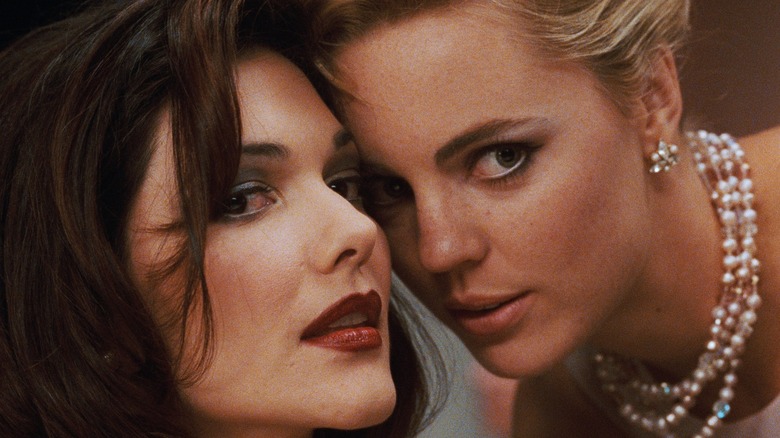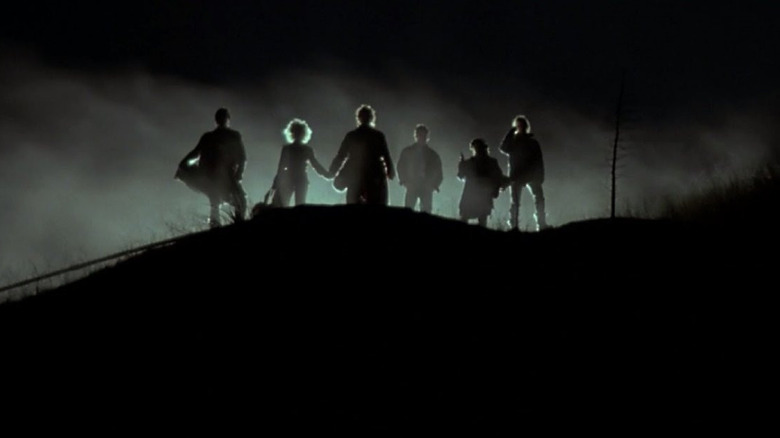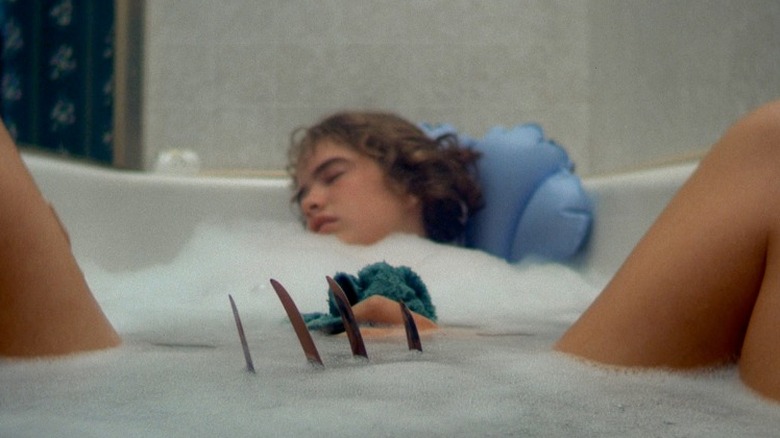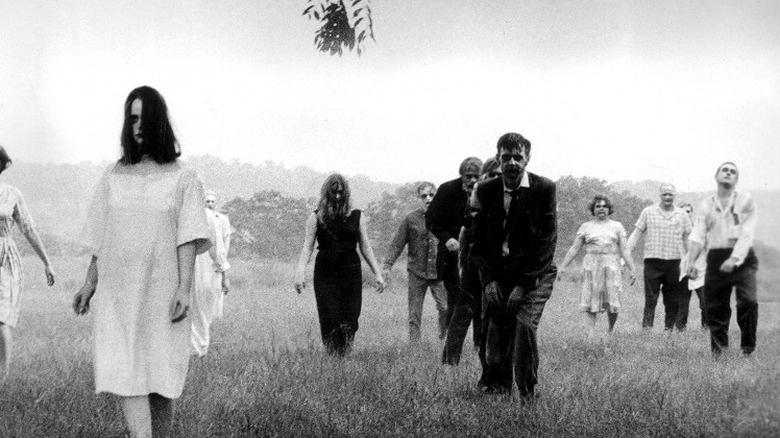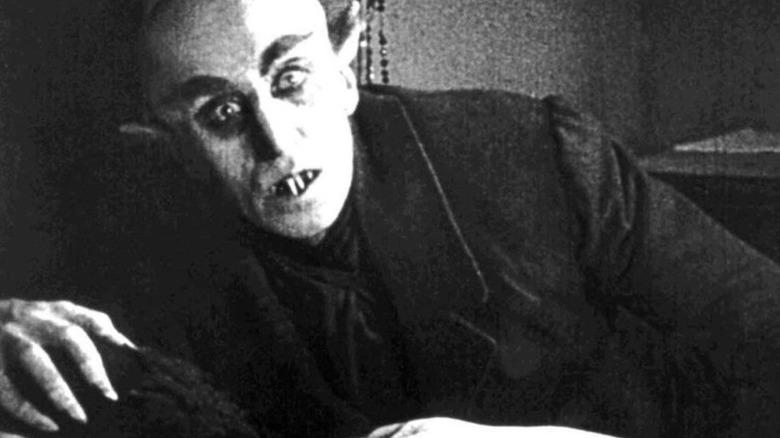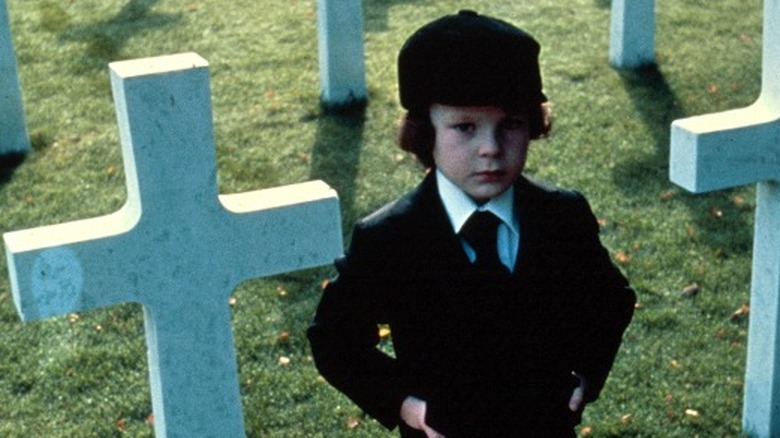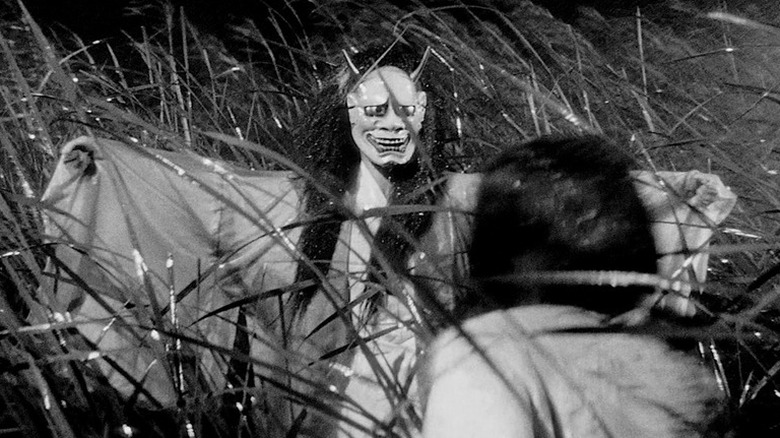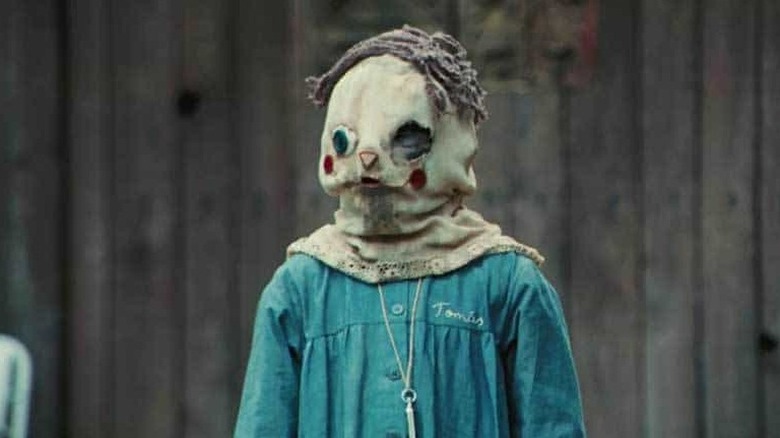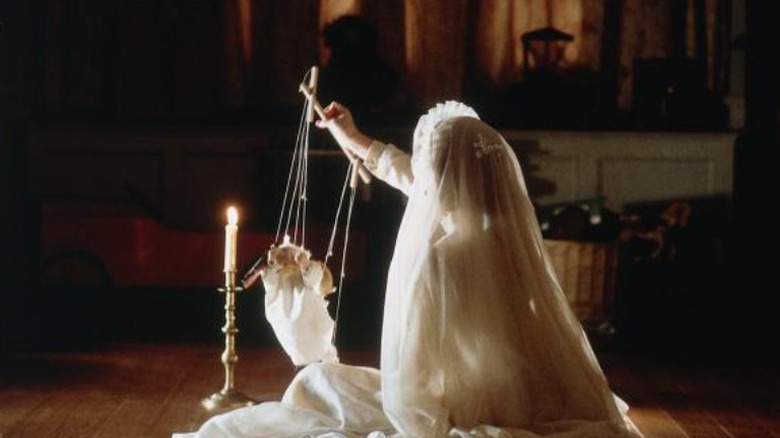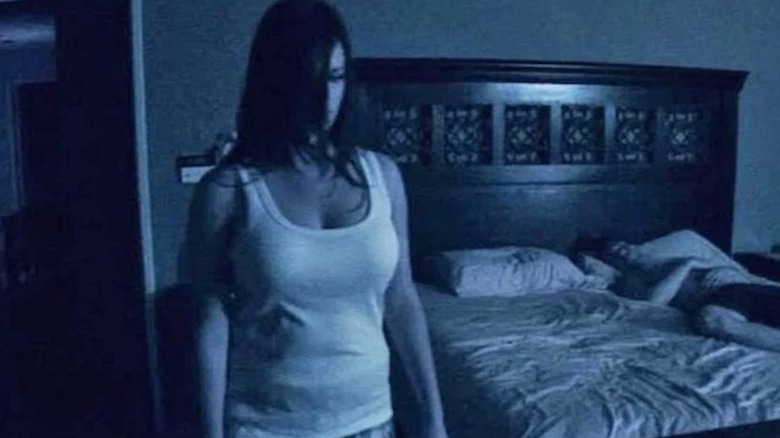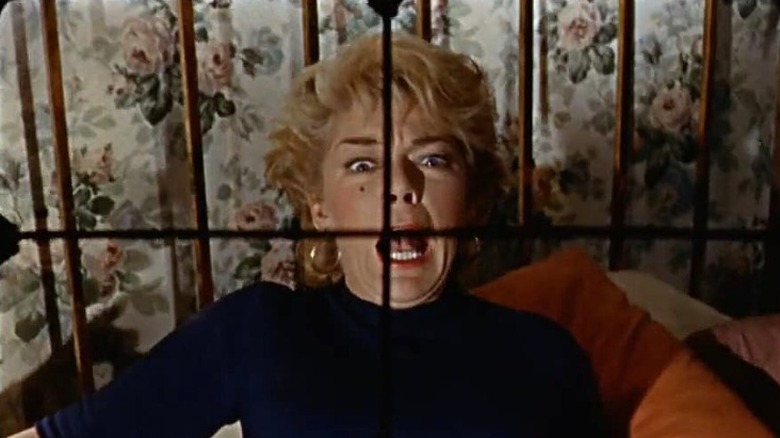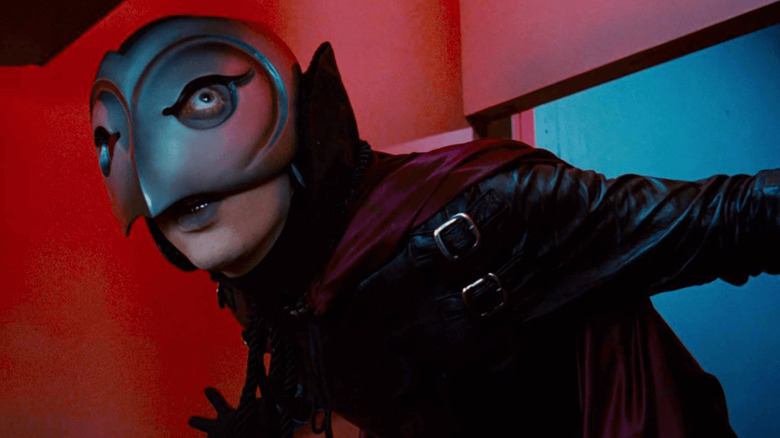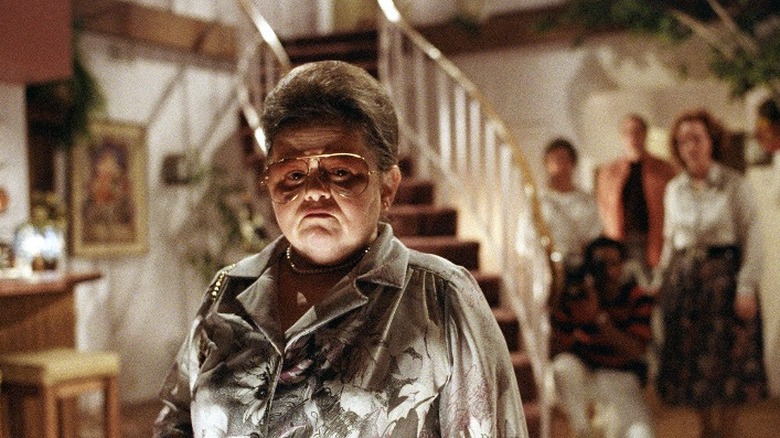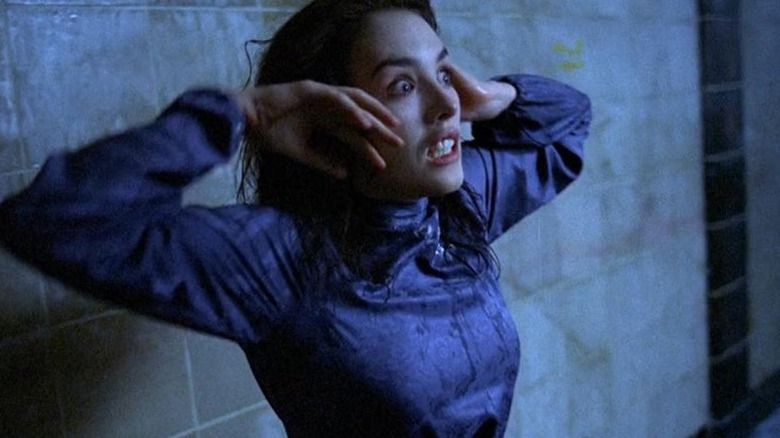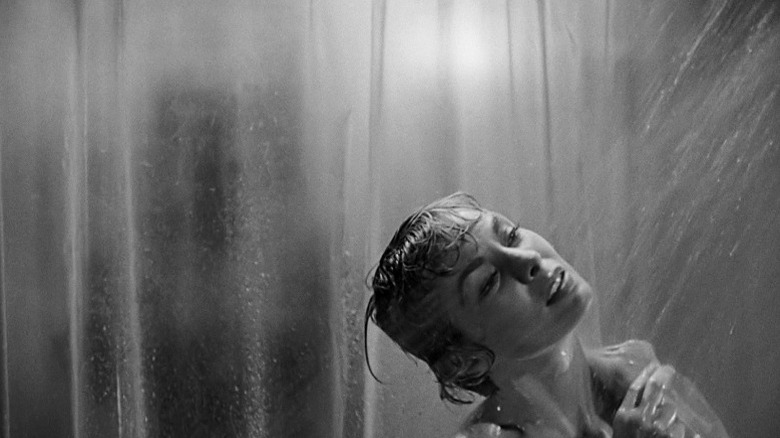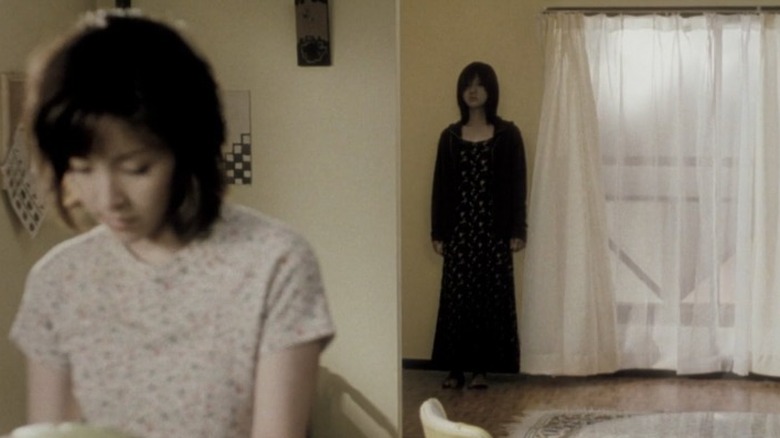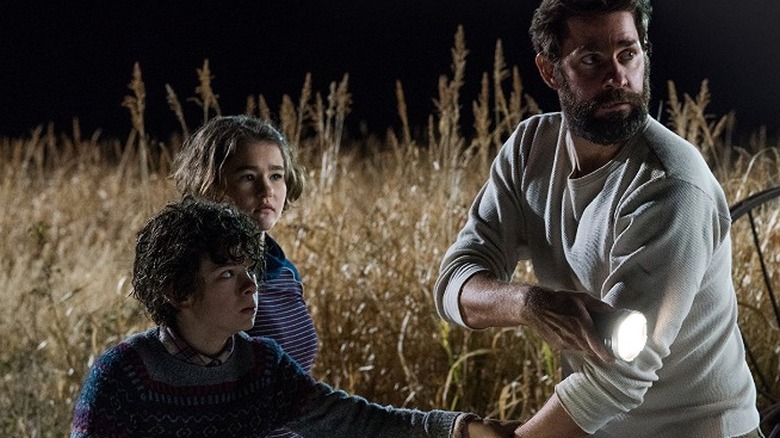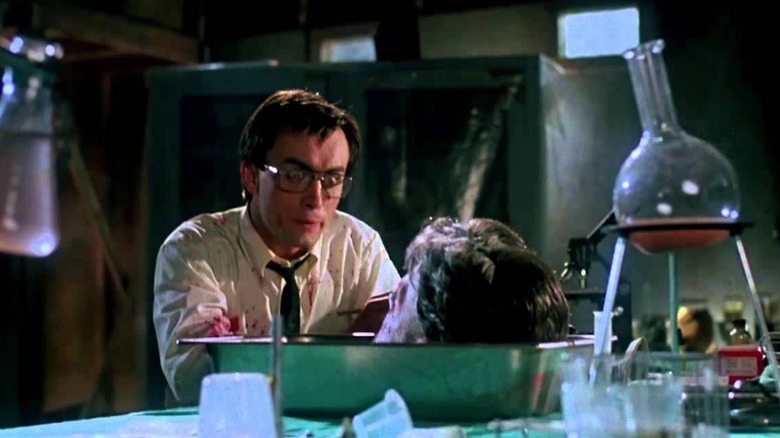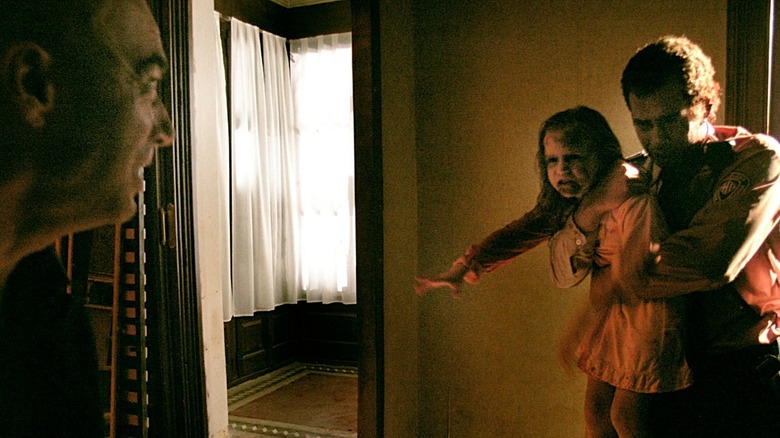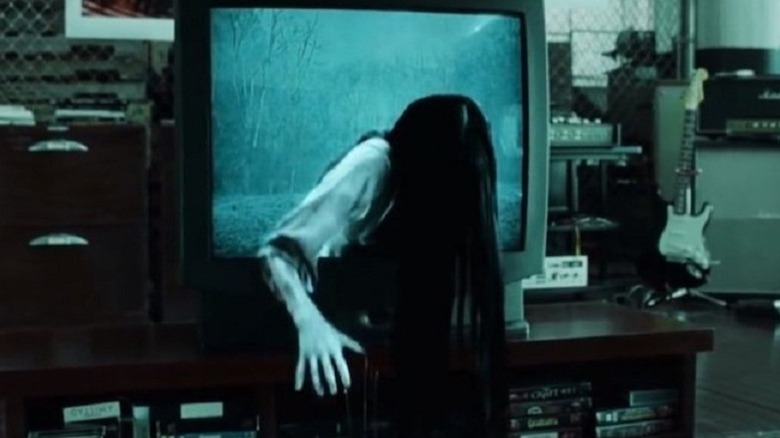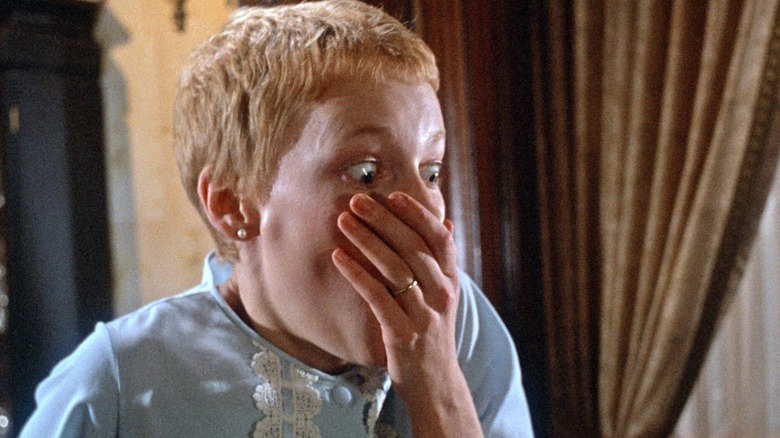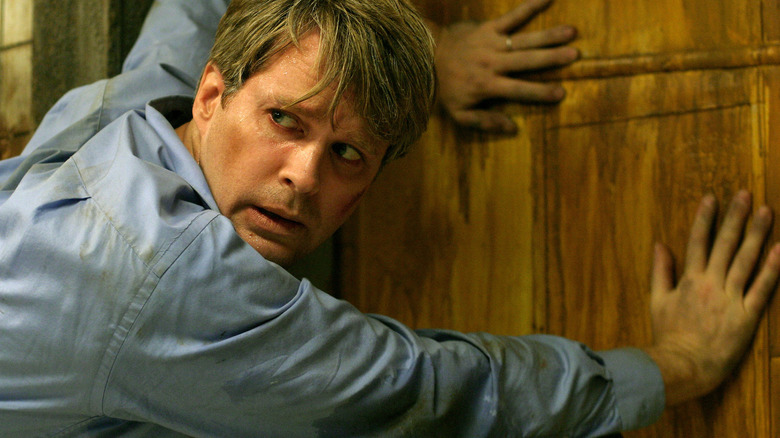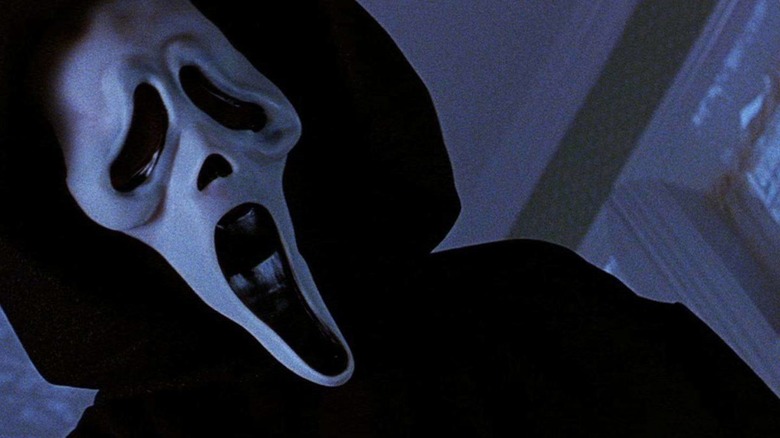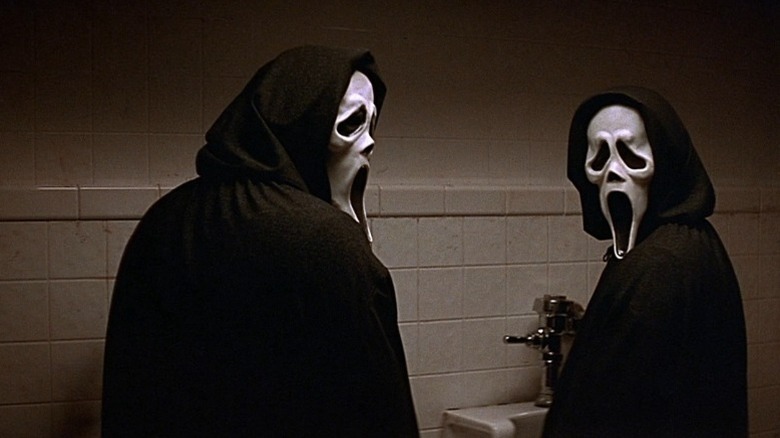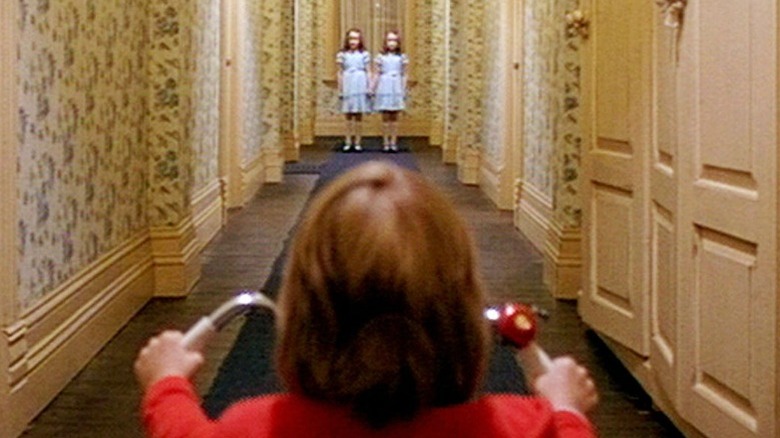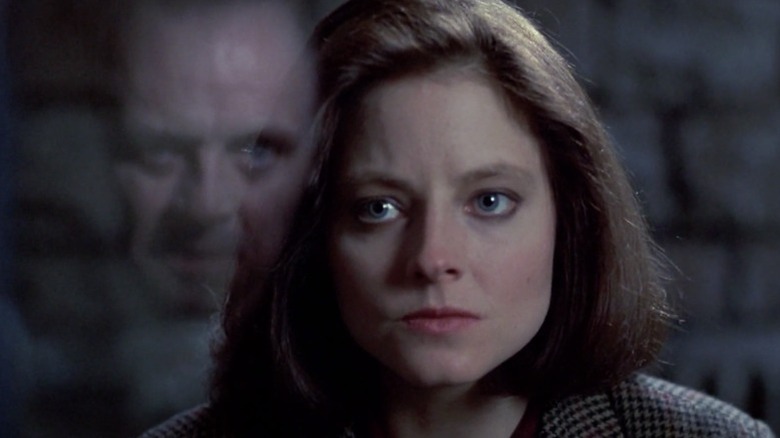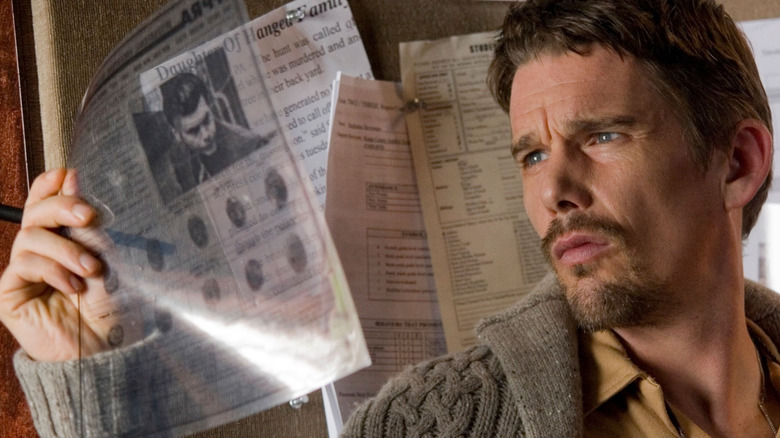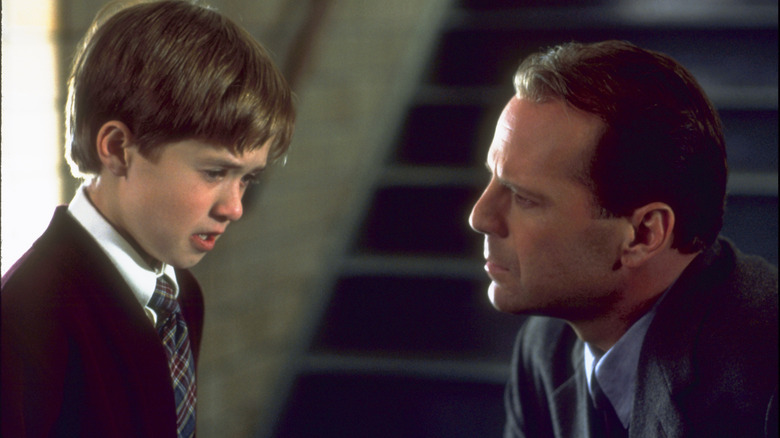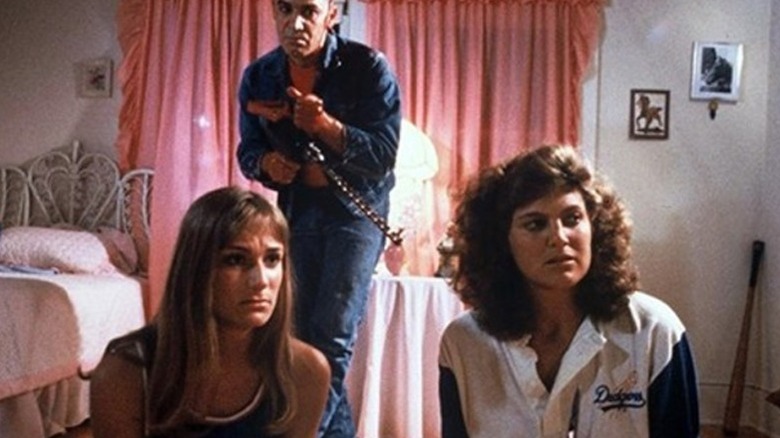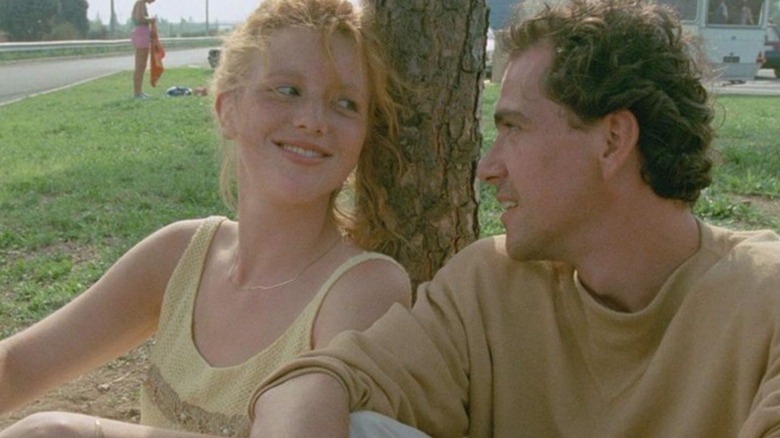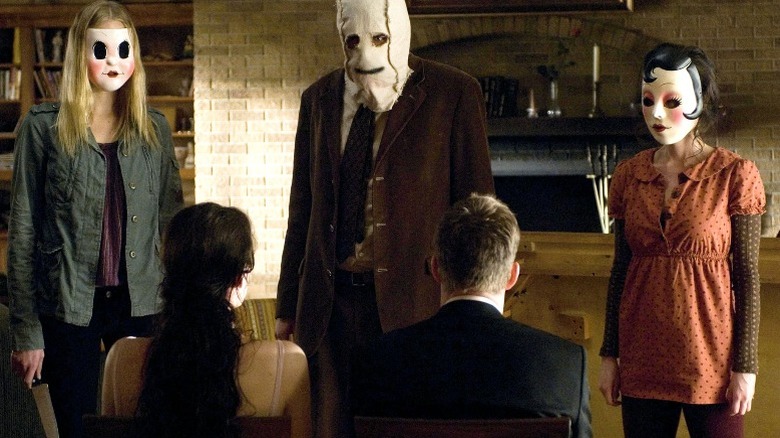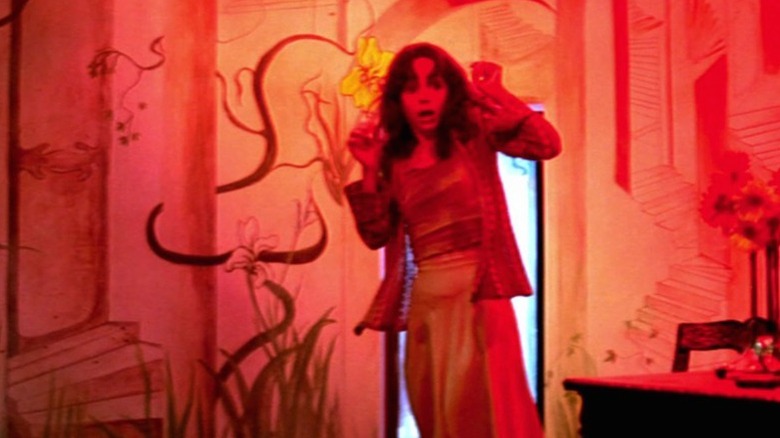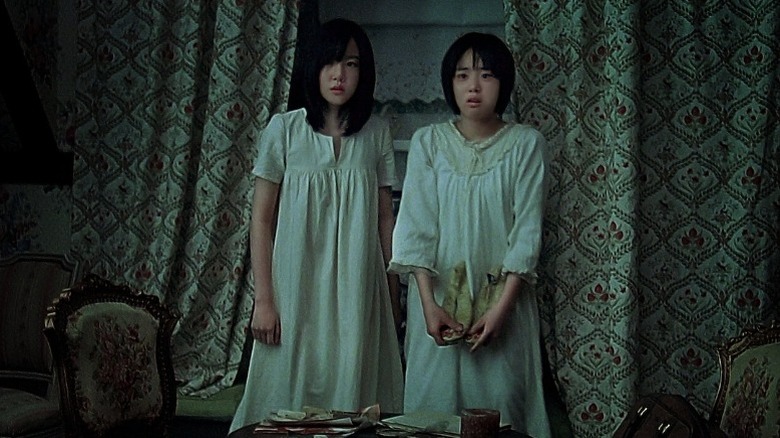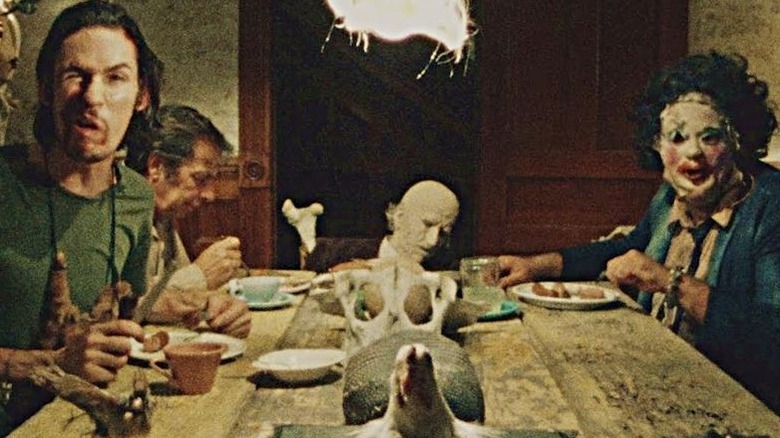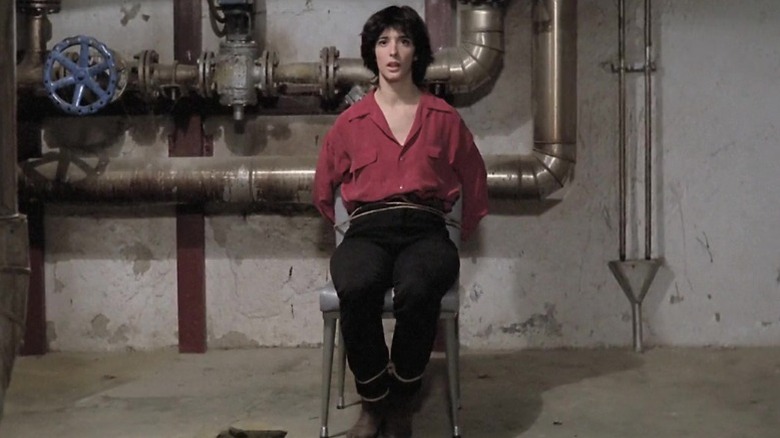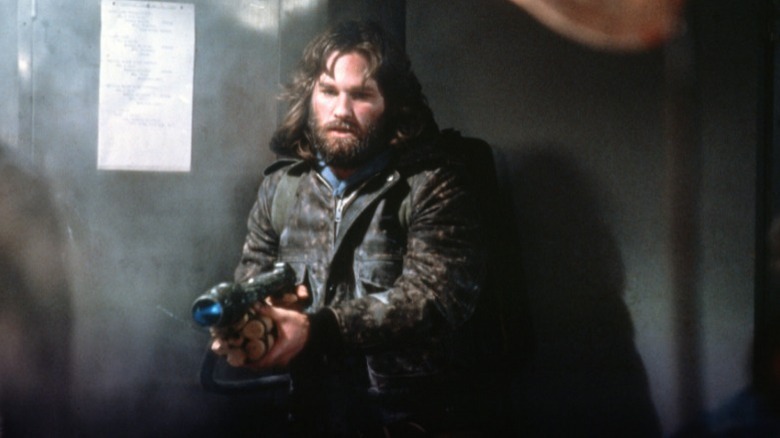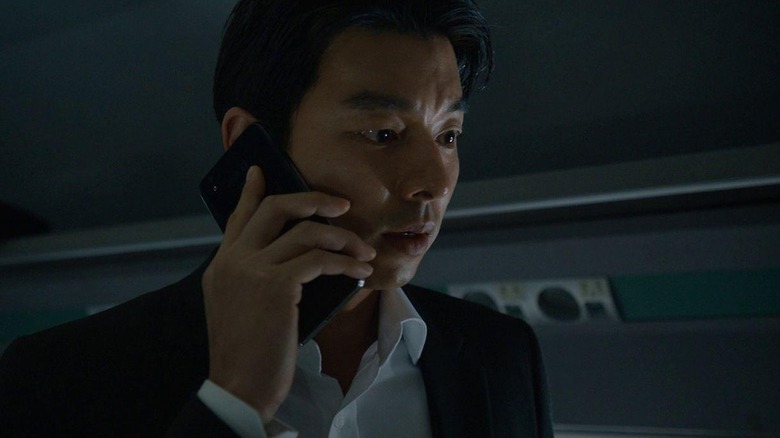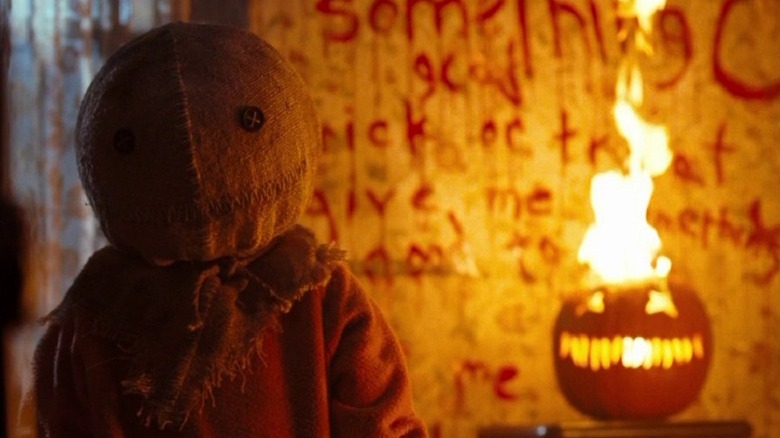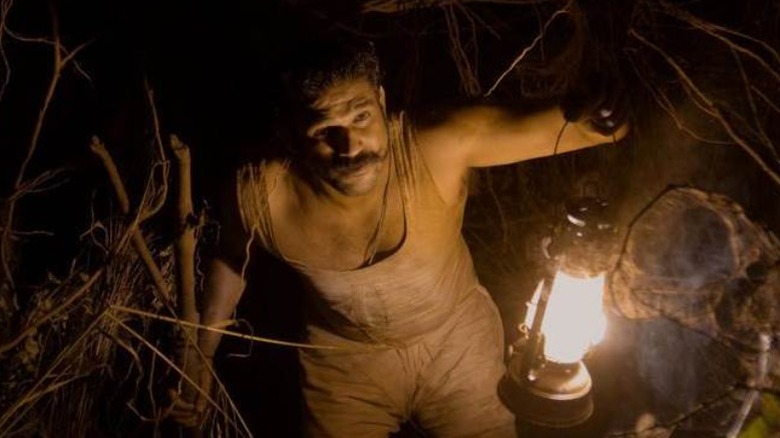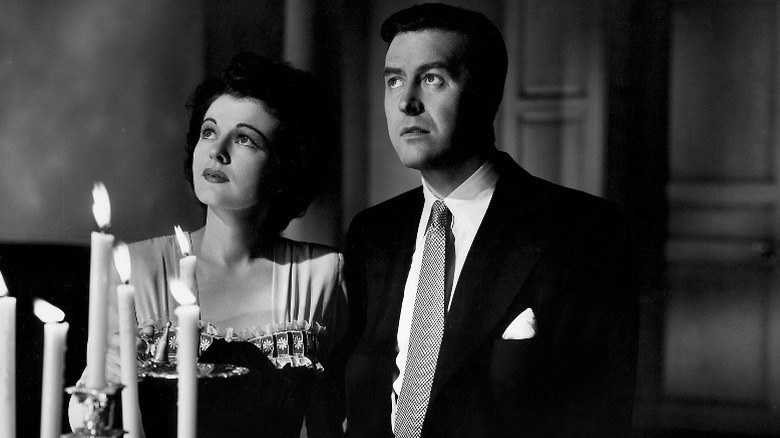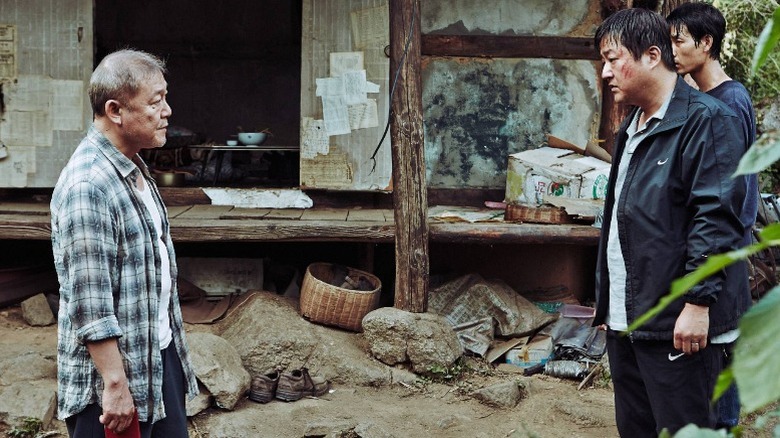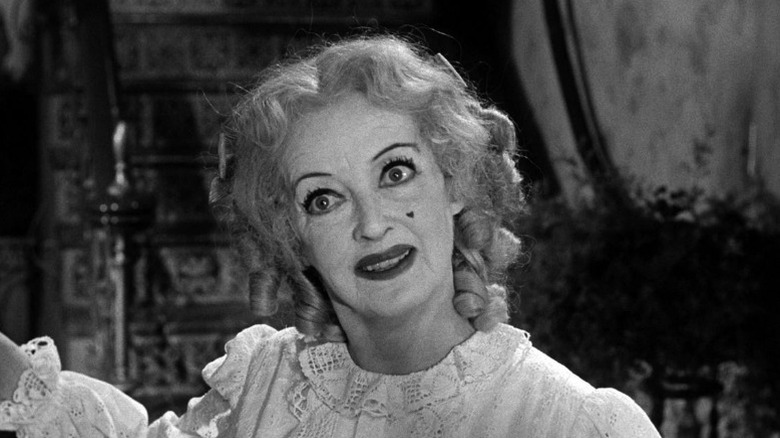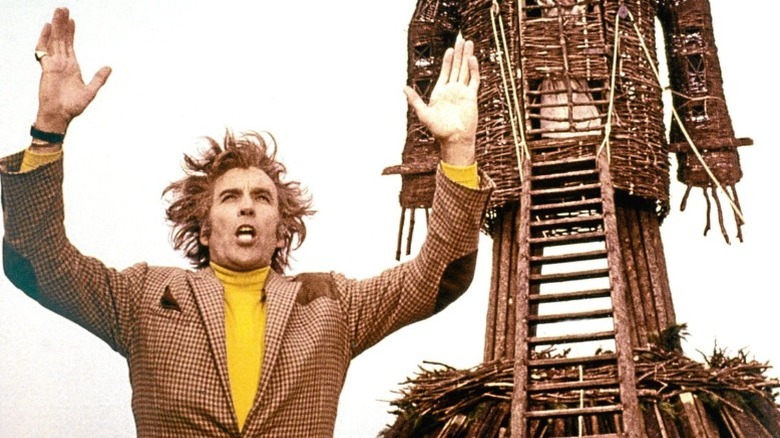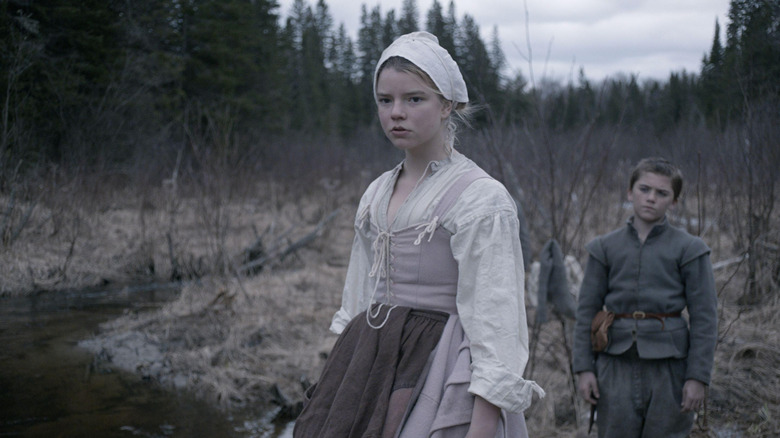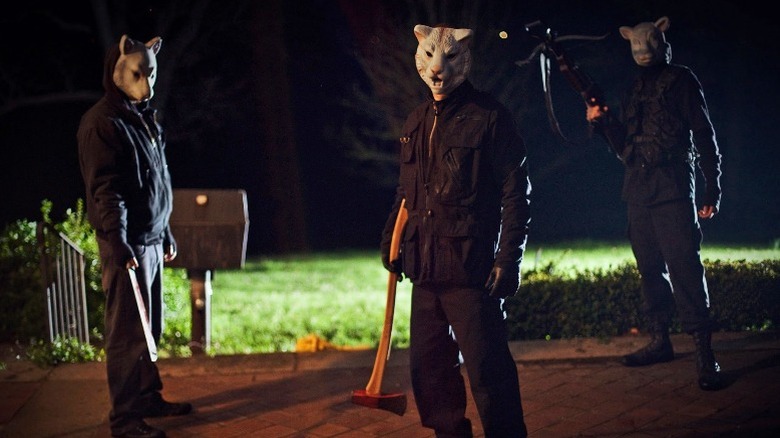The 106 Best Horror Movies Ever
Assembling a definitive list of the best horror movies ever made isn't easy. While action spectacles and swooning love stories have universal appeal, horror is innately subjective. What scares one viewer is unlikely to scare another, and a film's most frightening moments aren't always the ones that people think of first.
In addition, with over a century's worth of horror films to choose from, selecting only 95 is nearly impossible. Yet, when you really look at the genre's storied history, the classics are easier to identify than you might originally think. While some cult picks and personal favorites didn't make the cut, that's less of a testament to their quality than it is a comment on the constraints of merit-based classifications.
At the end of the day, these are the films that'll haunt you long after the credits roll. They are the subversive masterpieces, the horror tentpoles, and the films that restructured an entire genre, altering its trajectory for years. Grab your favorite blanket, dim the lights, and get ready — it's about to get scary.
28 Days Later
"28 Days Later" is, arguably, the most impactful zombie movie since George Romero's "Night of the Living Dead." Danny Boyle's film reimagines Romero's slow, shambling corpses as the fast, ferocious hosts of a rage virus that transforms its victims into members of a quasi-dead legion. They want to sever heads and tear flesh — nothing more, and nothing less.
Danny Boyle directs "28 Days Later" with a gritty, grungy verve that had, at the time, been missing from horror films for a while. It's a grim apocalyptic saga anchored by two stellar performances from Cillian Murphy and Naomie Harris, and values character as much as it does good ol' gore.
It also comes with a marked post-9/11 intensity. A product of its time, "28 Days Later" is an example of what horror does best: It condenses decades of ennui, tension, and political upheaval into a perfectly calibrated slice of zombie mayhem. It's modern cinema's answer to the subgenre that Romero created.
- Starring: Cillian Murphy, Naomie Harris, Christopher Eccleston
- Director: Danny Boyle
- Year: 2002
- Runtime: 113 min
- Rating: R
- Rotten Tomatoes Score: 87%
Alien
C'mon, it's "Alien." As fantastic as James Cameron's spectacle-heavy sequel is, its scale and its focus on bombastic action disqualify it from this list. Ridley Scott's original, on the other hand, is another beast; despite Cameron's standout work, "Alien" is still the best movie in the series.
More or less a haunted house movie in space, "Alien" is a monstrous and ferocious enterprise that permanently altered the cinematic landscape. A blend of science fiction and pure, bone-chilling horror, it gave birth to one of the genre's fiercest heroes in Sigourney Weaver's Ellen Ripley and gifted the world the Xenomorph, one of the most terrifying creatures ever conceived. Even after all these years, H.R. Giger's design work remains unmatched. "Alien" didn't just launch a franchise that continues to successfully reinvent itself, and it's not just a masterpiece. It's practically God.
- Starring: Sigourney Weaver, Tom Skerritt, John Hurt
- Director: Ridley Scott
- Year: 1979
- Runtime: 117 min
- Rating: R
- Rotten Tomatoes Score: 93%
An American Werewolf in London
Director John Landis is not a good guy, which makes it hard to talk about just how great "An American Werewolf in London" is. And make no mistake: This is still one of the best — if not the best — werewolf movies ever made. The climactic transformation is a tour-de-force of practical effects and narrative release, a pitch-perfect way to pay off a movie's worth of tension and scares.
It can be counterproductive to deny that bad people have talent. Denial grants those figures refuge; it's often that very talent that gives bad creators the status they use to exploit and hurt others. By downplaying their skills, we also ignore their potential for abuse. If nothing else, John Landis was talented, and "An American Werewolf in London" was his high point. It's grim, funny, perfectly paced, and thoroughly terrifying. It's a classic, and a decidedly necessary watch if you want a complete education in horror. It's a shame that Landis' name is attached, but "An American Werewolf in London" remains "An American Werewolf in London."
- Starring: David Naughton, Jenny Agutter, Joe Belcher
- Director: John Landis
- Year: 1981
- Runtime: 97 min
- Rating: R
- Rotten Tomatoes Score: 89%
Annihilation
Alex Garland is responsible for some of the 21st century's best genre films. Not only did he pen "28 Days Later," but he wrote "Sunshine," an incredibly underrated science fiction adventure, and directed "Ex Machina," another modern standout. However, his most impactful film is "Annihilation," an adaptation of the first book in Jeff VanderMeer's "Southern Reach Trilogy."
VanderMeer's novel is cryptic, moody, and Lovecraftian, and Garland has the unenviable task of making it all work on film. He doesn't just succeed. With "Annihilation," Garland delivers a legitimate modern horror masterpiece, a movie that takes hold of the audience with the hand of some nocturnal, hybrid monstrosity and never lets go.
The story is about scientists' efforts to investigate the Shimmer, a mysterious region of the United States where strange creatures and other odd phenomena lurk. Natalie Portman's Lena, a biologist whose husband was the first — and only — person to make it back from the Shimmer alive, leads the latest research team. I won't spoil the surprises they encounter; just be aware that the Shimmer hosts some of the scariest sights ever committed to film. "Annihilation" is a disquieting, disorienting, and all-around terrifying foray into the unknown.
Audition
"Audition" is perhaps most famous for its closing stretch. Prior to its final moments, Takashi Miike's opus only alludes to horror, although the sporadic dreamscapes, off-kilter images, an oppressive mood signal that something is wrong even when everything else seems right. But then, suddenly, terror consumes the audience all at once, making for a grim, grisly, I-dare-you-to-look-away spectacle that's liable to rattle even the most hardened horror fans.
Ryo Ishibashi stars in "Audition" as Shigeharu Aoyama, a widower with a young son who's desperate to meet another woman. His friend sets up a mock audition to identify potential candidates, and Aoyama finds himself immediately smitten with Asami Yamazaki (Eihi Shiina). They date, and while their romance is cute for a while, there is clearly something off about Yamazaki. Her old boss was murdered, and after they get together, Aoyama keeps having visions of severed body parts. In addition, there are all those cryptic shots of ... something in a brown sack. Without giving more away, "Audition" culminates in a crescendo of male entitlement, female rage, and enough body horror to make even David Cronenberg wince.
- Starring: Ryo Ishibashi, Eihi Shiina, Tetsu Sawaki
- Director: Takashi Miike
- Year: 1999
- Runtime: 115 min
- Rating: R
- Rotten Tomatoes Score: 83%
The Babadook
As perfectly observed by Tara in the latest "Scream" film, "The Babadook" is a profound meditation on grief and depression. Largely responsible for the 21st century's preoccupation with so-called "elevated" horror, "The Babadook" eschews conventional scares in favor of probing, deeply uncomfortable explorations of trauma and tragedy.
Amelia (an awards-worthy Essie Davis) is a depressed widow living in Adelaide, a city in Australia. She spends most of her day self-medicating, grieving her late husband, and dealing with her troubled son, Samuel (Noah Wiseman), who exhibits erratic and often violent behavior towards Amelia and the other kids in the neighborhood. One night, Samuel asks Amelia to read him a bedtime story called "Mister Babadook," a terrifying tale about a long, lean, pale human figure with slender fingers and a top hat.
But the Babadook doesn't remain fictional for long, and Amelia and Samuel are soon haunted by the creature itself. One of this century's scariest movies, "The Babadook" will satisfy both fans of conventional supernatural spook shows and those who prefer more cerebral horror.
- Starring: Essie Davis, Noah Wiseman, Daniel Henshall
- Director: Jennifer Kent
- Year: 2014
- Runtime: 94 min
- Rating: N/A
- Rotten Tomatoes Score: 98%
The Bird with the Crystal Plumage
Acclaimed giallo filmmaker Dario Argento made his directorial debut with "The Bird with the Crystal Plumage," a whodunit slasher that (unofficially) borrows quite a bit from Fredric Brown's novel "The Screaming Mimi." Tony Musante stars in the film as Sam Dalmas, an American writer visiting Rome who witnesses the attempted murder of Monica Ranieri (Eva Renzi) inside her art gallery. It's a sensational sequence, with the attack framed through thick panes of glass and Sam rendered helpless on the other side, desperate to reach Monica before the mysterious black-gloved assailant can finish her off.
Sam is subsequently roped into a serial murder investigation, with local authorities believing that Monica's assailant is responsible for killing several young women across Rome. Sam is a natural investigator, constantly replaying the night's events in his mind, certain that he's missed some pivotal clue (spoiler: He has). "The Bird with the Crystal Plumage" is genuinely terrifying, thrillingly crafted, and gorgeously composed. Argento's directorial work has rarely, if ever, been better, and as a blueprint for his future work, "The Bird with the Crystal Plumage" transcends expectations for a debut film, becoming a classic slasher in its own right.
- Starring: Tony Musante, Suzy Kendall, Enrico Maria Salerno
- Director: Dario Argento
- Year: 1970
- Runtime: 96 min
- Rating: N/A
- Rotten Tomatoes Score: 85%
Black Christmas (1974)
"Black Christmas" is the slasher that changed the horror landscape forever, and a perennial holiday watch for genre die-hards and mainstream audiences alike. An urban legend in film form, director Bob Clark of "A Christmas Story" fame adapts the popular "Babysitter and the Man Upstairs" myth in the most terrifying way imaginable: by telling a story about an unknown assailant who breaks into a sorority house and systematically picks off the residents over Christmas break.
Clark trades any sort of narrative rationale for the action for richly-developed characters, a lived-in world, and plot beats that would soon become standard genre tropes. As Jess, Olivia Hussey is a final girl for the ages, and Margot Kidder delivers a cult performance as Barb, the acerbic sorority sister whose mantra seems to be "Chaos for chaos' sake." "Black Christmas" laid the foundation for every slasher that followed, arguably establishing a more successful template for the genre than either "Psycho" or "Peeping Tom." Horror wouldn't be horror without "Black Christmas."
- Starring: Olivia Hussey, Kier Dullea, Margot Kidder
- Director: Bob Clark
- Year: 1974
- Runtime: 98 min
- Rating: R
- Rotten Tomatoes Score: 68%
The Blair Witch Project
It's hard to describe just how thorough a chokehold "The Blair Witch Project" had on the world upon its release in 1999. To market this micro-budget indie shocker, directors Daniel Myrick and Eduardo Sanchez and distributor Artisan Entertainment made use of an ingenious tactic. When the film debuted they claimed that "The Blair Witch Project" was not merely based on a true story, but that it was actually a documentary. The film, they said, was cut together from real footage captured by a group of young adults who went missing in Black Hills Forest.
Of course, that wasn't true, and the deception was quickly uncovered. Still, the film remains the subject of campfire rumors and slumber party dares. Every decade has its own "scariest movie ever"; in the '90s, that movie was "The Blair Witch Project." Though time has neutered some of its efficacy, it remains an inimitably chilling exercise in found-footage horror.
- Starring: Heather Donahue, Michael C. Williams, Joshua Leonard
- Director: Daniel Myrick, Eduardo Sanchez
- Year: 1999
- Runtime: 81 min
- Rating: R
- Rotten Tomatoes Score: 86%
Blood and Black Lace
Mario Bava's "Blood and Black Lace" was an inspiration for some of Dario Argento's work. The colloquial master of the giallo genre, Argento only found success on account of Bava. In other words, if Argento is the star, then Bava is the one who started it all. "Blood and Black Lace" is a stylish "Mod Squad" slasher, a sensational, swinging '60s foray into fashion, deception, and murder.
In "Blood andBlack Lace," a killer targets the models at Christian Haute Couture, a Roman fashion house known for its groundbreaking styles and exceptionally beautiful women. The killer, manifesting a trend, is adorned in a fedora, a trenchcoat, and a white, featureless mask, making it difficult for police inspector Ispettore Silvestr (Thomas Reiner) to deduce their identity before no one is left. Full of genuine tension, "Blood and Black Lace" might be less violent than its contemporaries, but it still packs a mean punch, especially for a film made in 1964. It's a fundamental slasher film, and while it's not as well known as "Halloween" and "Black Christmas," it still deserves its spot in history.
- Starring: Cameron Mitchell, Eva Bartok, Thomas Reiner
- Director: Mario Bava
- Year: 1964
- Runtime: 88 min
- Rating: N/A
- Rotten Tomatoes Score: 80%
Bride of Frankenstein
Mary Shelley's "Frankenstein" is one of the earliest horror novels. More than 100 years after she published her "Modern Prometheus" in 1818, director James Whale permanently defined the story's visual renditions with 1931's "Frankenstein." In turn, his sequel "Bride of Frankenstein" is still the best "Frankenstein" film almost 100 years after its 1935 release.
In some ways, this is where the films veer off course from the novel; Dr. Pretorius (Ernest Thesiger), Dr. Frankenstein's old mentor who wishes to see his experiment through, is nowhere to be found in Shelley's source material. In other respects, however, the movie is simply adapting Shelley's story beats that the first film excluded. The Creature (Boris Karloff) finds his heart stirring with desire for companionship. That was his animus in Shelley's novel and like there, he briefly finds kinship with a blind man (O. P. Heggie), the only person who can stand in his presence without fear. Once men with sight spot the two together, they too are overwhelmed by hate. So, the Creature demands a new companion made in the same fashion as himself, only to be spurned once again when his Bride (Elsa Lanchester) is brought to life.
Author Victor LaValle once said you can't understand "Frankenstein," a novel about the consequences and responsibilities of creating life, without knowing Shelley was a mother who lost her children. In turn, you can't understand "Bride of Frankenstein" and its empathy for the ostracized without knowing Whale was a queer man. The film's ending, where the Creature declares "We belong dead" is the scariest part; Whale's world (by way of Shelley) is a world that will never accept those who are different. (Devin Meenan)
- Starring: Boris Karloff, Elsa Lanchester, Colin Clive, Ernest Thesiger, Valerie Hobson
- Director: James Whale
- Year: 1935
- Runtime: 75 minutes
- Rating: Unrated
- Rotten Tomatoes Score: 98%
The Cabinet of Dr. Caligari
"The Cabinet of Dr. Caligari" was one of the first horror films ever released and, along with F.W. Murnau's "Nosferatu," is arguably the most influential. A silent film directed by Robert Wiene, "The Cabinet of Dr. Caligari" is quintessential Expressionist cinema, emphasizing feelings and ideas over strict adherence to reality. All the style belies a relatively simple plot: Hypnotist Dr. Caligari (Werner Krauss) manipulates somnambulist Cesare (Conrad Veidt) into committing a string of murders.
Wiene makes full use of the Expressionist aesthetic, using twisted sets, sharp shapes, and curved lines to structurally warp his narrative. With figures engulfed by both shadows and adroitly cast slivers of light, the look reflects the state of Caligari's mind as much as it does the events of the plot. Thematically, "The Cabinet of Dr. Caligari" interrogates authority, violence, and sanity, terrifying early audiences and commanding the attention of contemporary ones. It's responsible for an entire wave of similar German films, and was an enormous influence on the development of Hollywood pictures. "The Cabinet of Dr. Caligari" isn't simply a horror classic; it's a landmark cinematic achievement.
- Starring: Werner Krauss, Conrad Veidt, Freidrich Feher
- Director: James Whale
- Year: 1919
- Runtime: 67 min
- Rating: N/A
- Rotten Tomatoes Score: 96%
The Cabin in the Woods
When it comes to interrogating, dismantling, and then reassembling horror tropes, nothing has come as close to "Scream" as "The Cabin in the Woods." Ostensibly the story of five very silly, very hot young adults and the horrors they encounter at the titular cabin, director Drew Goddard and co-writer Joss Whedon deliberately deceive the audience, introducing "The Cabin in the Woods" as one type of movie before pulling the rug out from under the viewer, revealing it to be an entirely different beast altogether.
Without ruining the best surprises, suffice it to say that "The Cabin in the Woods" is about considerably more than zombies picking off teens in the wild. It has a wicked, subversive sense of humor, plenty of violence for gore hounds, and a genuinely affecting commentary on not just the horror industry, but horror as a genre. But "The Cabin in the Woods" has plenty of legitimate scares, too. It's not just a love letter to the genre — "The Cabin in the Woods" is as solid a horror experience as it gets.
- Starring: Kristen Connolly, Chris Hemsworth, Anna Hutchison
- Director: Drew Goddard
- Year: 2012
- Runtime: 95 min
- Rating: R
- Rotten Tomatoes Score: 92%
Candyman (1992)
Thanks largely to its just-as-good 2021 sequel, "Candyman" has been reappraised in recent years, shifting its reputation from a criminally-underrated cult favorite to a genuinely appreciated horror gem. An urban legend captured in ferocious filmic form, "Candyman" unleashes centuries of violence, oppression, and prejudice against the backdrop of a sinister, gentrified Chicago.
Based on the short story "The Forbidden" by cerebral horror master Clive Barker, "Candyman" stars Virginia Madsen as Helen Lyle, a graduate student writing a thesis on the Candyman (Tony Todd). An alleged artist and slave who was killed after it was discovered that he'd been sleeping with a slave owner's daughter, Candyman haunts the Cabrini-Green, a decrepit housing project in Chicago that's been neglected by residents and leaders alike. As an allegory for poverty, red-lining, and the pernicious roots of racism, "Candyman" works well enough. Factor in its genuine scares, graphic violence, and committed performances, and it transcends allegory to become a paragon of politically-relevant horror. Say his name. I dare you.
- Starring: Virginia Madsen, Tony Todd, Xander Berkeley
- Director: Bernard Rose
- Year: 1992
- Runtime: 99 min
- Rating: R
- Rotten Tomatoes Score: 79%
Carrie
"Carrie" was the first film adaptation of horror maestro Stephen King's work. That's appropriate, given that "Carrie" was also his first published novel. The story of a telekinetic girl (Sissy Spacek), her abusive zealot mother (Piper Laurie), and a gaggle of mean high school girls (Nancy Allen and P.J. Soles chief among them), "Carrie" remains eternally relevant.
Carrie's torment grows as her powers develop, culminating in the infamous prom massacre, where director Brian De Palma makes gleefully deranged use of split-screen effects as Carrie uses her powers to kill everyone at the high school dance. Packed with genuinely affecting performances (both Spacek and Laurie were nominated for Academy Awards for their work), groundbreaking effects, and the final jump scare to end all final jump scares, "Carrie" is the real deal. Even the lackluster 2013 remake packed a mean punch, serving as a testament to the enduring legacy of "Carrie" as a cautionary tale. Don't bully, kids.
- Starring: Sissy Spacek, Piper Laurie, Amy Irving
- Director: Brian De Palma
- Year: 1976
- Runtime: 98 min
- Rating: R
- Rotten Tomatoes Score: 93%
Cat People
Jacques Tourneur's "Cat People" is largely responsible for creating the cinematic jump scare. At one point, Irena (Simone Simon) stalks Alice (Jane Randolph) after the latter leaves a restaurant. As Alice runs between the warm glow of streetlights, the tension builds, until it's suddenly broken by the arrival of an incredibly loud bus. It's a gangbusters scare, and likely the first of its kind — it's exactly the kind of innovation you could expect from legendary horror producer Val Lewton.
Beyond its foundational frights, though, "Cat People" is also a genuinely compelling and terrifying example of noir horror. Irena believes she descends from the ancient cat people of her village. This turns out to be true — at the end of the film, Irena transforms into a vicious black panther. "Cat People" is a propulsive, mysterious, and tensely erotic foray into myth and legend, and easily earns its place as crucial entry in the genre.
- Starring: Simone Simon, Tom Conway, Kent Smith
- Director: Jacques Tourneur
- Year: 1942
- Runtime: 73 min
- Rating: N/A
- Rotten Tomatoes Score: 92%
The Changeling
Before "The Conjuring," there was "The Changeling." While the film lacks the new-century intensity of the Warren's franchise-launching adventure, director Peter Medak more than makes up for it with genuine, good old-fashion suspense — and that wheelchair scene.
George C. Scott stars in "The Changeling" as John Russell, a New York City composer who moves to a Victorian mansion in Washington after his wife and daughter are killed in an auto accident. The house has been vacant for a while, and John soon discovers why: As is often the case, the house is haunted.
However, Medak wisely infuses "The Changeling" with more than just supernatural chills. It's as much a mystery as it is a horror movie, and half the fun comes from piecing together the clues alongside John, who is desperate to understand the haunting and stop it before more people are killed. "The Changeling" is sensationally acted, gorgeously scored, and utterly fantastic to look at.
- Starring: George C. Scott, Trish Van Devere, Melvyn Douglas
- Director: Peter Medak
- Year: 1980
- Runtime: 107 min
- Rating: R
- Rotten Tomatoes Score: 85%
Child's Play
"Child's Play" is the little horror movie that could. Much like Chucky himself (voiced in every entry in the franchise by an inimitable Brad Dourif), it's a small-scale fright fest that overcame some steep odds thanks to curious queer sensibilities and an immediately distinct killer. Sure, the series has grown larger and more removed from its horror roots as it has progressed (though the recent SyFy series rectifies a great deal of that), but as silly as its central conceit is, the original remains deliciously, devilishly scary.
Notorious serial killer Charles Lee Ray (also Brad Dourif) is gunned down in a Chicago toy store, though not before he successfully completes a voodoo ritual that allows him to move his soul into a Good Guy doll, an inexplicably popular holiday item. Said doll is soon acquired by Karen Barclay (Catherine Hicks) for her son, Andy (Alex Vincent), and it isn't long before Andy realizes his doll is more than just a toy. "Child's Play" is, well, playfully suspenseful, and remains a watershed moment for high-concept horror done right. It's an accessible and wickedly smart foray into some of the genre's most hidden pleasures.
- Starring: Catherine Hicks, Chris Sarandon, Alex Vincent
- Director: Tom Holland
- Year: 1988
- Runtime: 87 min
- Rating: R
- Rotten Tomatoes Score: 74%
Cloverfield
In the early 2000s, in no small part thanks to the success of "The Blair Witch Project," found footage horror became all the rage in Hollywood. The results of this era of filmmaking are a mixed bag at best, but some true gems came out of the bunch. One of the best of the best remains director Matt Reeves' and producer J.J. Abrams "Cloverfield." It asks the question, what if we took the low-budget concept of a found footage horror movie and put it through the filter of a blockbuster-sized monster movie? The result is a singular experience that is thrilling, terrifying, and inventive.
The film centers on a group of New Yorkers enjoying a going-away party when, out of nowhere, a creature the size of a building begins leveling the city without discretion. Using a handheld camera, the survivors record the apocalyptic happenings around them as the Big Apple crumbles under the weight of this monster's mayhem. Sure, the shaky camera style employed by Reeves made certain viewers nauseous, but for those who could endure the haphazard filmmaking, the result was a wild ride offering summer tentpole thrills and expertly-crafted scares.
Reeves packs in all-time great moments, such as the surprise encounter with the monster on the streets to the night vision attack in the subway. While so many filmmakers tried to use found footage to their advantage by going cheap and going small, Reeves decided to go big with the format, which helps make "Cloverfield" stand apart to this day. Time has been kind to the film and, rather than falling victim to being a product of its time, it has aged like wine. (Ryan Scott)
- Starring: Michael Stahl-David, T.J. Miller, Lizzy Caplan
- Director: Matt Reeves
- Year: 2008
- Runtime: 85 min
- Rating: PG-13
- Rotten Tomatoes Score: 78%
The Conjuring
"The Conjuring" is a modern classic, a movie so profoundly terrifying that it spawned an entire cinematic universe full of supernatural baddies. A classic haunted house story with contemporary verve, "The Conjuring" ostensibly follows the Perron family and their haunted Rhode Island farmstead.
In truth, though, "The Conjuring" franchise is really about real-life ghostbusters Ed and Lorraine Warren (Patrick Wilson and Vera Farmiga, respectively). "The Conjuring" was prescient enough to fictionalize the Warrens' real lives, rather than simply using their cases as springboards (both "The Amityville Horror" and "The Haunting in Connecticut" are based on actual investigations that the Warrens conducted). In that regard, "The Conjuring" succeeds as a poignant account of love in the face of adversity. Most importantly, though, "The Conjuring" is terrifying. It radically recalibrated our expectations for what haunted houses could be, and cemented itself as the 21st century's horror movie to beat.
- Starring: Patrick Wilson, Vera Farmiga, Ron Livingston
- Director: James Wan
- Year: 2013
- Runtime: 112 min
- Rating: R
- Rotten Tomatoes Score: 86%
Cure
There are horror movies that make your skin crawl, and then there's Kiyoshi Kurosawa's "Cure." Four years before capturing the lonely terror of the internet age with "Pulse," Kurosawa delivered another masterpiece in the form of this wildly effective Japanese neo-noir, a chiller about a ritualistic serial killer with apparent memory problems.
"Cure" winds its audience up steadily across its nearly two-hour runtime, but to call the film a slow-burn would be a disservice to the way Kurosawa sets up every shot and scene for maximum unease. It's a movie that doesn't just make us scared of its killer, but scared of the very architecture of horror movies themselves; anticipatory setups, eerie imagery, and a hypnotic performance from Masato Hagiwara (who plays the killer opposite Kōji Yakusho's haunted detective) make it impossible not to dread each precise cut, each movement across the frame.
Though it doesn't always get the credit it deserves ("Parasite" director Bong Joon-Ho is the exception, having called it one of the best films of all time), "Cure" is a master work of horror storytelling — and a cinematic feat that transcends genre. Whether consciously or not, its creative fingerprints are visible on some of the best scary stories of 21st century, from "Sinister" to "Longlegs" to "True Detective" to Bong's own crime epic, "Memories of Murder." To try to describe why "Cure," a deeply visual story, is terrifying is like trying to recall a vivid nightmare after waking: it's as elusive as it is immersive, leaving us with a feeling in the pit of our stomachs that looms too large and unnerving to put into words. (Valerie Ettenhofer)
- Starring: Kōji Yakusho, Masato Hagiwara, Tsuyoshi Ujiki, Anna Nakagawa
- Director: Kiyoshi Kurosawa
- Year: 1997
- Runtime: 112 minutes
- Rating: Unrated
- Rotten Tomatoes Score: 94%
Dark Water
"Dark Water" is much more subdued than most J-horror fare. While trademarks of the subgenre are present — it still features decrepit buildings, dense lore, and unsolved murders — the film is as much a mood piece as it is a horror movie. But make no mistake: When the horror arrives in earnest, it delivers.
In "The Ring" director Hideo Nakata's masterpiece, Yoshimi Matsubara (Hitomi Kuroki) is in the midst of a difficult divorce. Desperate to secure leverage over her husband and his lawyers, she moves into a run-down apartment with her daughter, Ikuko (Rio Kanno). Ikuko is enrolled in a nearby school, while Yoshimi lands a job as a proofreader, which allows her to be available for Ikuko in the evenings. The apartment they rent, however, leaks daily, and nothing can be done to fix it. More disturbingly, hair appears in the water, items begin disappearing, and rumors about a missing girl, one who allegedly attends the same kindergarten as Ikuko, begin to spread. A meditation on motherhood, latchkey kids, and the lengths to which some parents will go to shelter children from life's cruelties, "Dark Water" breaks viewers' hearts as often as it scares them senseless.
- Starring: Hitomi Kuroki, Rio Kanno, Mirei Oguchi
- Director: Hideo Nakata
- Year: 2002
- Runtime: 101 min
- Rating: PG-13
- Rotten Tomatoes Score: 84%
Dawn of the Dead (1978)
Don't worry, director George A. Romero's "Night of the Living Dead" is featured here, too. Not content to make just one history-defining zombie opus, Romero returned to the genre he more or less invented in 1978 with "Dawn of the Dead," a wickedly gruesome deconstruction of consumerism and late '70s capitalism.
A group of survivors fleeing a virus responsible for reanimating the dead comes across a shopping mall and opts to stay. They reason that the mall will make for a perfect sanctuary — it has plenty of food, medicine, and other supplies. Though tense at first, the group manages to make the mall into a sanctuary, drinking themselves into a stupor and living it up in their own slice of paradise, at least until the zombies break in.
A master of tone, Romero ensures that "Dawn of the Dead" incites laughs as often as genuine tension. With some of Tom Savini's best makeup effects and a sensational score from Goblin, "Dawn of the Dead" didn't stay lifeless for long — it's still the de facto zombie epic.
- Starring: David Emge, Ken Foree, Scott H. Reiniger
- Director: George A. Romero
- Year: 1978
- Runtime: 127 min
- Rating: N/A
- Rotten Tomatoes Score: 91%
The Descent
By crossing the creature terror of "Aliens" with the diabolical suspense of "The Texas Chain Saw Massacre," director Neil Marshall delivered one of the scariest horror movies of the 21st century — if not the scariest, at least in terms of raw, visceral terror — with "The Descent," an uncomfortably claustrophobic monster movie that remains unmatched.
Shauna Macdonald stars in the film as Sarah, a woman still grieving over the death of her daughter and husband. She and her friends are notorious thrill seekers, and eager to pull Sarah from the throes of her bereavement, Juno (Natalie Mendoza) and the four other women plan a spelunking trip deep in the Appalachian Mountains. Ostensibly an opportunity to reconnect and relive some past thrills, the trip quickly goes awry when the rest of the group discovers that Juno lied about the system they'd be exploring. Rather than the touristy location they all agreed on, Juno leads the group of women deep into the bowels of an undiscovered cave system where cannibalistic humanoids live. With its all-female cast and enough gore to make you queasy, "The Descent" is remarkably frightening. Like "The Thing," it's a creature feature that endures.
- Starring: Shauna Macdonald, Natalie Mendoza, Alex Reid
- Director: Neil Marshall
- Year: 2005
- Runtime: 99 min
- Rating: R
- Rotten Tomatoes Score: 87%
The Devil's Backbone
"The Devil's Backbone" is Guillermo del Toro's masterpiece. It's also, arguably, his most personal work. While the film didn't reach the same critical heights as either "Pan's Labyrinth" or "The Shape of Water," "The Devil's Backbone" is a gem, and the movie that best encapsulates del Toro's career.
Carlos (Fernando Tielve) arrives at an orphanage during the middle of the Spanish Civil War. Run by loyalists and frequently targeted by Francisco Franco's troops, rumors say that a large cache of gold is hidden somewhere in the building's walls. Worse still, the boys that live there tell stories about a boy named Santi (Junio Valverde), who went missing after an inert bomb fell in the courtyard, and who still roams the halls as a ghost. Terrifying, heartbreaking, and utterly unique, "The Devil's Backbone" is both quintessential del Toro and quintessential Gothic horror.
- Starring: Marisa Paredes, Eduardo Noriega, Federico Luppi
- Director: Guillermo del Toro
- Year: 2001
- Runtime: 106 min
- Rating: R
- Rotten Tomatoes Score: 93%
Diabolique
Henri-Georges Clouzot's seminal film is not only one of the scariest movies ever made. It's also the preeminent psychological thriller. Films like "Laura" and "Rebecca" were early pioneers in the genre, but it wasn't perfected until "Diabolique," a deeply sinister, seductively dangerous game of double-crosses, concealed motives, and, yes, murder.
Christina Delassalle (Véra Clouzot), a Venezuelan immigrant, runs a boarding school alongside her cruel husband, Michel (Paul Meurisse). Nicole Horner (Simone Signoret) is also seeing Michel, although rather than disliking each other, the two women bond over Michel's cruelty. So, one day, they decide to kill him and dump his body in the school's pool, hoping to make it look like he drowned. And yet, the body never surfaces. In fact, when the pool is drained for maintenance, it's nowhere to be found. Unsettling, unpredictable, and wickedly suspenseful, "Diabolique" should not be missed.
- Starring: Pierre Boileau, Thomas Narcejack, Henri-Georges Clouzot
- Director: Henri-Georges Clouzot
- Year: 1955
- Runtime: 117 min
- Rating: N/A
- Rotten Tomatoes Score: 95%
Dog Soldiers
Director Neil Marshall makes the list once again with "Dog Soldiers," an early prototype for his eventual success with "The Descent." But this is more than just a training ground. "Dog Soldiers" is sensational in its own right, an early-'00s scare fest with inimitable pacing and frenetic werewolf action.
Following a string of deaths, a squad of six British soldiers are dispatched to the woods as part of a training exercise, unaware of the killings plaguing the Scottish Highlands. Soon, they are assailed by unknown creatures; after retreating to an abandoned cabin in the woods, they discover that their pursuers are werewolves. Fervent violence follows. With an awesome soundtrack, and a smart subversion of werewolf tropes, "Dog Soldiers" is akin to "Aliens," but with wolves. It's also a terrifying and sometimes gut-bustingly funny interrogation of masculinity, ceaseless war, and the monstrous beast that lives in every man.
Don't Look Now
"Don't Look Now" has a lot going for it. Yes, the movie might be best known for its sensational twist ending and a protracted intimacy scene between Julie Christie and Donald Sutherland, but director Nicolas Roeg's terrifying psychodrama is considerably more than that. Adapted from Daphne du Maurier's story of the same name, Christie and Sutherland play Laura and John Baxter, a couple who travel to Venice when John is offered a job restoring an old church.
Still grieving for their daughter, who drowned at their English estate, neither Laura nor John is in a particularly good space, and that's before a psychic tells Laura that she's seen her dead daughter. See, someone in a familiar red coat is ambling through Venice's canals, and though John frequently gives chase, he is never quite able to catch her. Full of Sinister omens, mythic explorations of fate and bereavement, and stellar performances — Christie and Sutherland have ever been better — "Don't Look Now" is often perplexing, but never anything less than scary. It's haunting in the best way. Don't pay any attention to the title; this is a film that more than deserves a look.
- Starring: Julie Christie, Donald Sutherland, Hilary Mason
- Director: Nicolas Roeg
- Year: 1973
- Runtime: 110 min
- Rating: R
- Rotten Tomatoes Score: 93%
The Evil Dead
There is a scene partway through Sam Raimi's zero-budget classic "The Evil Dead" wherein Ash (Bruce Campbell), locked in a remote cabin with otherworldly demons, staggers in front of a tiny, 8mm projector that he has left running. The film has run through, so there is only a large white square of light on the wall. Ash, having been attacked by monsters and witnessed the supernatural deaths of his closest friends, staggers away from danger, into the projector light. Some blood has splashed onto the projector lens, and the projected blood drips down the screen, cinematically coating Ash.
"The Evil Dead" isn't a movie about college kids fighting demons. It's about actors fighting a genre. Ash — the poor, dopey, long-suffering Ash — is the recipient of cinematic blood, thrown on him by demons. The actual story of the film, however, is about Campbell having blood thrown on him by his real archenemy, Sam Raimi.
"The Evil Dead," then, is a metanarrative, a film so cheap that one can simultaneously see its fictional horror conceits as well as its super-artificial B-grade filmmaking chops. Audiences are impressed by how much Ash is suffering, but they also recognize that Campbell isn't suffering too much less. "The Evil Dead," as it unspools, tells the story of its own making.
This, of course, could be said about most low-budget B-movies, but "The Evil Dead" stands apart in its sheer energy. Raimi approached his horror with a cartoonish sense of humor, using snap-zooms, quick cutting, and slapstick timing to sell his scares. The film is eerie, but more than anything, it seems excited to exist. Raimi would, in sequels, only ramp up the comic energy to the point where Ash's face would (in "Army of Darkness") stretch like an animated character's. Anyone, we learn, with $375,000 and friends willing to torture themselves, can make a horror classic. (Witney Seibold)
- Starring: Bruce Campbell, Ellen Sandweiss, Richard DeManincor, Betsy Baker, Theresa Tilly
- Director: Sam Raimi
- Year: 1981
- Runtime: 85 minutes
- Rating: NC-17
- Rotten Tomatoes Score: 86%
Evil Dead II
Deciding between Sam Raimi's "The Evil Dead" and "Evil Dead II" was difficult, but the curious place that "Evil Dead II" occupies in the franchise ultimately rendered it supreme. A sequel spiced with a dollop of a remake, the opening 10 minutes of "Evil Dead II" essentially recap the first film, recreating its plot in truncated form. Ash Williams (Bruce Campbell) and his girlfriend Linda (Denise Bixler) accidentally unleash an ancient evil while on a romantic getaway in the woods by playing a tape containing passages from the Necronomicon Ex-Mortis, aka the Book of the Dead. Poor decisions abound, and Linda turns into a "deadite," a type of demonic zombie. Ash escapes, but not before losing his hand, and ends up possessed. That's when a team of researchers arrive at the cabin, and the carnage begins anew.
"Evil Dead II" follows its predecessor's beats closely. One by one, the newcomers are possessed and killed; only Ash is capable of fending off the deadite invasion. With better pacing, a more assured tone (unlike the first movie, "Evil Dead II" embraces the innate camp of its premise), and a cooler Ash, it supersedes "The Evil Dead" in almost every way. It's ultimately a more accomplished vision, and on account of so closely resembling its forebearer, usurps the original's place here.
- Starring: Bruce Campbell, Sarah Berry, Dan Hicks, Kassie Wesley, Richard Domeier
- Director: Sam Raimi
- Year: 1987
- Runtime: 84 mins
- Rating: R
- Rotten Tomatoes Score: 88%
The Exorcist
"The Exorcist" didn't earn the moniker of "the scariest movie ever made" for nothing. Not content to deliver simple jolts and ephemeral frights, "The Exorcist" probes deep. It sinks its claws into viewers, playing on their own innate fears of parenthood, illness, and, most importantly, the Devil himself. William Friedkin's film will test the faith of even secular audiences, thanks to some of cinema's most iconic and enduring scares.
Linda Blair is sensational as Regan MacNeil, a young girl possessed by a demon named Pazuzu, and the horror comes fast and hard, especially for the year that "The Exorcist" came out. In 1973, audiences simply weren't prepared to see a young girl serve as Satan's mouthpiece. Regan curses, stabs herself with a crucifix, and spins her head around like a Tod Browning creation. Despite its ostensibly happy ending, for most of the runtime, "The Exorcist" is hopeless. It's a dour, haunting, and all-too real horror show that has persisted beyond its decade for very, very good reasons.
- Starring: Ellen Burstyn, Max von Sydow, Jason Miller, Linda Blair
- Director: William Friedkin
- Year: 1974
- Runtime: 122 minutes
- Rating: R
- Rotten Tomatoes Score: 78%
Eyes Without a Face
"Eyes Without a Face" is a French horror classic. By the time that Hitchcock dominated the American horror scene with "Psycho," the French had already delivered a tour-de-force with 1955's "Diabolique," and 1960's "Eyes Without a Face" kept the streak going strong.
Director Georges Franju's subversive adaptation of Jean Redon's novel follows a plastic surgeon who is desperate to perform a face transplant on his daughter after she is disfigured in an auto accident. The film opens on Alida Valli's Louise, who has ostensibly dumped the body of Doctor Génessier's (Pierre Brasseur) daughter, Christiane (Édith Scob), in the river. It is mere misdirection, however. The real Christiane is alive, and the body belongs to an unnamed woman who Doctor Génessier kidnapped and killed after an unsuccessful attempt to graft her face onto his child's. Though it was controversial when released, "Eyes Without a Face" has overcome its initial reception to emerge as a horror favorite. It continues to influence the genre, and demands to be seen.
- Starring: Pierre Brasseur, Alida Valli, Juliette Mayniel, Alexandre Rignault
- Director: Georges Franju
- Year: 1960
- Runtime: 90 minutes
- Rating: Unrated
- Rotten Tomatoes Score: 97%
The Fly (1986)
Be afraid, be very afraid of David Cronenberg's body horror masterpiece, "The Fly." A landmark achievement in practical effects, gore, and insect-themed prosthetics, "The Fly" earns its famous tagline by telling a gut-wrenching morality tale about a science experiment gone too far.
In this remake of the 1958 film of the same name, which is itself an adaptation of George Langelaan's 1957 short story, Jeff Goldblum stars as Seth Brundle, an eccentric scientist who experiments with teleportation. He introduces Ronnie (Geena Davis) to his work, warning her that live tissue cannot yet be transported successfully. Of course, Seth later tries to do exactly that, and although he's ostensibly successful he doesn't notice the miniature fly in the first teleportation pod. As a result, he slowly transforms into an amalgamation of man and fly, a feat of effects work that won the Academy Award for best makeup. "The Fly" is a gloriously entertaining time and features some of the best performances of the '80s, horror or otherwise. Terrifying, gross, and deeply romantic, "The Fly" soars.
- Starring: Jeff Goldblum, Geena Davis, John Getz
- Director: David Cronenberg
- Year: 1986
- Runtime: 96 minutes
- Rating: R
- Rotten Tomatoes Score: 93%
Frankenstein
The Universal Monsters series is part and parcel of the horror genre. Even among non-genre initiates, the public's perception of horror films is heavily influenced by legacy players like Dracula, the Wolfman, and, of course, Frankenstein's monster. In fact, James Whale's "Frankenstein" is arguably the most accomplished of the original slate of Universal horror films. As worthwhile as "Dracula" and "The Mummy" are, the adaptation of Mary Shelley's seminal work defines the Universal era.
In "Frankenstein," Colin Clive plays Henry Frankenstein (not Victor, as in the source material), a mad scientist who successfully resurrects an assemblage of pilfered body parts, famously brought to life by the inimitable Boris Karloff. A critical and commercial success, "Frankenstein" proved the efficacy of horror as a commercial art form that could be both resoundingly profitable and also as critically engaged as its non-genre peers. "Frankenstein" is a profoundly significant film, as well as a terrifying morality play anchored by an iconic, heartrending monster.
- Starring: Colin Clive, Mae Clarke, Boris Karloff, Dwight Frye, Edward Van Sloan
- Director: James Whale
- Year: 1931
- Runtime: 70 minutes
- Rating: Unrated
- Rotten Tomatoes Score: 94%
Freaks
Tod Browning's "Freaks" is a definitive piece of horror history, and the film largely responsible for horror's focus on interrogating real-world fears and refracting them through genre fiction. Produced before the advent of the Hays Code, "Freaks" was met with considerable controversy upon release — it actually was banned in the United Kingdom for 30 years.
"Freaks" tracks the exploits of a traveling French circus and the performers' plans to murder one of their own for profit. Browning and MGM cast real sideshow performers as the actors; allegedly, the "freaks" were kept segregated on the MGM lot to ease the discomfort of those who were alarmed by their appearance.
Yet, as much as "Freaks" seems tailor-made to offend, its conceit isn't simply "sideshow characters with disabilities are scary." If anything, "Freaks" manages to be both exceptionally scary and also deeply sympathetic to its characters, with critic Andrew Sarris remarking that "Freaks" might be one of the "most compassionate" movies ever made. It's an enchanting Gothic affair, one buoyed by both genuine scares and profound empathy.
- Starring: Wallace Ford, Leila Hyams, Olga Baclanova, Roscoe Ates, Harry Earles
- Director: Tod Browning
- Year: 1932
- Runtime: 64 minutes
- Rating: Unrated
- Rotten Tomatoes Score: 95%
Friday the 13th Part 2
Obviously, there is no "Friday the 13 Part 2" without the original. However, as important as the original "Friday the 13th" is, its impact has more to do with launching a titanic horror movie franchise than any of its individual accomplishments. Although it's suspenseful enough, it's basically a "Halloween" riff set in the woods, only without John Carpenter's controlled suspense and primal scares. It's not bad, and there's a kind of indie charm to the proceedings, but it's merely a starting point for what the franchise is really about: Jason Vorhees.
As Casey Becker from the first "Scream" knows all too well, Jason doesn't debut until "Part 2," and it's a hell of a showing. Working from the same template of the first, the film is almost a quasi-reboot, with a group of horny counselors being systematically picked off at a summer camp. Yet, it distinguishes itself from its predecessor with stronger characterization, gorier kills, a bigger body count, and much more suspense. An iconic, sack-hooded Jason, a fierce final girl Ginny (Amy Steel), and the foundation of the Jason mythos make "Friday the 13th Part 2" the best entry in the franchise.
- Starring: Adrienne King, Betsy Palmer, Walt Gorney
- Director: Steve Miner
- Year: 1981
- Runtime: 87 minutes
- Rating: R
- Rotten Tomatoes Score: 33%
Fright Night
Horror isn't fun often enough. Scares are all well and good, but sometimes it's nice to just have a good time. That's why films like "Shaun of the Dead," "Night of the Creeps," and "Return of the Living Dead" have endured. They're utterly charming horror films with some genuinely frightening moments, but they rely more on heart than terror.
Director Tom Holland's "Fright Night" is perhaps the apex of horror-comedies, a movie that's craftily frightening while remaining almost overwhelmingly cute. William Ragsdale plays Charley Brewster, a teenage horror fan who discovers his new neighbor, Jerry Dandrige (Chris Sarandon), is a vampire. And so, he enlists the help of Roddy McDowall's horror TV host Peter Vincent to combat the undead threat and save his girlfriend — and maybe even the world. Holland successfully manages to find quite a bit of humor among the genuine spooks; with a cast as game as this one, "Fright Night" never disappoints.
- Starring: Chris Sarandon, William Ragsdale, Amanda Bearse, Stephen Geoffreys, Roddy McDowall
- Director: Tom Holland
- Year: 1985
- Runtime: 106 minutes
- Rating: R
- Rotten Tomatoes Score: 83%
Funny Games
"Funny Games" is terrifying in its nihilism. Michael Haneke directs this grim foray into the randomness of violence, which follows a family that's held hostage and tortured by two young men who break into their house. A meditation on violence in the media and audiences' demands for more carnage, "Funny Games" delivers exactly what fans ostensibly want, subverting their expectations with a wickedly meta script that constantly rewrites the rules. Nothing is sacred here, with Haneke both leaning into and blowing up conventional tropes.
Yet, for all the devilish craftsmanship, "Funny Games" is still a horror movie at its core, and a damn scary one at that. Though less mainstream than its American counterparts (e.g., "Scream"), "Funny Games" was no less important in horror's transition from the end of one century to the next. If you're not up for reading subtitles, Haneke also directed a shot-for-shot remake of the film in English, one that is more or less as successful as the original; thankfully, this isn't Van Sant's "Psycho."
- Starring: Susanne Lothar, Ulrich Mühe, Arno Frisch
- Director: Michael Haneke
- Year: 1997
- Runtime: 109 minutes
- Rating: Unrated
- Rotten Tomatoes Score: 73%
Get Out
Jordan Peele's "Get Out" practically speaks for itself. In a rare feat for a horror film, Peele's directorial debut was not only nominated for the Academy Award for Best Picture, but also secured Peele a trophy for Best Original Screenplay. A viciously funny and thoroughly terrifying riff on "Guess Who's Coming to Dinner," Peele's directorial debut was groundbreaking. Black horror existed before Peele, of course, but while it took too long, "Get Out" represented a marked shift in Black filmmakers' access to the mainstream. That's a good thing. After all, the more diverse the voices behind the camera, the more diverse the terrors represented on screen.
And what terror it is. Best actor nominee Daniel Kaluuya endures awkward silences, weird interludes, and oppressively, conspicuously liberal hosts during a weekend of terror at his white girlfriend's family home. Her parents and their guests are up to something sinister, with their strange employees and frequent forays into the "sunken place," and things only get scarier when you discover exactly what. An incisive probe of how society commodifies Black bodies, "Get Out" didn't just enter the zeitgeist; at the time of its release, it was the zeitgeist. It was also only the beginning — with both "Us" and the "Nope," Peele shows no signs of slowing down.
- Starring: Daniel Kaluuya, Allison Williams, Lil Rel Howery, LaKeith Stanfield, Bradley Whitford, Caleb Landry Jones, Stephen Root, Catherine Keener, Betty Gabriel
- Director: Jordan Peele
- Year: 2017
- Runtime: 104 minutes
- Rating: R
- Rotten Tomatoes Score: 98%
Ghostwatch
Stephen Volk's "Ghostwatch," directed by Lesley Manning, is the little found footage movie that could, if "could" means sending an entire generation of BBC viewers into a panic. First televised on October 31, 1992, "Ghostwatch" achieved the same kind of mythic infamy as Orson Welles' 1938 "War of the Worlds" radio broadcast. More than 30,000 viewers called the network, fearing the program they were watching was real. It wasn't, but Pipes the ghost earned his place in horror history regardless.
Michael Parkinson, a real-life journalist and TV host, introduced audiences to the live crew that was investigating an allegedly haunted house in Northolt. Unfurling both in-studio and on the ground, "Ghostwatch" is patient in how it doles out its scares, favoring atmosphere over all-out jolts. That changes at the end, of course, when "Ghostwatch" gets perversely sinister, unleashing a torrent of terrifying imagery and sound. A favorite among found footage aficionados, "Ghostwatch" is criminally underseen, likely on account of poor distribution over the years, and sensationally scary. It's just a movie, sure, but for an hour and a half, it certainly feels real.
- Starring: Michael Parkinson, Sarah Greene, Mike Smith
- Director: Lesley Manning
- Year: 1992
- Runtime: 91 minutes
- Rating: Unrated
- Rotten Tomatoes Score: 100%
Ginger Snaps
"Ginger Snaps" is composed of delicious Y2K angst. It's a grim goth masterpiece, a tongue-in-cheek shocker with enough heavy makeup, dark eyeliner, and autumnal cigarette smoking to satisfy the latent emo kid in everyone. It also stars both Emily Perkins and Katharine Isabelle, two of the early-'00s' grungiest scream queens, and has considerably more on its mind than just a body count.
Directed by John Fawcett, "Ginger Snaps" is clever teen upheaval of standard werewolf tropes. Instead of international travelers or 18th century nobles, the curse infects a regular teenage girl. See, sisters Brigitte (Perkins) and Ginger (Isabelle) are obsessed with death, and have made a pact to either leave their small town of Bailey Downs by 16 or die. That plan becomes more complicated after Ginger's first period, when she is bitten by a rabid dog and develops lycanthropic tendencies. With a clear coming-of-age arc and slowly mounting tension, "Ginger Snaps" delivers a serious bite.
- Starring: Emily Perkins, Katharine Isabelle
- Director: John Fawcett
- Year: 2000
- Runtime: 108 minutes
- Rating: Unrated
- Rotten Tomatoes Score: 90%
Godzilla
Viewed through the modern lens 70 years after its initial release, it would be easy to imagine that 1954's "Godzilla" would lose some of its horrific luster. Special effects have come a long way and audiences are used to a certain level of production value when it comes to such spectacle-driven films. While it's true that director Ishiro Honda's cinematic introduction of the King of the Monsters is of its time, it's no less impressive through the modern lens. More importantly, perhaps more than any other "Godzilla" movie, it is genuinely scary, particularly when taking historical context into account.
Far more than just a monster movie, Honda's film is a truly remarkable account of a nation reckoning with the atrocities of war. Japan was less than a decade removed from the atomic bombs that helped to end World War II and decimated their country. Godzilla represented the manifestation of that destruction in the most terrifying way possible. While many of the franchise's films in the years since the original have painted Godzilla as some kind of hero or neutral force, he is a downright monster in the truest sense of the word here.
Monsters movies aren't always horror movies, per se. It'd be tough to call "Godzilla x Kong: A New Empire" a horror movie, for example. But the original "Godzilla" doesn't just qualify as a horror movie, it's arguably one of the greatest movies ever made, regardless of the genre. Timeless, impactful, and wildly inventive, this movie's importance simply cannot be overstated.
- Starring: Tomoyuki Tanaka, Akira Takarada, Momoko Kōchi
- Director: Ishiro Honda
- Year: 1954
- Runtime: 96 min
- Rating: N/A
- Rotten Tomatoes Score: 94%
Gonjiam: Haunted Asylum
Found-footage horror had an incredibly difficult time in the 2010s. The success of films like "The Blair Witch Project" and "Paranormal Activity" boosted the subgenre into the limelight, and its accessibility and relative cheapness meant that any person — and any studio — could churn out a found-footage movie, make a quick buck, and retreat. As a result, lesser efforts like "Chernobyl Diaries." "The Gallows," and "The Pyramid," not to mention endless "Paranormal Activity" sequels, all but killed found-footage horror in the United States.
In that light, Jung Bum-shik's "Gonjiam: Haunted Asylum" was just the import that we needed. In it, the filmmakers behind a burgeoning horror web series set their sights on the Gonjiam Psychiatric Hospital, an abandoned facility whose director is rumored to have killed all his patients before going missing. As horror characters are wont to do, the crew stages a fake séance that proves real, and soon enough the spirits of Gonjiam are out for revenge. Though it does little to reinvent found footage tropes, "Gonjiam" is scary — really scary — and its consistent frights more than compensate for the familiar plot beats.
- Starring: Wi Ha-joon, Park Ji-hyun, Oh Ah-yeon, Moon Ye-won, Park Sung-hoon, Yoo Je-yoon, Lee Seung-wook
- Director: Jung Bum-shik
- Year: 2018
- Runtime: 91 minutes
- Rating: Unrated
- Rotten Tomatoes Score: 92%
Green Room
"Green Room" is too often ignored. Director Jeremy Saulnier's follow-up to the extraordinarily tense "Blue Ruin" is John Carpenter's "Assault on Precinct 13" with punk sensibilities. It's a revving chainsaw of indiscriminate splatter, unbridled intensity, and adrenalized grindhouse gore.
Four-piece punk band the Ain't Rights, which includes Anton Yelchin's bassist Pat and Alia Shawkat's guitarist Sam, book a gig at a backwoods venue run by white supremacists. Their set is poorly received, especially after they cover a Dead Kennedys song. Then, on their way out, they stumble upon a murder-in-progress. The band and the survivor, Amber (an awesome Imogen Poots), lock themselves away in the venue's green room, now desperate to escape alive.
Patrick Stewart turns in a noteworthy and subversive performance as Darcy, the leader of the skinheads, and absolutely oozes menace. Better still, Saulnier ensures that "Green Room" is immensely physical. Bones are snapped, chests are ripped open, and limbs are shot off. Amid all the grounded violence, neither the band nor the bad guys have an advantage. The key players fight and fall realistically, and the tension is predicated on the ebb and flow of each side's success. Unpredictable, brutal, and musically terrifying, "Green Room" is worth seeing, even if it's a bit too extreme to leave you clamoring for an encore.
Halloween
John Carpenter's classic needs no introduction. After all, "Halloween" started the slasher craze as modern audiences know it. Although the likes of "Black Christmas," "Psycho," and "Peeping Tom" predate it, "Halloween" is largely responsible for the subgenre's ongoing legacy. Originally titled "The Babysitter Murders," it's a deceptively simple tale about some hedonistic teenagers, a killer in a Captain Kirk mask, and the suffocating tension that results when they mix.
With scream queen Jamie Lee Curtis' film debut as signature final girl Laurie Strode, Carpenter revolutionized the horror genre. The well-worn tropes, the familiar plot beats, and the now-dated cliches that define slashers were all established here. Intimacy equals death, alcohol is a no-no, and only pure, unbridled virginity ensures survival. Better still, this is where slasher icon Michael Myers was born. The acme of masked killers, Michael Myers is as much a product of the horror genre as he is the horror genre. Even after countless sequels, reboots, and "requels," "Halloween" remains a staple of the genre — it might just be the best horror movie ever made.
- Starring: Donald Pleasence, Jamie Lee Curtis, P.J. Soles, Nancy Loomis
- Director: John Carpenter
- Year: 1978
- Runtime: 91 minutes
- Rating: R
- Rotten Tomatoes Score: 96%
The Haunting
God bless Robert Wise's "The Haunting" for being a landmark chiller with queer undertones. Like the Shirley Jackson book it's based on, 1963's "The Haunting" is replete with queer subtext, particularly in its portrayal of Theodora (Claire Bloom), a psychic research participant. One of the first films to portray an out queer character in a non-predatory role, "The Haunting" is groundbreaking in more ways than one.
It helps that Wise expertly adapts Jackson's seminal novel about a group of researchers and their subjects at Hill House, an allegedly haunted mansion. Wise works well with the constraints of 1960s horror, suggesting more than he actually shows, including a memorable hand-holding scare that haunts long after the credits roll. The definitive adaptation of the material and a benchmark for haunted house films, "The Haunting" endures just as long as its titular abode.
- Starring: Julie Harris, Claire Bloom, Richard Johnson, Russ Tamblyn
- Director: Robert Wise
- Year: 1963
- Runtime: 114 minutes
- Rating: Unrated
- Rotten Tomatoes Score: 87%
Hellraiser
"Hellraiser," based on Clive Barker's own novella, "The Hellbound Heart," is gnarly in both tone and appearance, making for a graphic, uncompromising directorial debut. Central to "Hellraiser" is a mythical puzzle box that's responsible for summoning the Cenobites, a group of interdimensional sadomasochists who equate pain with pleasure. Doug Bradley's Pinhead is both the de-facto leader of the Cenobites and the face of the franchise writ large.
The inaugural entry in the long-running series, "Hellraiser" subverts expectations in a way that most mainstream horror of the '80s was afraid to. Julia (Clare Higgins) and her husband Larry (Andrew Robinson) move into brother Frank's (Sean Chapman) house shortly after he's taken by the Cenobites. Frank is resurrected after Larry cuts himself, and Julia, having had an affair with Frank before she married Larry, agrees to help Frank be reborn (he's resurrected as a gooey, skinless shell). So, Julia begins to bring random men home, all of whom she sacrifices to help bring Frank back to life. For his part, Frank is desperate for resurrection, explaining that the Cenobites' realm hosts all kinds of new, carnal pleasures. It's graphic stuff, but "Hellraiser" never devolves into camp. Instead, it's the kind of punk slasher that isn't afraid to explore themes that horror often ignores.
- Starring: Andrew Robinson, Clare Higgins, Ashley Laurence, Doug Bradley
- Director: Cliver Barker
- Year: 1987
- Runtime: 93 minutes
- Rating: R
- Rotten Tomatoes Score: 70%
Henry: Portrait of a Serial Killer
"Henry: Portrait of a Serial Killer" feels less like a movie and more like a snuff film. With grounded, natural performances and a cinema verité style, it's a slasher made like a docu-drama, and it's remarkably effective. In John McNaughton's low-budget shocker, Michael Rooker stars as Henry, a man who kills simply because he can. McNaughton is clearly inspired by real-life serial killer Henry Lee Lucas, and it's terrifying to see bodies on the river bank, stripped and battered, as Henry goes about the minutiae of his day-to-day life.
Before long, Henry is back in Chicago, where he's been living with his friend, Otis (Tom Towles), a fictional take on real murderer Otis Toole. That's when things get even more intense. With scenes of graphic murders and an overall sense of monstrous grime, "Henry: Portrait of a Serial Killer" feels too real. The controversies that surrounded the film weren't unearned, but for those who can stomach it, "Henry" emerges as one of the most successful serial killer quasi-biopics ever made. It's that terrifying.
- Starring: Michael Rooker, Tom Towles, Tracy Arnold
- Director: John McNaughton
- Year: 1986
- Runtime: 83 minutes
- Rating: Unrated
- Rotten Tomatoes Score: 89%
Hereditary
"Hereditary" had the unfortunate luck to be labeled one of the scariest movies ever made after its 2018 premiere at Sundance. It very well might be, but audiences don't like being told what to find frightening, and "Hereditary" received a dismal D+ CinemaScore, a metric that's used to audiences' reactions to new releases over their opening weekends. Luckily, the furor surrounding its debut has subsided, and now almost everyone agrees: "Hereditary" is freaking terrifying.
Toni Collette stars as Annie Graham, a married artist and mother who begins "Hereditary" at her own mother's funeral. It's clear from the way that she eulogizes her mother that their relationship was contentious, predicated on deceit, secrets, and lies. Shortly thereafter, tragedy strikes, and Annie's mental state unravels. Parallels to her own mother's decline take hold, just as supernatural phenomena begin to rock her family's sequestered Utah home.
Collette is simply incredible, delivering one of the horror genre's all-time best performances. It's ferocious, scary, and empathetic all at once. With "Hereditary," writer-director Ari Aster delivered a modern classic, a notoriously frightening movie that will no doubt go down in history.
- Starring: Toni Collette, Alex Wolff, Milly Shapiro, Ann Dowd, Gabriel Byrne
- Director: Ari Aster
- Year: 2018
- Runtime: 127 minutes
- Rating: R
- Rotten Tomatoes Score: 90%
The Innocents
Jack Clayton's "The Innocents," adapted from one of the frightening novellas ever written, is appropriately one of the most frightening movies ever made. The oppressive atmosphere, and committed performances, especially from star Deborah Kerr, astound. Upon its release in 1961, Clayton proved that a good horror movie doesn't need technical wizardry or lots of gore to work. It just needs some scary ghosts.
Based on Henry James' "The Turn of the Screw," which was also the basis for Mike Flanagan's sensational miniseries "The Haunting of Bly Manor," "The Innocents" sees Kerr play Miss Giddens, a woman hired as a governess by a wealthy bachelor (Michael Redgrave) to take care of two children, Miles and Flora (Martin Stephens and Pamela Franklin). Although she's instantly taken with Flora, Miles' sudden arrival home from boarding school proves dangerous, and the whole estate is haunted by the memory of the previous governess, the late Miss Jessel. Soon, Giddens begins to suspect that the ghosts of the past aren't really dead, and Kerr sells her paranoia hard. "The Innocents" is a Gothic masterpiece replete with terrifying scares, a sense of lingering uncertainty, and a compelling investigation of the slow unraveling of its working class characters.
- Starring: Deborah Kerr, Peter Wyngarde, Megs Jenkins, Michael Redgrave
- Director: Jack Clayton
- Year: 1961
- Runtime: 99 minutes
- Rating: Not Rated
- Rotten Tomatoes Score: 95%
Inside
Directing duo Julien Maury and Alexandre Bustillo are still making movies, but years after their debut film, it's becoming clear that they hit their zenith right out the gate. That isn't a bad thing, either, since "Inside" is so assured in its commitment to splayed guts and geysers of blood that it's more than merely triumphant — it's a gonzo gore classic.
Sarah (Alysson Paradis) is an expectant mother who's spending Christmas Eve alone in preparation for her planned delivery the next morning. She's still grieving the loss of her husband months before, and the film's tone is dour from the start. After Sarah passes out on the couch, she is visited by La Femme (Béatrice Dalle). Though unnerving, La Femme doesn't make any explicit threats, content to shroud herself in the darkness outside while chatting with Sarah. Still, Sarah is sufficiently spooked, so she phones the police and goes to bed — but not before La Femme makes her way inside.
You see, La Femme isn't there arbitrarily. She wants Sarah's baby, and she's going to get it any way she can. Excessively violent, although never to the detriment of its genuine tension, "Inside" is the apex of the French Extremity movement. It's brutal, uncompromising, and aggressively frightening.
- Starring: Béatrice Dalle, Alysson Paradis
- Director: Julien Maury and Alexandre Bustillo
- Year: 2007
- Runtime: 82 minutes
- Rating: R
- Rotten Tomatoes Score: 88%
Insidious
While director James Wan had been successful before, most notably with his debut feature, "Saw," "Insidious" was the film that made him a serious contender for the title of modern horror master. The "Insidious" franchise has grown considerably since this first entry, adding new wrinkles, lore, and mythology with each subsequent installment, but the first film in the series is really just a classic ghost story with a millennial vibe. Patrick Wilson and Rose Byrne star as Josh and Renai Lambert, two parents grappling with their son Dalton's (Ty Simpkins) inexplicable coma.
But Dalton isn't in a coma, really. Instead, his soul is trapped in the "Further," a realm occupied by the tortured souls of the dead, many of whom hope to possess Dalton's body and re-enter the world of the living. With gangbusters scares, some classic Wan trademarks (among other things, Wan is incredible at crafting scary faces), and committed performances from the likes of Lin Shaye, who would go on to shepherd the franchise, "Insidious" delivers on all fronts. Given what Wan accomplished here, it's no surprise that "The Conjuring" is so damn good.
- Starring: Patrick Wilson, Rose Byrne, Barbara Hershey, Lin Shaye
- Director: James Wan
- Year: 2010
- Runtime: 101 minutes
- Rating: R
- Rotten Tomatoes Score: 67%
Invasion of the Body Snatchers (1978)
Jack Finney's "The Body Snatchers" is one of the scariest novels ever written, and it has served as a springboard for an interminable (in the best way) number of adaptations. There's 1956's "Invasion of the Body Snatchers," 1993's "Body Snatchers," 1998's "The Faculty," 2007's "The Invasion," 2019's "Assimilate," and dozens more. The best of them, though, is Philip Kaufman's 1978 film, "Invasion of the Body Snatchers," a movie that successfully replicates Finney's slow-creeping tension and gooey body horror.
Kaufman's remake retains the original's general conceit — pod people from space are slowly replacing human beings with replicas — but beefs it up with post-Vietnam-era paranoia and biting political undertones. It's hard not to imagine the terror of a complacent populous, one that thinks and acts with a hive mind. It's even scarier when combined with classic horror thrills, including close escapes, car chases, and pursuits across scaffolding. "Invasion of the Body Snatchers" is the de facto sci-fi and horror hybrid, a classic of both genres as well as modern cinema writ large.
- Starring: Donald Sutherland, Brooke Adams, Leonard Nimoy
- Director: Phillip Kaufman
- Year: 1978
- Runtime: 115 minutes
- Rating: PG
- Rotten Tomatoes Score: 93%
I Saw the Devil
On the surface, "I Saw the Devil" looks like little more than a high-octane revenge thriller, and not, strictly speaking, a horror film. Fans of South Korean genre fare like "The Chaser" and "Oldboy" might be deceived into thinking "I Saw the Devil" holds similarly propulsive thrills; while it's certainly exciting, it's also a much grimmer experience than you might initially think.
In Kim Jee-woon's modern masterpiece, Kim Soo-hyun (Lee Byung-hun), an agent in South Korea's National Intelligence Service, places a tracking device inside serial killer Jang Kyung-chul (Choi Min-sik) after his fiancé is brutally murdered and dismembered. Rather than turning Kyung-chul into the police, Soo-hyun repeatedly tracks the killer down, beats him within an inch of his life, and then sets him loose to repeat the process all over again.
That's a risky plan, and a type of revenge that prioritizes antiquated masculine brutality over restorative justice. Jee-woon knows this and repeatedly turns the tables on his characters, assembling a massive body count as peripheral players are hurt, brutalized, and killed simply because they're in the paths of two men committed to nothing but hurting each other. It's grim stuff, particularly its haunting ending, but it works. Oh boy, does it work.
- Starring: Lee Byung-hun, Choi Min-sik
- Director: Kim Jee-woon
- Year: 2010
- Runtime: 144 minutes
- Rating: R
- Rotten Tomatoes Score: 81%
It (2017)
Director Andy Muschietti had the herculean task of adapting Stephen King's seminal work for the big screen. After a semi-successful made-for-TV adaptation aired in the 1990s, a contemporary film based on "It" was ostensibly dead-on-arrival for two decades. The attached directors, writers, and stars kept changing, rendering "It" one of those mythic films that are eagerly anticipated but unlikely to ever really happen. Well, against all odds, "It" did happen, and it was a bonafide success. "It," quite frankly, is terrifying.
Colloquially known as "It: Chapter One," this remake delivers in all the right ways. The young cast, which includes the likes of Sophia Lillis, Finn Wolfhard, and Jack Dylan Grazer, is arguably one of the genre's most successful ever. Thanks to "It," these kids skyrocketed to fame overnight, and it was well-deserved. Additionally, as Pennywise the Dancing Clown, Bill Skarsgård wisely creates his own, almost carnivalesque characterization for the antagonist, one that's more Victorian and more sinister than Tim Curry's memorable take. While the sequel is bogged down by the source material, particularly the dense, cosmic origins of Pennywise and Derry, the first chapter is little more than the story of a bunch of kids who fight a homicidal clown. No wonder it's the highest-grossing horror movie of all time.
- Starring: Bill Skarsgård, Sophia Lillis, Jaden Lieberher, Jack Dylan Grazer, Finn Wolfhard, Wyatt Oleff, Chosen Jacobs, Jeremy Ray Taylor
- Director: Andy Muschietti
- Year: 2017
- Runtime: 135 minutes
- Rating: R
- Rotten Tomatoes Score: 85%
It Follows
"It Follows" was surreptitiously released in theaters and terrified an entire generation beyond belief, proving that director David Robert Mitchell was the real deal. A Carpenter homage with a distinct identity of its own, "It Follows" terrifies and awes in equal measure.
Its core conceit is ingenious: A deadly curse is passed on through intercourse, but the R-rated act is also the only way to survive — in order to escape the curse, it must be passed on by sleeping with someone else. The curse itself takes the form of strangers, family members, and even friends, but it's only ever visible to the afflicted, and it's always making a slow and determined pursuit of its target, meaning that it can strike at any time. Mitchell makes deliciously perverse use of this creature throughout the film, crafting several spine-chilling set pieces out of our leads' attempts to outrun and outsmart the mysterious villain.
- Starring: Maika Monroe, Keir Gilchrist, Daniel Zovatto, Jake Weary, Olivia Luccardi, Lili Sepe
- Director: David Robert Mitchell
- Year: 2014
- Runtime: 100 minutes
- Rating: R
- Rotten Tomatoes Score: 95%
Jaws
The legacy of Jaws goes without saying. It's the classic shark movie and the original summer blockbuster, the film that's single-handedly responsible for the annual feeding frenzy of big-budget tentpole releases. Its production is the stuff of legend. It's a movie almost synonymous with, well, the movies. When people think of cinema, there's a good chance they're thinking of "Jaws."
For the one or two who don't know, Steven Spielberg's breakout hit (which is the rare movie to improve on the novel on which it's based) follows a series of great white shark attacks at the summer resort town of Amity Island. As the community panics, police chief Martin Brody (Roy Scheider) vows to hunt down and kill the beast with help from Richard Dreyfuss' marine biologist and Robert Shaw's professional shark hunter. The opening scene alone, which depicts an attack at dusk, is classic stuff, but Spielberg keeps the tension high throughout, showing just enough to sell us on the danger of this marine menace and leaving the rest up to our imaginations. "Jaws" is both the definitive summer movie and the apex predator of killer shark flicks. After watching, you'll never go in the water again.
- Starring: Roy Scheider, Robert Shaw, Richard Dreyfuss
- Director: Steven Spielberg
- Year: 1975
- Runtime: 124 minutes
- Rating: PG
- Rotten Tomatoes Score: 97%
Kill List
Ben Wheatley's "Kill List" is one of the most singularly terrifying movies ever made, and also one that demands your patience. It's a film best experienced knowing as little as possible, as it slowly and slyly shifts between genres with an unnatural ease. Like the characters in the film itself, the viewer doesn't realize how far they've sunk into the darkness until it's too late, and they're too far gone to turn back. If you want plot or spoilers, go elsewhere. These paragraphs will leave the plot details at that.
Some horror films label themselves as disturbing, many claim to be dark, and even more of them promise to be scary, but Wheatley's modern masterpiece is all of that and more. It is ... haunting. Uniquely so. There are no easy jump scares to be found here, but rather a slow suffocation, an unraveling, that leaves one wondering what the heck they're seeing and how much of it could possibly be real. This is psychological horror at its best, and when it takes an even nastier turn toward the macabre as the spiral reaches a point of no return, the nastiness feels earned. You could've turned back. But you didn't. (Jacob Hall)
- Cast: Neil Maskell, MyAnna Buring, and Michael Smiley
- Director: Ben Wheatley
- Year: 2011
- Runtime: 95 minutes
- Rating: Not Rated
- Rotten Tomatoes Score: 78%
Lake Mungo
Since the success of "The Blair Witch Project," found footage has become one of the most popular formats in the horror genre. Its granular visual quality, sense of immediacy, and realism often make it feel much more frightening. "Lake Mungo" uses found footage elements, but is also told in the style of a mockumentary made about the mysterious drowning of a 16-year-old girl named Alice (Talia Zucker).
This approach makes Alice's family's bereavement feel more direct and visceral as they look into the camera and openly share all of their painful thoughts and feelings. It also constantly keeps you on edge, gradually revealing Alice's checkered past and oscillating between different perspectives and events that make you question the truth of her disappearance and the strange occurrences in her family's home after. Is the family drowning in so much grief that they are making this all up or is Alice's spirit truly haunting their halls?
It's best to know as little as possible before watching "Lake Mungo" because it builds to a horrifying climax. Rudimentary cell phone footage ultimately reveals what happened that fateful night at Lake Mungo. Its shaky, grainy quality makes it difficult to discern, but what you eventually observe will give you goosebumps. It's a truly original idea that goes beyond a typical ghost story. "Lake Mungo" eschews traditional horror tactics such as jump scares, offering instead a plodding, existential viewing experience that is also a tragic exploration of grief. The uncanny visuals will leave you with an enduring pit of despair in your stomach. (Caroline Madden)
- Starring: Rosie Traynor, Talia Zucker, Martin Sharpe, David Pledger
- Director: Joel Anderson
- Year: 2008
- Runtime: 87 min
- Rating: R
- Rotten Tomatoes Score: 95%
Let the Right One In
Vampire stories sit alongside "Frankenstein," haunted rural estates, and spooky skeletons as fixtures of the horror genre. Every decade seems to find a way to dredge up their corpses and render them new again. "Let the Right One In" is the 21st century's definitive vampire story — and yes, that includes "Twilight."
Adapted from John Ajvide Lindqvist's 2004 novel, Tomas Alfredson's Swedish-language horror fable follows a bullied 12-year-old boy, Oskar (Kåre Hedebrant), and his burgeoning friendship with Eli (Lina Leandersson), a pale, evasive young girl in the Stockholm suburb of Blaackeberg. Eli is, of course, a vampire who lives with Håkan (Per Ragnar), a serial killer who exsanguinates his victims to sustain his charge. A coming-of-age saga adeptly shifts from romance to horror and back again, "Let the Right One In" is an inimitable genre hybrid that far exceeds expectations. This one has teeth.
- Starring: Kare Hedebrant, Lina Leandersson, Per Ragnar
- Director: Tomas Alfredson
- Year: 2008
- Runtime: 114 min
- Rating: R
- Rotten Tomatoes Score: 98%
Martyrs
"Martyrs" is uncompromising in its bleak vision of the worst of the worst. Director Pascal Laugier crafted what some might call a "dare" movie, an hour-and-a-half-long feature filled with such savagery and misery that it can feel like more of an endurance test than a narrative experience. But Laugier is too crafty and too talented for his film to deserve such an uncharitable moniker. Yes, "Martyrs" is hard to watch, but it's also one of this century's most profound meditations on trauma, healing, and the cyclical nature of abuse. Horror is a curative genre, and "Martyrs" hurts in order to heal.
Lucie (Mylène Jampanoï) escapes from a slaughterhouse and is swiftly placed in an orphanage, where she meets Anna (Morjana Alaoui). Almost immediately, it's clear to Anna that Lucie endured considerable abuse, and her trauma manifests as violent night terrors in which Lucie imagines herself being attacked by a vicious, frail woman.
Years later, the two young women remain friends, and Anna joins Lucie on her quest to confront the family that's responsible for her imprisonment. Much to Anna's terror, Lucie quickly dispatches them — as it turns out, Anna isn't convinced that this seemingly normal family is responsible for Lucie's pain. Well, they are, and the truth of what they're doing is considerably more terrifying than anything Anna could have imagined. Tense, uber-violent, and brutally cathartic, "Martyrs" transcends genre labels. It's art, pure and simple.
- Starring: Morjana Alaoui, Mylene Jampanoi, Catherine Begin
- Director: Pascal Laguier
- Year: 2008
- Runtime: 99 min
- Rating: R
- Rotten Tomatoes Score: 65%
Mulholland Drive
Halfway through David Lynch's "Mulholland Drive," the tint of reality shifts, creating a distinction so jarring that everything that leads up to this moment begs re-evaluation. Nothing is what it seems, counterparts of the same individual stand in as surrealist doubles, and what initially seems bizarre starts to make perfect sense once the veil of absurdity is lifted. The horror inherent in "Mulholland Drive" unfolds when you least expect it — just like the jumpscare in the alleyway behind Winkie's Diner — as the revulsion lies in the gap between dream and reality, and our expectations surrounding both realms. In typical Lynchian fashion, even the most coherent and effective symbolism is shrouded in mystery, just like the intertwined lives of Betty/Diane (Naomi Watts) and Rita/Camilla (Laura Harring), who struggle to exist in such an unforgiving world.
Fantasy can be a fruitful coping mechanism to evade hardships, but Lynch employs it to heartbreaking extremes, where even the rules of Diane's fantasy world begin to crumble due to the uncompromisingly harsh reality of her circumstances. Once the rose-tinted glasses are off, the truth becomes difficult to stomach, and Diane's failure underlines the hollowness of the American Dream, along with the misleading notions attached to glamorous star power and the conditions that come with it. Lynch refuses to end such a bleak tale on a hopeful note, which is exactly why "Mulholland Drive" emerges as such a chilling, puzzling experience, where glimpses of hope are revealed to be false promises or daydreams cooked up to combat the crushing weight of defeat. (Debopriyaa Dutta)
-
Starring: Naomi Watts, Laura Harring, Justin Theroux, Ann Miller, Robert Forster
-
Director: David Lynch
-
Year: 2001
-
Runtime: 146 min
-
Rating: R
-
Rotten Tomatoes Score: 84%
Near Dark
Oscar winner Kathryn Bigelow's "Near Dark" is a neo-western horror masterpiece. A cool, measured, perfectly calibrated vampire saga, it's no less seminal than the late Anne Rice's "Interview with a Vampire" in terms of how it revitalizes the bloodsucker subgenre with contemporary verve and grit.
Adrian Pasdar stars as Caleb, a young man in a small Oklahoma town who runs afoul of a group of nomadic vampires. His life is spared when Mae (Jenny Wright) turns him. Resultantly, Caleb has one week to gain the vampire gang's trust, or he'll be tossed out of the group and forced to fend for himself. But Caleb refuses to kill, and over the course of the week, tensions grow until the whole situation explodes.
Bigelow, the first woman to win the Academy Award for best director, is in top form here, her solo directorial debut. What could easily have devolved into schlock remains compellingly cool. "Near Dark" is a punk rock vampire saga that's stylish, sophisticated, and a helluva lot of fun.
- Starring: Adrian Pasdar, Bill Paxton, Lance Henriksen
- Director: Kathryn Bigelow
- Year: 1987
- Runtime: 94 min
- Rating: R
- Rotten Tomatoes Score: 83%
A Nightmare on Elm Street
Wes Craven came up with the central conceit for "A Nightmare on Elm Street" after reading an article about Hmong refugees who suffered debilitating nightmares and died inexplicably in their sleep. From those accounts, the bogeyman Freddy Krueger was born, a supernatural killer who hunts victims in their dreams. The terror doesn't end with Freddy's prey wakes up, though; if his targets die in their dreams, they're dead for good.
As he would with "Scream" a decade later, writer-director Craven injected new life into the declining slasher genre, ensuring its longevity for years to come. With a supernatural angle that's often alluded to in films like these but rarely fully explored, "A Nightmare on Elm Street" merges the tension and violence of a traditional slasher with the magical realism of an elevated fantasy. Robert Englund's Freddy Krueger was unlike any slasher villain we'd seen before, while distributor New Line Cinema is colloquially known as "The House That Freddy Built" on account of the franchise's financial success. More than a remunerative behemoth, "A Nightmare on Elm Street" is a perennial horror classic.
- Starring: Heather Langenkamp, Johnny Depp, Robert Englund
- Director: Wes Craven
- Year: 1984
- Runtime: 91 min
- Rating: R
- Rotten Tomatoes Score: 95
Night of the Living Dead
Zombies weren't zombies before George A. Romero's "Night of the Living Dead." Grounded in Haitian folklore, the reincarnated dead were more of a spiritual concern, and less of a filmic one, before Romero's 1968 directorial debut. In fact, the word "zombie" isn't even said in the film; the moniker was applied to Romero's reanimated corpses sometime later, after the zombie subgenre began to grow in popularity.
In "Night of the Living Dead," seven disparate strangers lock themselves away in a Pennsylvania farmhouse after they're besieged by an army of undead cannibals — in other words, zombies! But the reinvention of the zombie myth isn't the only thing that makes "Night of the Living Dead" notable. At the time, casting Duane Jones as Ben was a big statement, as audiences weren't used to seeing a Black lead flanked by a cast of white supporting players. Jones' performance, though, is the stuff of legend. Calm and resourceful, he's a classic horror lead, and a huge part of what makes "Night of the Living Dead" as successful as it is.
- Starring: Duane Jones, Judith O'Dea, Karl Hardman
- Director: George A. Romero
- Year: 1968
- Runtime: 96 min
- Rating: R
- Rotten Tomatoes Score: 95%
Nosferatu
Horror is defined by black and white classics. What they lack in contemporary thrills, length, and technology, they more than make up for with artistry, technique, and lasting haunts. F.W. Murnau's "Nosferatu" is the preeminent German Expressionist film, a benchmark for both a classic form and the horror genre in general. More than that, Max Schreck's Count Orlok remains one of cinema's best monsters, and arguably the definitive rendition of Stoker's Dracula.
Schreck's Orlok is a vampire who targets his estate agent, Hutter (Gustav von Wangenheim), and his wife (Greta Schröder) after Hutter takes him on as a client. Told through shadows, text, and iconic shots, including a spine-chilling image of Court Orlok ascending a staircase, "Nosferatu" endures to this day. Though Stoker's estate successfully sued the "Nosferatu" filmmakers and all copies of the film were supposed to be destroyed, several prints survived. Today, "Nosferatu" is considered nothing less than a masterpiece of horror cinema. Orlock even scored a cameo in "Spongebob Squarepants" — he's that big of a deal.
- Starring: Max Schreck, Alexander Ganach, Gustav von Wangenheim
- Director: F.W. Murnau
- Year: 1922
- Runtime: 94 min
- Rating: N/A
- Rotten Tomatoes Score: 97%
The Omen
It's Gregory Peck! It's Lee Remick! It's the son of the Devil himself! Richard Donner's "The Omen" stands alongside both "Rosemary's Baby" and "The Exorcist" as a preeminent slice of satanic cinema. Peck and Remick star as Robert and Katherine Thorn, a U.S. diplomat and his wife who adopt a child after their own dies during childbirth. The child's real origin is hidden from Katherine, and the couple leaves the hospital with their new baby in tow, naming him Damien.
Damien (Harvey Spencer Stephens) isn't a normal kid, though. Unfortunately, he's the Antichrist. Over time, the weird occurrences that surround Damien become outright menaces, and both Robert and Katherine grow increasingly frightened of their son. With exquisite gore, some very '70s theatrics, and a couple of sensational A-listers working wonders to sell the film's eccentricities,"The Omen" is hauntingly effective.
- Starring: Gregory Peck, Lee Remick, Harvey Stephens
- Director: Richard Donner
- Year: 1976
- Runtime: 111 min
- Rating: R
- Rotten Tomatoes Score: 85%
Onibaba
Kaneto Shindo's "Onibaba" is full of haunting imagery. In fact, it's almost oppressive in its murky landscapes, which consist largely of fields of ancient Japanese reeds and lonely, sequestered huts. In this historical drama with horror overtones, Nobuko Otowa and Jitsuko Yoshimura star as two unnamed women who routinely kill soldiers and loot their corpses.
The women are torn asunder, though, when Hachi (Kei Satō) returns from the war. Hachi, a friend of Kishi, the older woman's son and the other's husband, is initially treated with apprehension, though Yoshimura's character begins sleeping with him, much to the older woman's chagrin. After leading a lost samurai to his death, the older woman steals his Hannya mask and uses it to terrify her daughter-in-law, eager to end the affair. A dense, dark, and terrifying morality tale, Shindo's "Onibaba" is one of the most stylish horror movies ever made.
- Starring: Nobuko Otowa, Jitsuko Yoshimura, Kei Sato
- Director: Kaneto Shindo
- Year: 1964
- Runtime: 103 min
- Rating: N/A
- Rotten Tomatoes Score: 90%
The Orphanage
I'd testify in front of the highest courts in the land that Juan Antonio Bayona's "The Orphanage" is this century's preeminent ghost story. "The Conjuring" and "Sinister" might be landmarks, but for me, Bayona's tragic tale of a haunted orphanage is the best of the bunch. Backed by the considerable might of Guillermo del Toro as a producer, Bayona has crafted a tender, terrifying, and deeply sad ghost story that remains unmatched.
Spanish genre icon Belén Rueda ("The Body," "The Eyes of Julia") stars as Laura Rodríguez, a woman who, inspired by both her experience and her son Simón's (Roger Príncep) diagnosis, plans to reopen the orphanage she grew up in. However, shortly after arriving, Simón begins talking about a new friend named Tomás, a young boy his age wearing a sack over his head. Laura presumes he's imaginary, but she sees him herself, right as Simón disappears.
Laura rouses the ghosts living in the building, desperate to find her son even if costs her own life. "The Orphanage" is a lovingly crafted and supremely accomplished Gothic haunt with more heart than most. First, it will scare you silly; then, it will break your heart.
- Starring: Belen Rueda, Fernando Cayo, Roger Princep
- Director: J.A. Bayona
- Year: 2007
- Runtime: 105 min
- Rating: R
- Rotten Tomatoes Score: 87%
The Others
Alejandro Amenábar's "The Others" is, perhaps, the template for Bayona's work on "The Orphanage." Though it's never quite as maudlin — or, dare I say, saccharine (in a good way) — as Bayona's film, "The Others" is still an unconventionally felt, tragic ghost story anchored by one of Nicole Kidman's best-ever performances. Much ado is made of the movie's final twist, a rug pull that proved no less influential than Shyamalan's doozy in "The Sixth Sense," but even forgoing the big reveal, "The Others" is a Gothic delight.
Kidman plays Grace Stewart, a woman who lives in a remote manor on the Channel Islands with her two children, Anne (Alakina Mann) and Nicholas (James Bentley), both of whom suffer from an unnamed disease that renders them supremely sensitive to light. As a result, the house is often dark, with the curtains drawn and both children prohibited from playing outside. Before long, Grace hires an odd bunch of new house servants, who are cryptic in both their words and their actions, to help out. As the supernatural occurrences begin to stack up, Grace suspects her house is haunted, and sets about solving the mystery before it's too late for her and her children.
With memorable frights — "I am your daughter" — and that wallop of a twist, "The Others" revitalized the Gothic haunted house film, demonstrating that new scares can easily be found in old places.
- Starring: Nicole Kidman, Christopher Eccleston, Fionnula Flanagan
- Director: Alejandro Amenabar
- Year: 2001
- Runtime: 104 min
- Rating: PG-13
- Rotten Tomatoes Score: 84%
Paranormal Activity
Before it became a sensation, "Paranormal Activity" premiered with a curious release strategy. Audiences had to "demand" to see it online before it would play in a local theater. The event site, plastered in night vision photography of screaming audiences, was entrancing. Not since "The Blair Witch Project" had there been so much hype for a micro-budget found-footage horror movie ("Paranormal Activity" was made for a meager $15,000, before distribution costs and some studio-mandated changes were added in).
As is always the case, that hype proved polarizing. Audiences considered "Paranormal Activity" either the best or the worst horror movie ever made. It's neither, of course, although it's very, very good. The central conceit amounts to little more than a couple who presume that they're being haunted and set up cameras in their bedroom to monitor what happens when they sleep. In effect, they're trying to catch the "paranormal activity" on camera.
Those nighttime sequences became the stuff of legends, forcing viewers to hold their breaths and tear at their armrests from the sheer, unmitigated tension — what was going to happen? Though the franchise has gone off the rails, with every subsequent entry making the mythology larger and more convoluted, the original started a legitimate craze, and even served up a few noteworthy scares along the way.
- Starring: Katie Featherson, Micah Sloat, Mark Fredrichs
- Director: Oren Peli
- Year: 2009
- Runtime: 86 min
- Rating: R
- Rotten Tomatoes Score: 83%
Peeping Tom
"Psycho" didn't really start the contemporary slasher craze. In truth, that honor lies with Michael Powell's "Peeping Tom." The first movie to place the audience in the killer's point of view — a technique that would later be used in countless slashers, most notably the introduction to John Carpenter's "Halloween" — "Peeping Tom" is a visceral exploration of a murderer's mind, told from a perspective that essentially makes the audience an accomplice to the slaughter.
Carl Boehm is an aspiring filmmaker and bonafide voyeur. He secretly films women, follows them home, and then murders them. The next day, he poses a reporter or some other interested party to further ingratiate himself into the victims' stories. Film legend Martin Scorsese himself has remarked, "I have always felt that 'Peeping Tom' and '8 1/2' say everything that can be said about filmmaking, about the process of dealing with film, the objectivity and subjectivity of it and the confusion between the two." "Peeping Tom" is murder as entertainment, a rich and psychologically dense foray into a terrifying and disturbed mind.
- Starring: Karlheinz Bohm, Anna Massey, Moira Shearer
- Director: Michael Powell
- Year: 1960
- Runtime: 101 min
- Rating: N/A
- Rotten Tomatoes Score: 95%
Phantom of the Paradise
Two years before Brian De Palma unleashed Stephen King's "Carrie" on the world, he teamed up with Paul Williams to craft the audacious musical satire, "Phantom of the Paradise." Blending the inherent camp of glam rock with the gothic horror of classic tales like "Faust," "The Portrait of Dorian Gray," and, of course, "The Phantom of the Opera," De Palma's tale of a musician who unwillingly sold his soul for rock 'n' roll is an electric blend of vibrant visuals and a soundtrack also by Williams to die for. Horror films are at their best when they're a reflection of the anxiety of the times, and "Phantom of the Paradise" remains one of the most biting critical examinations of the music industry and the dangers of obsessing over fame. It's also a stylized wonder, with the titular Phantom's mask rightfully elevated to iconic status.
"Phantom of the Paradise" arrived a year before "The Rocky Horror Picture Show" would dominate midnight movie screens for half a century, but was an unfortunate flop at the box office. Fortunately, cult fanatics kept the film alive, and modern audiences now recognize it as the masterpiece it is. Musicals are a vital subgenre underneath the horror umbrella, and they all owe a great debt to De Palma and his Phantom. (BJ Colangelo)
- Starring: William Finley, Paul Williams, Jessica Harper, Gerrit Graham
- Director: Brian De Palma
- Year: 1974
- Runtime: 131 min
- Rating: PG (Note: This was before PG-13)
- Rotten Tomatoes Score: 82%
Poltergeist
"Poltergeist" is perhaps most famous for, along with a few other Spielberg-produced films, compelling the MPAA to implement a PG-13 rating. After all, despite what the poster says, "Poltergeist" isn't really a PG movie. It's too intense, too violent, and almost unmatched in its accessible, though no less exhilarating, Amblin-style scares.
The simple story of a family that encounters a poltergeist in its new California home, "Poltergeist" excels by dint of sheer personality. With sweeping vortexes that suck up children, a homicidal tree that would make even Gandalf wince, and the scariest clown doll ever filmed, "Poltergeist" has three scares for every other horror movie's one. It cultivated several enduring horror tropes, including the somewhat regressive "haunted burial ground." Even the production itself was allegedly cursed. That, of course, is probably untrue, but speaks to the legacy of "Poltergeist." After it was released, the days of rural manors and Gothic spooks were gone. Instead, "Poltergeist" haunted the suburbs, and changed filmmaking entirely as a result.
- Starring: JoBeth Williams, Heather O'Rourke, Craig T. Nelson
- Director: Tobe Hooper
- Year: 1982
- Runtime: 114 min
- Rating: PG
- Rotten Tomatoes Score: 88%
Possession
One of the more polarizing features on this list, "Possession" either does or does not work, depending on the viewer's sensibilities. Either way, it's not easy to watch. And yet, Andrzej Żuławski's cult-classic endures as a sort of early '80s "Midsommar" that serves as a cathartic exploration of grief, loss, and love.
The plot of "Possession" is difficult to describe in detail, in part because so much of its appeal comes from letting Żuławski take you on a wild ride through the characters' various secrets and lies. It stars Isabelle Adjani and Sam Neill as a couple in the midst of a divorce, with Neill's Mark soon discovering that Adjani's Anna is up to some weird stuff. Gore, tentacle monsters, murder, doppelgängers, and one of the horror genre's best-ever performances follow.
It's a lot. Thankfully, Żuławski is unmatched when it comes to layering a veneer of dreamscape over urban settings. While it's bound to be polarizing, "Possession" is an unsung gem that more than earns its place here. In other words, hand yourself over and let "Possession" possess you.
- Starring: Isabelle Adjani, Sam Neill, Margit Carstensen
- Director: Andrzej Żuławski
- Year: 1981
- Runtime: 124 min
- Rating: R
- Rotten Tomatoes Score: 84%
Psycho
Like "Halloween," "Psycho" is a building block for the entire genre, a film that even the horror-averse know very well. Alleged by many to be one of the scariest movies ever made, "Psycho" didn't just break taboos — it full-on exploded them.
At the time of its release, intercourse and graphic violence were Hollywood no-nos. Mainstream American film studios were averse to any content that could be deemed objectionable, and numerous self-censoring institutions, including the infamous Hayes Code, were erected in order to preemptively ward off interference from the American government (an understandable concern after the whole blacklist debacle).
By 1960, though, increased accessibility to and acclaim for international features, in addition to the ongoing success of television, contributed to an erosion of the code. Hollywood needed a competitive edge. The result was known as the "'Psycho' Effect," and the landscape of Hollywood changed forever. Janet Leigh's death in the shower is a small beat in a big movie, but its influence is still felt to this day.
- Starring: Anthony Perkins, Janet Leigh, Vera Miles
- Director: Alfred Hitchcock
- Year: 1960
- Runtime: 109 min
- Rating: R
- Rotten Tomatoes Score: 97%
Pulse (2001)
The internet is a scary place. While it might seem very "Okay, boomer" to remark on the way that social media and the internet in general have degraded interpersonal relationships and, almost paradoxically, accelerated individual loneliness, that's true, whether people want to hear it or not. Kiyoshi Kurosawa certainly knows; in 2001, he presciently explored the advent of the internet in expectedly terrifying J-horror fashion with "Pulse," a film that imagines a world where ghosts make use of the internet to creep back into the world of the living.
"Pulse" features parallel storylines and heartrending depictions of sequestered individuals who migrate more and more of their lives online at the expense of those around them. People disappear, cryptic messages are scrawled on walls, and, yes, ghosts exploit the online sphere in order to invade the living world. Unlike the 2006 remake, which quite literally has ghosts crawling out of washing machines, it's considerably more subdued than it sounds, with Kurosawa making use of muted performances and a saturated color palette to bring his central thesis home. Let the dead invade, he seems to be saying — when we spend our lives online, we practically become ghosts anyway.
- Starring: Kumiko Asō, Haruhiko Kato, Koyuki, Kurume Arisaka
- Director: Kiyoshi Kurosawa
- Year: 2001
- Runtime: 119 minutes
- Rating: R
- Rotten Tomatoes Score: 76%
A Quiet Place
When early promotional material dropped for John Krasinski's "A Quiet Place," no one quite knew what it was about. Intentionally or not, Paramount followed the "Cloverfield" template with its marketing, obscuring the film's central villain and only alluding to its high concept: noise equals death. Against all odds — remember, this was helmed by a man most famous for starring on "The Office" — "A Quiet Place" succeeded. Grossing $340 million against a modest $17 million budget, it ignited a franchise, proving that it's more than just a clever hook.
Krasinski stars alongside his real-life wife, Emily Blunt, as the parents of two children living quiet lives at their rural farmstead during an alien invasion. These creatures of unknown arrived one day and simply annihilated most of the human race. The twist, though, is that they don't hunt with their eyes — they hunt by sound.
Desperate to survive, Krasinski and Blunt's Lee and Evelyn Abbott have retrofitted their home with preventative acoustic measures. They communicate exclusively with American Sign Language, create pathways made out of sand to muffle footsteps, and play Monopoly using pilfered felt pieces. With stellar sound design, inclusive casting — Millicent Simmonds is a standout as the Abbotts' deaf daughter, Regan — and some truly impressive scares, "A Quiet Place" made an immediate mark. As a recent film, the full scope of its impact can't be assessed quite yet. Rest assured, though, that when the time comes, there won't be anything quiet about its legacy.
Re-Animator
Stuart Gordon's "Re-Animator" is, without a doubt, the most successful H.P. Lovecraft adaptation ever filmed. Lovecraft's writing is notoriously difficult to adapt. Not only is it incredibly problematic in its depictions of race, but it's also profoundly cosmic in a cryptic, literary way that doesn't translate well to screen. As a result, Gordon had to infuse Lovecraft's serialized short story with humor to make it work. The end result is a deeply personal film; it also has some of the best chaotic gore that the genre has ever seen.
An incredible Jeffrey Combs stars in the film as Herbert West, a medical student fixated on reanimating the dead. The resurrection tonic he's developed does indeed bring the dead back to life, but not without horrific side effects: Basically, everyone comes back as a homicidal monster. Later, West arrives at Miskatonic University in Arkham, Massachusetts (yes, Lovecraft references abound) without having learned a damn thing. Much to the horror of those around him, he continues reanimating the deceased. Gory fun follows, cementing Gordon's status as the superior Lovecraftian filmmaker.
- Starring: Jeffrey Combs, Bruce Abbott, Barbara Crampton, David Gale, Robert Sampson
- Director: Stuart Gordon
- Year: 1985
- Runtime: 86 minutes
- Rating: R
- Rotten Tomatoes Score: 94%
Rec
A dual directorial effort from Spanish scream kings Jaume Balagueró and Paco Plaza, "Rec" was— and still is — a visceral gut punch to the found footage subgenre. Tracking a reporter, her cameraman, some firefighters, and an apartment building crawling with infected persons, "Rec" is a chaotic and terrifying subversion of conventional zombie tropes.
Although its mythology becomes muddled over the course of the four-film series, the original "Rec" is distinctly grounded not in an undead virus, but rather some form of demonic possession, an angle that makes sense given Catholicism's dominance in Spain. Whether they're zombies or demons, though, the infected here are terrifying, with Balagueró and Plaza adroitly exploiting the limited points of view innate to the found footage format to deliver scare after scare, including an ending that's among the most terrifying ever filmed. Tense, well-acted, and technically accomplished, "Rec" is worth watching again and again.
- Starring: Manuela Velasco, Ferrán Terraza, Jorge-Yamam Serrano, Pablo Rosso
- Director: Jaume Balagueró
- Year: 2007
- Runtime: 78 minutes
- Rating: R
- Rotten Tomatoes Score: 90%
The Ring (2002)
Years later, it's easy to forget just how influential "The Ring" was on early '00s, post-9/11 horror. At the time, horror was already beginning to depend on international releases (see, for example, "High Tension") and overseas scares. "The Ring," though, cemented the trend, all but guaranteeing that a decade of J-horror adaptations, each one desperate to reach the heights of their foreign source material, would follow.
With its now-infamous story of a cursed videotape, a phone call, and just seven days to live, "The Ring" superseded dated horror tropes to deliver an enduring classic. With director Gore Verbinski's distinct, muted color palette, a wickedly smart script from Ehren Kruger, and a truly sensational performance from Naomi Watts as a reporter combatting the VHS-driven curse, "The Ring" remains unmatched. The combination of suggestive suspense and outright horror ensures that its frights hold up, and while some of its hallmarks feel familiar now (especially the little ghost girls), "The Ring" makes use of these elements so successfully that they're practically immune to the passage of time. "The Ring" is a masterpiece with scares so potent that they'll haunt you long after seven days have passed.
- Starring: Naomi Watts, Martin Henderson, Brian Cox
- Director: Gore Verbinski
- Year: 2002
- Runtime: 115 min
- Rating: PG-13
- Rotten Tomatoes Score: 71%
Rosemary's Baby
Given Roman Polanski's personal history, it's unfortunate that "Rosemary's Baby" belongs distinctly to him. It's a very, very good satanic panic flick with award-winning performances, graphic and subversive scares, and a truly terrifying depiction of gaslighting. Decades later, its legacy is complicated by Polanski's alleged crimes, but it remains one of the scariest movies ever made, director be damned.
Mia Farrow stars in "Rosemary's Baby" as the titular Rosemary Woodhouse, a young woman who moves into an apartment building that's swarming with Satanists. Rosemary doesn't know, however, that her husband Guy (John Cassavetes) has struck a deal behind her back, and that she's been literally impregnated by the Devil. Deliciously paranoid, unhinged, and tense as hell — subsequent viewings always bring just a little hope that, this time, Rosemary might escape —"Rosemary's Baby" gave birth to an entirely new style of horror.
- Starring: Mia Farrow, John Cassavetes, Ruth Gordon
- Director: Roman Polanski
- Year: 1968
- Runtime: 137 min
- Rating: R
- Rotten Tomatoes Score: 96%
Saw
"Saw" is ... complicated. Even the first entry, objectively the strongest in the franchise, was released to a mixed critical reception. The response to the series only grew worse from there; even 2021's quasi-reboot, "Spiral," which was designed to revitalize the waning franchise, failed to wow everyone. "Saw" films dominated the box office every October, grossing over $1 billion worldwide. As the tagline went, "If it's Halloween, it must be 'Saw.'"
That mixed reception is likely due to the graphic violence on display, because beneath the severed limbs and blown-up heads, the original "Saw" is a smart, restrained, and genuinely thought-provoking exercise. The first entry, helmed by contemporary horror maestro James Wan, follows two men who have been kidnapped and confined in a bathroom by series antagonist Jigsaw (Tobin Bell), a man who tests his victims' will to live by making them play deadly games. Unlike the torments in some of its imitators, the games in "Saw" can be won. With enough brawn and determination, almost every single one of Jigsaw's victims could theoretically survive their ordeals, cementing the series' central argument that Jigsaw doesn't really kill his victims — they kill themselves. It's a controversial conceit, but it clearly resonates with audiences. For better or worse, Halloween will always belong to "Saw."
- Starring: Cary Elwes, Leigh Whannell, Danny Glover, Tobin Bell
- Director: James Wan
- Year: 2004
- Runtime: 103 min
- Rating: R
- Rotten Tomatoes Score: 50%
Scream
"Scream" was an entire moment. As he did in with the criminally underrated "Wes Craven's New Nightmare," which came out two years prior, Wes Craven delivered an unforgettable dissection of horror tropes that interrogates and satirizes the slasher movie formula. But "Scream" isn't a parody; it pokes fun, but it's really a love letter to the genre. Screenwriter Kevin Williamson, a horror fan himself, created a filmic playground where Wes Craven could do whatever he pleased. As it turns out, that was upending the very films that were responsible for his ascent as a horror icon.
It helps that the Ghostface killer was instantly iconic, and came with an enviable reproduction rate. With a different killer assuming his identity in each movie, Ghostface isn't bound by the dense mythology or extensive revisions that plague other horror franchises. The first "Scream," which follows a series of killings in Woodsboro, California, is still objectively the best of the bunch. It's a movie so profoundly impactful that it essentially retconned the entirety of horror history up until its release. After "Scream," horror was never the same. And while lightning never strikes twice, "Scream 2" deserves mention, too. It features Craven and Williamson at their most confident, and few horror sequels match the bloody efficacy of the original as well as this one.
- Starring: Neve Campbell, Courteney Cox, David Arquette
- Director: Wes Craven
- Year: 1996
- Runtime: 111 min
- Rating: R
- Rotten Tomatoes Score: 81%
Scream 2
Lightning never strikes twice, but "Scream" did, and with unmatched grace and speed. Released less than a year after the first film, "Scream 2" had everything going against it. The advent of the internet resulted in several script leaks and online spoilers (the script was re-written as a result), the production was necessarily rushed to hit its release date, and it was following a film that wasn't just great, but a masterpiece. On paper, there was no way that "Scream 2" could hope to live up to its predecessor.
Luckily, the returning duo of Wes Craven and Kevin Williamson came armed with some of their best material ever. This time, "Scream 2" satirizes horror sequels, resulting in a deeper mythology, more meta-awareness about celebrity culture, a larger body count, and bloodier, more elaborate deaths. Working within the framework of what made "Scream" so successful without simply replicating its most successful beats, "Scream 2" bloodily carves its own path, resulting in the scariest entry in the long-running series and perfectly balancing the jokes with genuine frights. Although there isn't a bad entry in the entire franchise — a rarity in not just in horror, but Hollywood in general — "Scream 2" earns its place alongside the first as a classic metatextual slasher.
The Shining
Stanley Kubrick's "The Shining" wasn't treated like the classic it is today at its time of release. In 1980, the critical reception to the film was mixed at best, with author Stephen King himself decrying the film, largely on account of its (considerable) deviations from his original novel. Yet, in the time since its debut, "The Shining" has been reappraised, and is now largely considered a foundational horror film, and like every other entry here, one of the scariest movies ever made.
"The Shining" abounds with characters, from Jack Nicholson's Jack Torrance to the Overlook Hotel itself. Yet, it's Shelley Duvall's Wendy Torrance who seals the deal. Like the rest of the film, her performance was once deemed overwrought and bombastic, but is now considered the key to the film; she's the entry point for the audience, with Wendy providing some much-needed empathy and familiarity. Duvall herself has recounted the notoriously difficult, borderline abusive shoot, during which Kubrick pushed her further than necessary to get the performance he desired. Duvall speaks for herself, though. A fierce, fearless performer, Duvall makes "The Shining" the powerhouse that it is.
- Starring: Jack Nicholson, Shelley Duvall, Danny Lloyd
- Director: Stanley Kubrick
- Year: 1980
- Runtime: 146 min
- Rating: R
- Rotten Tomatoes Score: 83%
The Silence of the Lambs
Jonathan Demme's "The Silence of the Lambs" actually features the second big-screen portrayal of writer Thomas Harris' quasi-antagonist Hannibal Lecter. The first came in Michael Mann's criminally underrated "Manhunter," a movie that would be remade a decade after "The Silence of the Lambs" as "Red Dragon." Though every film adapted from Harris' work is miraculously macabre and eminently entertaining, it's Demme's touch that makes this one transcend time, and that yielded one of the most acclaimed horror movies ever made.
Both Jodie Foster and Anthony Hopkins turn in dazzling — and Oscar-winning — performances as Clarice Starling, an FBI agent in training, and Hannibal Lecter, a cannibalistic serial killer. Together, they team up to track down Buffalo Bill (Ted Levine), a serial murderer who has been kidnapping and skinning young women. Foster and Hopkins' rapport is legendary, a sinister tit-for-tat that unfolds as the two exchange information and revel in each other's vulnerability, with neither one willing to cede too much control. It's expertly calibrated stuff, and haunting in a way that few horror movies are. The hype is real — "The Silence of the Lambs" is nothing short of a masterpiece.
- Starring: Jodie Foster, Anthony Hopkins, Ted Levine
- Director: Jonathan Demme
- Year: 1991
- Runtime: 119 minutes
- Rating: R
- Rotten Tomatoes Score: 95%
Sinister
Logically speaking, "Sinister" is deeply flawed. Brad Miska, writing for Bloody Disgusting, describes it perfectly when he says, "'Sinister' is pretty stupid, but it is also scary. Super scary." In the film, Ethan Hawke plays Ellison Oswalt, a true crime writer desperate for the success he possessed a decade earlier. Resultantly, he moves his family to the site of a grisly massacre. Once there, he runs afoul of Bughuul, an ancient deity that he discovers on old Super 8 footage of several murders.
To a rational person, little of what follows makes much sense. Why does Ellison need to live in a murder house? How is his wife so blithely unaware that it is a murder house? When it becomes clear there was a supernatural component to the killings, why does Ellison act as if it's no big deal? Yet, as dumb as the characters are, Miska is right: "Sinister" is freaking terrifying. Bughuul is a horrific monster, and director Scott Derrickson doesn't hold back at all. The scares come in rapid succession, growing in intensity until the viewer is close to having a catatonic meltdown. It would be nice if the surrounding story was stronger, but with frights this intense, it hardly matters.
- Starring: Ethan Hawke, Vincent D'Onofrio, James Ransone
- Director: Scott Derrickson
- Year: 2012
- Runtime: 109 minutes
- Rating: R
- Rotten Tomatoes Score: 63%
The Sixth Sense
At just 28 years old, "The Sixth Sense" skyrocketed M. Night Shyamalan's career. For better or worse, it became the seminal film he could never quite live up to again, mainly because of its stunning twist. With his Pound Puppy-esque eyes and pinched mouth, 10-year-old Haley Joel Osment effortlessly conveys the profound fear that Cole experiences constantly seeing dead people. His performance feels like a genuine rattling of the soul. As Cole's child psychologist Dr. Malcolm Crowe, Bruce Willis has a serious yet warm and quietly observant presence.
The ghosts in "The Sixth Sense" are revealed methodically, appearing at the most unexpected moments to surprise the audience. After all, they walk around like "regular people," not realizing they are dead and only seeing what they want to see. You never know when they will turn the corner or do something mischievous like opening all the cabinet doors. They often look gruesome, such as the spirits swinging from nooses in Cole's school or a little boy, eager to show off his dad's gun, who turns to reveal the side of his head blown apart. There are ghosts everywhere in the old city of Philadelphia, and Cole sees them every single day.
These spirits are not the cliché spooky or malevolent figures found in typical haunted house films. Many of them are lost souls — humans who once lived, loved, and laughed, only to have their lives taken from them. They often miss their loved ones or are confused about having to move on. The melancholy beauty of this ghost characterization distinguishes "The Sixth Sense" from other horror movies.
One of the most touching scenes in "The Sixth Sense" is when Cole's mother learns that he communicates with his dead grandmother. It brings the audience to tears because everyone can relate to losing a loved one and yearning to hear from them again. "The Sixth Sense" is one of the greatest horror movies because it combines unforgettable scares with moving ideas about grief and doing as much as we can on Earth so that we do not have unfinished business when our time comes. (Caroline Madden)
- Starring: Bruce Willis, Haley Joel Osment, Toni Collette
- Director: M. Night Shyamalan
- Year: 1999
- Runtime: 107 min
- Rating: PG-13
- Rotten Tomatoes Score: 86%
The Slumber Party Massacre
Both as an individual film and a larger franchise, "The Slumber Party Massacre" was profoundly influential. For starters, it remains the only horror franchise helmed entirely by women. Additionally, its shocks and its jokes extend far beyond what a Roger Corman-produced enterprise should; in their own way, they create hallucinogenic, terror-filled dreamscapes.
The first and arguably best entry in the series, which includes both the numbered "Slumber Party" entries and the "Sorority House" spinoffs, is exactly what it sounds like. A group of high school girls plan a slumber party, unaware that a maniac known as the "Driller Killer" is prowling their neighborhood, disemboweling anyone he's unfortunate enough to run across. Written as a parody but filmed as straight-up horror film, Amy Holden Jones' opus strikes an odd tonal balance, but it works. Little that compares to the sight of a co-ed asking, "Is it cold?" referring not to the body in front of her, but the box of pizza on top of it.
- Starring: Michele Michaels, Robin Stille, Michael Villella
- Director: Amy Jones
- Year: 1982
- Runtime: 76 minutes
- Rating: R
- Rotten Tomatoes Score: 48%
Spoorloos
"Spoorloos" — or "The Vanishing," as it's known in English — is the tensest Dutch thriller ever made, and concludes with one of the scariest endings ever committed to film. A muted, austere, and matter-of-fact crime story, "Spoorloos" scares with minutiae and the sheer normalcy of its horrific central crime.
Couple Rex (Gene Bervoets) and Saskia (Johanna ter Steege) stop at a rest station for gas while vacationing in France. Rex and Saskia epitomize young love — they even bury two coins at the rest stop to symbolize their commitment. When Saskia runs inside for snacks, Rex waits out front. Only Saskia never returns. Rex frantically searches for her, but to no avail — she's simply gone. The point of view then shifts to sometime earlier to focus on Raymond (Bernard-Pierre Donnadieu), a professor who plans to abduct and murder a young woman. As a stark portrait of a psychopath-in-training, it's the realism that makes "Spoorloos" linger long after the lights have come back up.
- Starring: Bernard-Pierre Donnadieu, Gene Bervoets, Johanna ter Steege, Gwen Eckhaus
- Director: George Sluizer
- Year: 1988
- Runtime: 107 minutes
- Rating: Not Rated
- Rotten Tomatoes Score: 96%
The Strangers
"The Strangers" is a lot like "Sinister" in that it can be both extremely dumb and immensely scary. As a young couple arbitrarily targeted by three masked psychopaths, Liv Tyler and Scott Speedman's characters frustratingly vacillate between making the best and worst decisions imaginable. For every opportunity they take to flank the killers and gain the upper hand, there's another moment where they hide in a cramped pantry or conspicuously race toward a barn for safety.
From the right perspective, though, those frustrations only augment the terror on display in Bryan Bertino's classic home invasion slasher. Under these circumstances, people would be flummoxed, and Tyler and Speedman are talented enough performers to imbue their characters' missteps with elements of truthfulness. Additionally, the film's core concept was curiously underexplored until "The Strangers." There is no hidden motive, no twist, and no dense mythology that over-explains the horror. These villains are simply killers, and Tyler and Speedman become victims just because they happened to be home when the murderers knocked.
- Starring: Liv Tyler, Scott Speedman
- Director: Bryan Bertino
- Year: 2008
- Runtime: 85 minutes
- Rating: R
- Rotten Tomatoes Score: 49%
Suspiria (1977)
Dario Argento appears on this list again. While his strongest film remains up for debate, there's no denying that "Suspiria" is the movie he's best known for. A technicolor nightmare of witches, ballet, and sinister magic, "Suspiria" is unmatched, a movie so inimitable in style and tone that the Luca Guadagnino-helmed remake had no choice but to do something entirely different. Quite simply, no one can do Argento like Argento.
Jessica Harper stars here as Suzy Bannion, an American dancer who arrives in Germany to study ballet at the prestigious Tanz Dance Akademie. Unbeknownst to her, the academy was founded (and is still run) by witches. A hybrid of a giallo slasher and esoteric magical realism, "Suspiria" raises its own bar as it goes, topping each graphically orchestrated death with another, even stronger display of thoughtfully-crafted savagery. Gorgeous to look at, scored to perfection by progressive rock band Goblin, and amusingly good despite a less than stellar dub, "Suspiria" is a horror hallmark for a reason.
- Starring: Jessica Harper, Stefania Casini, Flavio Bucci, Miguel Bosé, Barbara Magnolfi
- Director: Dario Argento
- Year: 1977
- Runtime: 99 minutes
- Rating: R
- Rotten Tomatoes Score: 94%
A Tale of Two Sisters
"A Tale of Two Sisters" would make a perfect double feature with "The Orphanage." Kim Jee-woon, director of "I Saw the Devil," got an early start with this thoroughly devastating Korean ghost story. Though its English-language adaptation, "The Uninvited," is the rare horror remake that works on its own merits, there's no matching the sheer power of the original.
Su-mi (Im Soo-jung) has just been released from a mental institution when she returns to her family's secluded rural estate to reconnect with her father and younger sister, Su-yeon (Moon Geun-young). However, their stepmother, Eun-joo (Yum Jung-ah), is there, too, and both sisters suspect that she is in some way responsible for their mother's death. That is, of course, before the ghosts arrive in earnest.
I don't dare spoil the final twist here, and while its central hook has lost some edge after two decades of imitators, Jee-woon brings everything home in a catastrophic final act. When all the pieces are in play and every answer is revealed, "A Tale of Two Sisters" really takes it to the next level, cementing its status as one of the most devastating horror movies ever made.
- Starring: Im Soo-jung, Moon Geun-young, Yum Jung-ah, Kim Kap-soo
- Director: Kim Jee-woon
- Year: 2003
- Runtime: 114 minutes
- Rating: R
- Rotten Tomatoes Score: 86%
The Texas Chain Saw Massacre
"The Texas Chain Saw Massacre" is a curious beast. Yes, it's a masterpiece, and a film that accomplishes a lot with very little (despite its infamy, there's hardly a drop of blood to be seen in the entire thing). It also feels very much like a one-time deal. The sequels, though fun in their own ridiculous, campy ways, don't come anywhere close to justifying a legacy-driven franchise like "Halloween" or "Friday the 13th." "The Texas Chain Saw Massacre" has a top-tier concept and villain, but it doesn't have the legs of other slasher franchises.
Still, there's no denying the original is a frenzied foray into the bowels of rural Texas and the chainsaw-wielding psychopath who lurks there. With a stripped-down, almost cinema verité approach to the proceedings, at times "The Texas Chain Saw Massacre" almost resembles a snuff film. The violence is blunt and unadorned; the scares simply happen. Director Tobe Hooper's work here is legendary stuff and, alongside "Halloween," helped make the 1970s the decade for horror.
- Starring: Marilyn Burns, Paul A. Partain, Edwin Neal, Jim Siedow, Gunnar Hansen
- Director: Tobe Hooper
- Year: 1974
- Runtime: 83 minutes
- Rating: R
- Rotten Tomatoes Score: 89%
Thesis
"The Others" director Alejandro Amenábar's debut film, "Thesis," might seem like a curious selection for this list. It's not nearly as well-known as some high-profile horror films that didn't make the cut, and its (excuse me) central thesis might alienate some audience members. Yet, it remains frighteningly conceived, an all-too-real nightmare with more on its mind than simply scaring the audience.
Ángela (Ana Torrent) is a university student in Madrid who's writing a thesis about violence in film. She stumbles across a tape hidden in her school's audiovisual library, and though she initially refuses to watch it, turning the contrast and brightness down until only audio remains, she is convinced that she's found a snuff film. Informed by national trauma and a film industry that was increasingly comfortable trading in gendered violence and excessive gore, "Thesis" was an early precursor to the likes of "Hostel," a movie that wields cinematic violence as a weapon. When death is packaged as entertainment, what's the inevitable end?
- Starring: Ana Torrent, Fele Martínez, Eduardo Noriega, Miguel Picazo, Javier Elorriaga
- Director: Alejandro Amenábar
- Year: 1996
- Runtime: 125 minutes
- Rating: R
- Rotten Tomatoes Score: 83%
The Thing
John Carpenter doesn't just have one masterpiece, but several. Alongside "Halloween," Carpenter's remake of "The Thing from Another World" — this time around, shortened to just "The Thing" — is largely considered one of the best genre films ever made, a hybrid of science fiction and horror with enduring appeal. With top-notch practical effects, an intoxicating sense of tension, and some of Carpenter's best directorial choices, this claustrophobic thriller soars.
Kurt Russell stars as R.J. MacReady, a helicopter pilot who, alongside an Antarctic research crew, recovers an alien creature that slowly takes over the crew of the station, possessing their bodies and inhabiting them from within. Paranoia ensues as the crew, desperate to escape, must fight for their lives while contending with the fact that one or several of them are imposters. The strong premise gives way to several standout set pieces (defibrillator, anyone?). While it was poorly received at the time of release, it has since been reassessed not just as a good movie, but one of the best ever made.
- Starring: Kurt Russell, Keith David, A. Wilford Brimley
- Director: John Carpenter
- Year: 1982
- Runtime: 109 minutes
- Rating: R
- Rotten Tomatoes Score: 84%
Train to Busan
Admittedly, "Train to Busan" does little to subvert conventional zombie movie tropes. It makes an effort to contextualize the zombies as, well, zombies — unless they see or hear their prey, they stand still — but beyond that, Yeon Sang-ho's zombie epic is just a really, really good zombie epic. Like "The Conjuring," "Train to Busan" didn't need to radically reinvent the wheel to work exceptionally well. With a gangbusters premise and several thrilling, high-octane set pieces (though not as high octane as its rougher sequel, "Peninsula""),"Train to Busan" amounts to perfect execution of a familiar idea.
Seo Seok-wo (Gong Yoo) and his daughter Su-an (Kim Su-an) are, as the title suggests, on a train to Busan so that Su-an can visit her mother. On the way, however, a chemical leak hits the station, infecting the train's passengers and turning them into bloodthirsty undead creatures. Shortly thereafter, Busan is designated a quarantine zone, so the train trundles down the tracks, with the survivors hoping they live through the trip. Genuine pathos and exhilarating chase sequences follow. There's no doubt about it: "Train to Busan" stands alongside "28 Days Later" as the best zombie movie of the 21st century.
- Starring: Gong Yoo, Jung Yu-mi, Ma Dong-seok, Kim Su-an, Choi Woo-shik, Ahn So-hee, Kim Eui-sung
- Director: Yeon Sang-ho
- Year: 2016
- Runtime: 118 minutes
- Rating: Not Rated
- Rotten Tomatoes Score: 95%
Trick 'r Treat
The release of "Trick 'r Treat" was a nightmare for horror fans. Despite premiering in 2007, it took nearly two years for the film to arrive on video-on-demand. While such a long wait is usually a death sentence for films, "Trick 'r Treat" defied the odds, immediately becoming a cult classic and a contemporary Halloween staple that demands a yearly re-watch. Besides, anyone who has ever been to a Spirit Halloween store can attest that the film's central antagonist, Sam, is all but the modern ambassador for Halloween.
Told in a quasi-anthology style, "Trick 'r Treat" includes four distinct tales, all of which overlap and influence the others. There are werewolves, zombie children, and serial killers, and Sam, a little guy who wears orange pajamas and a mask made out of a burlap sack, is there for it all. Really, he's the de facto leader of Halloween as he makes the rounds, enforcing the ancient rules of the holiday and taking the lives of those who violate the spirit of the season. "Trick 'r Treat" is ingeniously crafted, funny, and scary when it counts most. It just isn't Halloween without an annual visit from Sam.
- Starring: Anna Paquin, Brian Cox, Dylan Baker, Rochelle Aytes
- Director: Michael Dougherty
- Year: 2007
- Runtime: 82 minutes
- Rating: R
- Rotten Tomatoes Score: 83%
Tumbbad
"Tumbbad" is probably the most underrated movie on this list. A recent Hindi language film from director Rahi Anil Barve, "Tumbbad" tracks the legend of a hidden treasure in British-occupied Tumbbad. Written in 1997, filmed in 2012, and then rewritten and filmed again three years later, "Tumbbad" endured an arduous conception, but it was more than worth the wait and effort.
A dark fairytale in the vein of Guillermo del Toro's work, "Tumbbad" speaks to more than the viability of the Indian horror scene. Its world-building is profound, its scares potent, and its commitment to Barve's vision (he reportedly developed a 700-page storyboard) is enviable. As a story about greed and the fallibility of man contextualized by the larger narrative of British colonialism, "Tumbbad" excels. Though it's not as well-known as some of the other films you'll find here, it's a deliciously dark fable that deserves to be seen.
- Starring: Sohum Shah, Aanand L. Rai, Anand Gandhi, Mukesh Shah, Amita Shah
- Director: Anil Barve
- Year: 2018
- Runtime: 104 minutes
- Rating: Not Rated
- Rotten Tomatoes Score: 87%
The Uninvited (1944)
This "The Uninvited" is not the remake of "A Tale of Two Sisters" mentioned above, but Lewis Allen's sensational Gothic haunted house chiller. In it, a brother (Ray Milland) and sister (Ruth Hussey) are enchanted by the Windward House, an abandoned home by the sea, while on vacation in Cornwall. However, its curiously low price should be evidence enough the house is haunted.
It is. Soon after moving in, the siblings are plagued by supernatural occurrences, several of which seem to be related to the young woman whose grandfather sold the pair the home.
The 1940s saw an influx of supernatural horror films, with haunted houses in particular being especially popular. Naturally building on the Gothic paranoia of earlier movies ("Rebecca" and "Laura," for example), these paranormal yarns made the suggestedliteral. "The Univited" is the most successful of the bunch, a movie whose chills are not dulled by the year of the film's release and accompanying censorship efforts. It's a classic haunted house movie with shades of Henry James' work, and it freaking rocks.
- Starring: Ray Milland, Ruth Hussey, Donald Crisp, Cornelia Otis Skinner, Gail Russell
- Director: Lewis Allen
- Year: 1944
- Runtime: 98 minutes
- Rating: Not Rated
- Rotten Tomatoes Score: 95%
The Wailing
The Wailing" is one of the scariest movies ever made, full stop. As good as "Hereditary" and "The Orphanage" are, "The Wailing" is this century's "The Exorcist." It's religious horror with mainstream appeal, a movie that's so layered, so intrusively and innately terrifying, that it lingers in the mind long after it ends. In the years since its release, there hasn't been anything else quite like it — and, if history is any guide, it'll be a long time before there is.
Director Na Hong-jin's horror epic follows Goksung police detective Jong-goo (Kwak Do-won) and his investigation into the actions of a Japanese stranger (Jun Kunimura) who just arrived in town. The members of the community spin all manner of tales, claiming that the stranger is stalking the woods, has glowing red eyes, and is, in some capacity, responsible for a series of strange deaths. I won't spoil the full extent of the mysteries in store. Just know that Hong-jin spins a modern, New Testament-themed parable where gore and horrific sights abound — and that's before we even get to one of horror's all-time most twisted endings.
- Starring: Kwak Do-won, Hwang Jung-min, Chun Woo-hee, Jun Kunimura
- Director: Na Hong-jin
- Year: 2016
- Runtime: 156 minutes
- Rating: Not Rated
- Rotten Tomatoes Score: 99%
What Ever Happened to Baby Jane?
Ryan Murphy's "Feud" is a must-watch for fans of Robert Aldrich's psycho biddy masterpiece, "What Ever Happened to Baby Jane?" A behind-the-scenes dramatization of the real-life feud between "Baby Jane" stars Bette Davis and Joan Crawford, "Feud" adds considerable weight to the subversive terrors on display in the film. Quite simply, the two didn't like one another, and that venom is gorgeously, viscerally present on screen.
Davis plays "Baby Jane" Hudson, a child actor whose career is long over. Once the star of her family, that title now belongs to Blanche (Crawford), an acclaimed actress who no longer lives under her sister's shadow. The two find themselves living together in a large mansion, although Blanche's mobility is limited on account of her wheelchair. When Blanche plans to sell the house, Jane assails her with all manner of violence and psychological abuse, intending to keep Blanche locked away with her forever.
"What Ever Happened to Baby Jane?" is dark, campy, very gay, and scary as hell. Even late in her career, Bette Davis demonstrates why she remains one of Hollywood's most singular actors. Crawford excels too, although her role is less showy. Even without the behind-the-scenes drama, "What Ever Happened to Baby Jane?" emerges as one of the best horror outings of the 1960s.
- Starring: Bette Davis, Joan Crawford, Victor Buono
- Director: Robert Aldrich
- Year: 1962
- Runtime: 134 minutes
- Rating: Not Rated
- Rotten Tomatoes Score: 91%
The Wicker Man (1973)
While "Midsommar" is very good (although not nearly as accomplished as Ari Aster's debut film, "Hereditary"), its best parts are collected part and parcel from Robin Hardy's "The Wicker Man." Though its remake was widely denigrated, Hardy's original is the de facto template for all folk horror. It's a luscious, paranoid, dense, and almost mythic slice of earthy occult weirdness.
Police Sergeant Neil Howie (Edward Woodward) travels via seaplane to the remote island of Summerisle after receiving an anonymous letter asking him to investigate the disappearance of a young girl. A devout Christian, Howie is first turned off by the island's pagan symbols and rituals and symbols, which directly contradict his faith. Then, he meets Christopher Lee's Lord Summerisle, and the mystery deepens. Residents claim that the missing girl never existed, and, more than that, the people just seem off. With a terrifying and extremely memorable ending and sensational performances throughout, "The Wicker Man" isn't just folk horror — folk horror is "The Wicker Man."
- Starring: Christopher Lee, Edward Woodward, Britt Ekland, Diane Cilento, Ingrid Pitt
- Director: Robin Hardy
- Year: 1973
- Runtime: 88 minutes
- Rating: R
- Rotten Tomatoes Score: 91%
The Witch
"The Witch" was deceptively scary. It was A24's first big foray into horror as a distributor before it began financing films of its own. As expected, the marketing for the film — especially its first trailer — stunned audiences by showing a stark, brutal world where hidden horrors lurk behind each frame. While A24-style horror is almost a genre of its own now, it wasn't at the time, and audiences were frustrated that the scariest bits remained on the periphery for the entirety of the movie, earning "The Witch" a C- Cinemascore.
A family outcast from their religious community sets up a new homestead near the woods, unaware that a sinister presence lives nearby. Contemporary reception aside, "The Witch" is as close to a modern classic as 21st century horror gets. With a stellar lead performance from burgeoning star Anya Taylor-Joy, a painstakingly realized script, and enough suggestive horror to terrify even the most agnostic viewers, "The Witch" is a dark foray into an occult world that feels all too real.
- Starring: Anya Taylor-Joy, Ralph Ineson, Kate Dickie
- Director: Robert Eggers
- Year: 2016
- Runtime: 92 minutes
- Rating: R
- Rotten Tomatoes Score: 91%
You're Next
Like "Trick 'r Treat," "You're Next" was hotly anticipated by horror buffs. And yet, although it premiered in 2011 at the Toronto International Film Festival, it didn't get a wide release for over two years. That intermittent period was filled with speculation and shots of masked intruders that marked "You're Next" as the next big thing in home invasion thrillers. In the end, however, it both was and wasn't.
A strong critical reception couldn't save "You're Next" from a paltry box office take. While it was technically a financial success — it's reported budget was only $1 million — "You're Next" struggled to prove it was the next big thing in horror. And yet, box office aside, "You're Next" is a movie that ages gracefully year after year, somehow emerging as smarter, stronger, and scarier with repeat viewings. It remains director Adam Wingard's most accomplished work, a pitch-black slasher satire that's outrageously funny and thoroughly gory. It deserves a place alongside "Scream" for its clever subversion of horror tropes; as the years trundle on, its reputation will only improve further.
